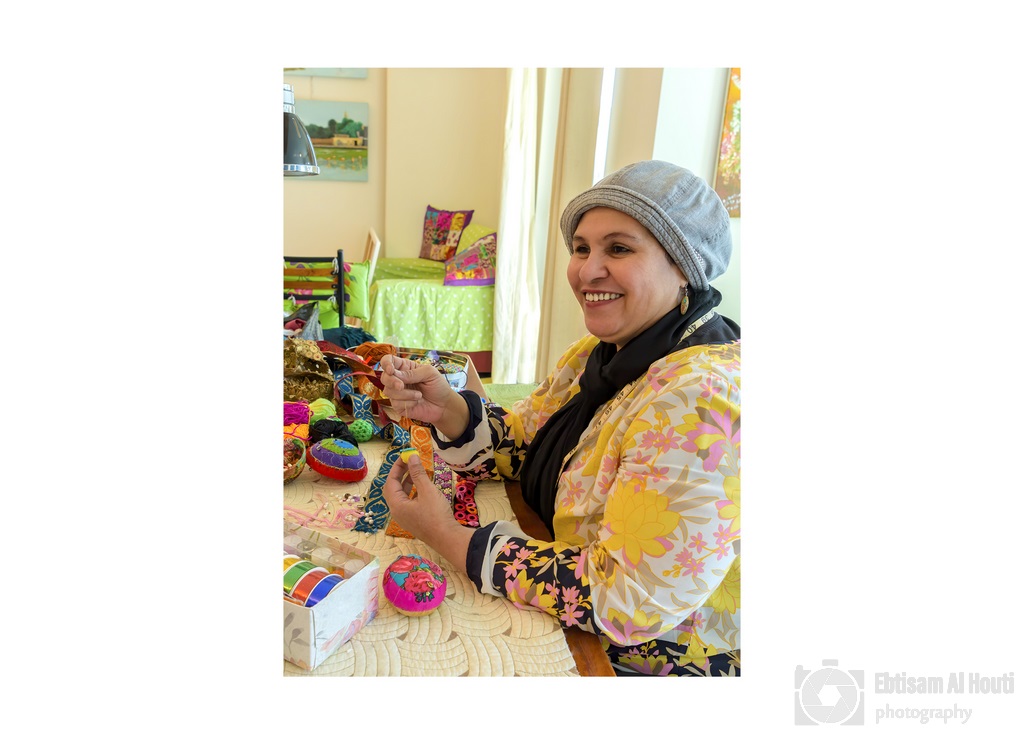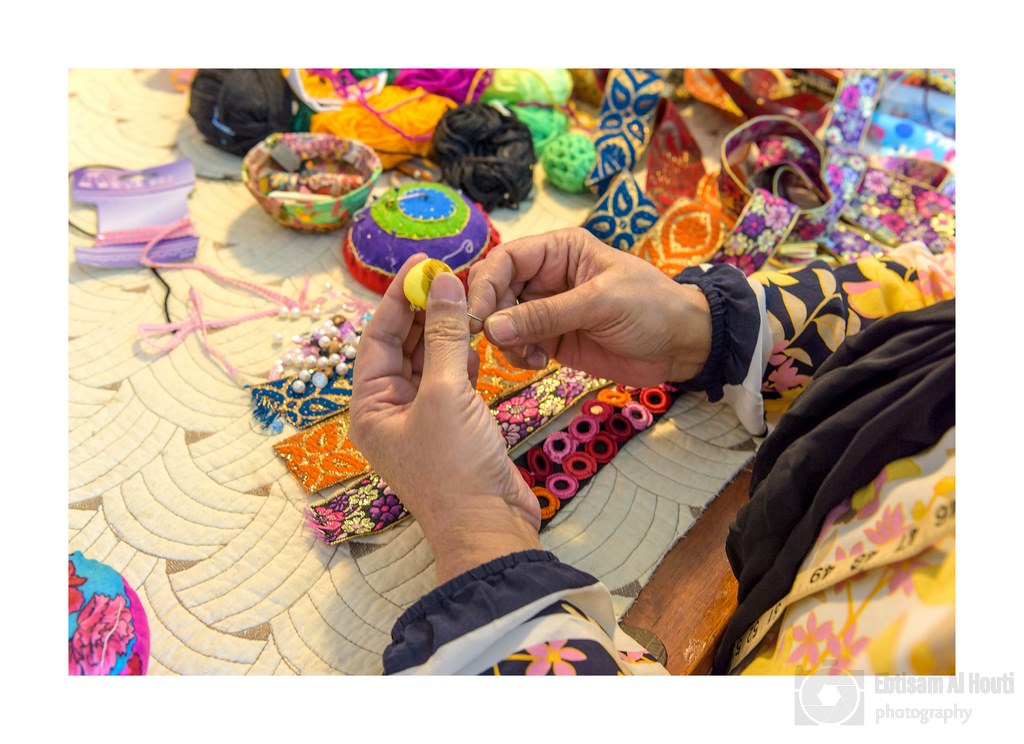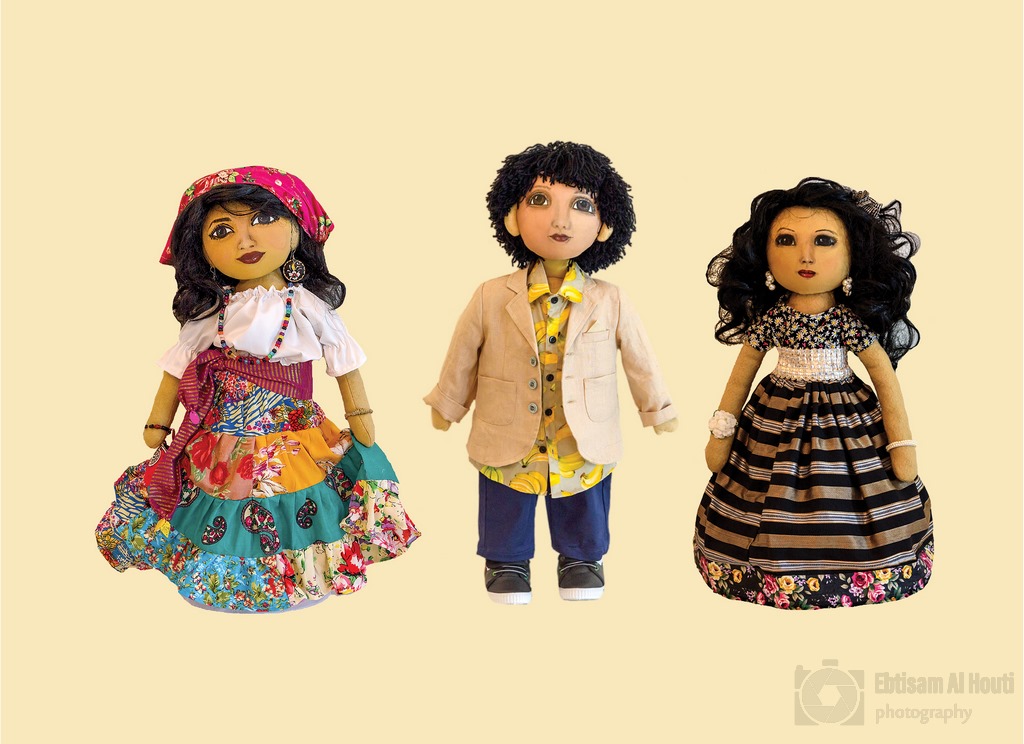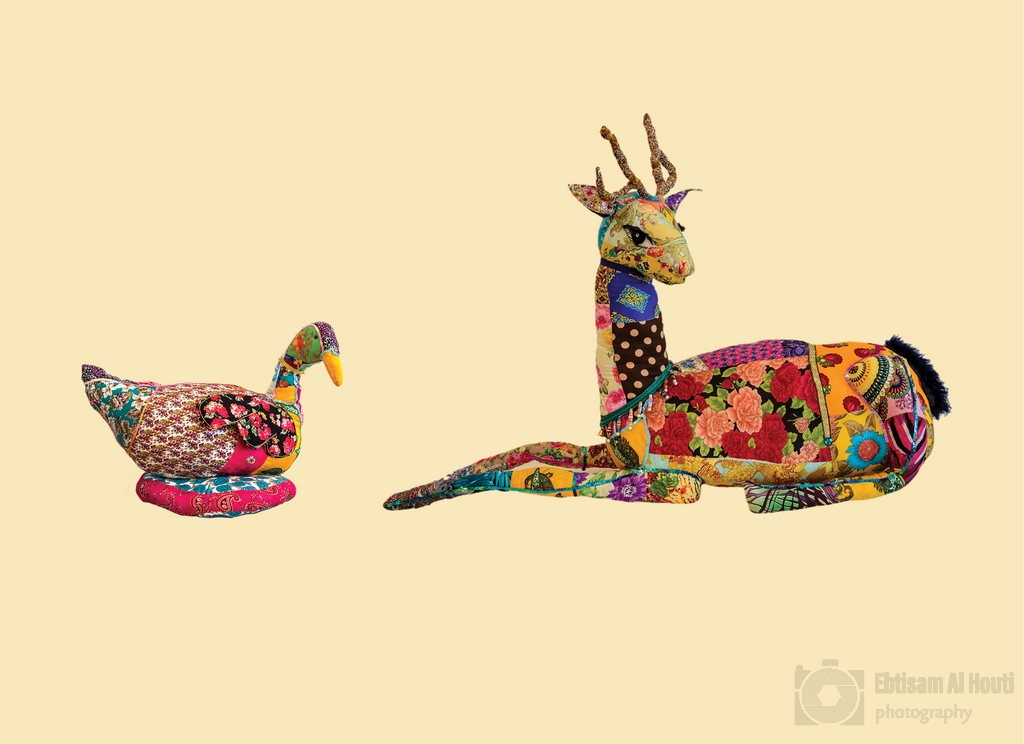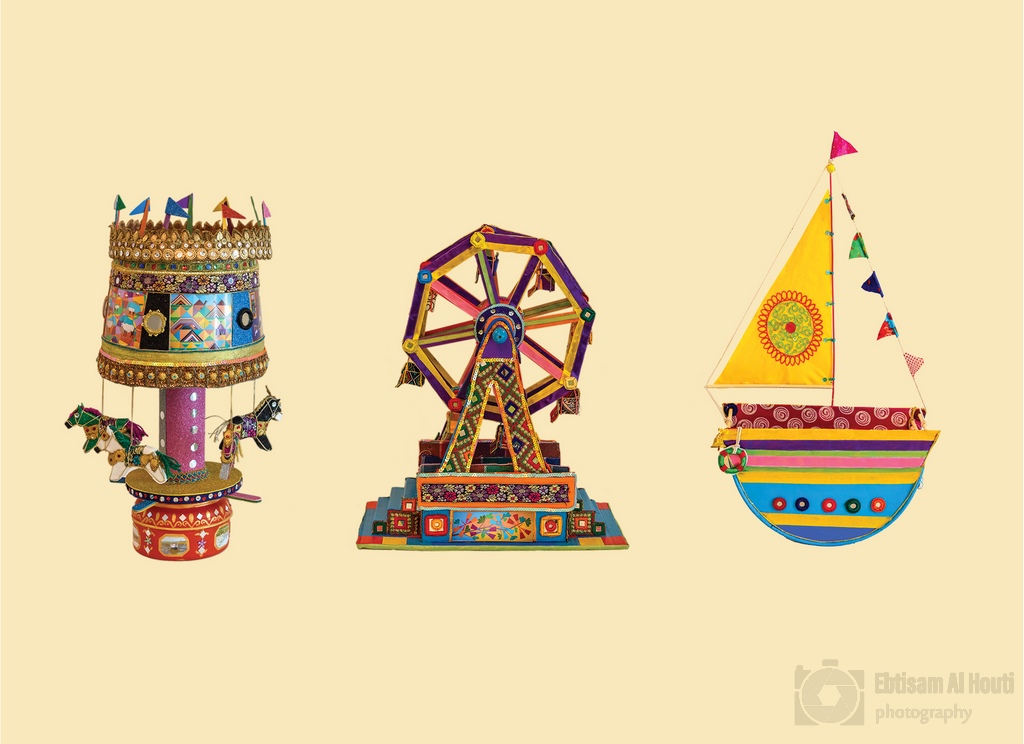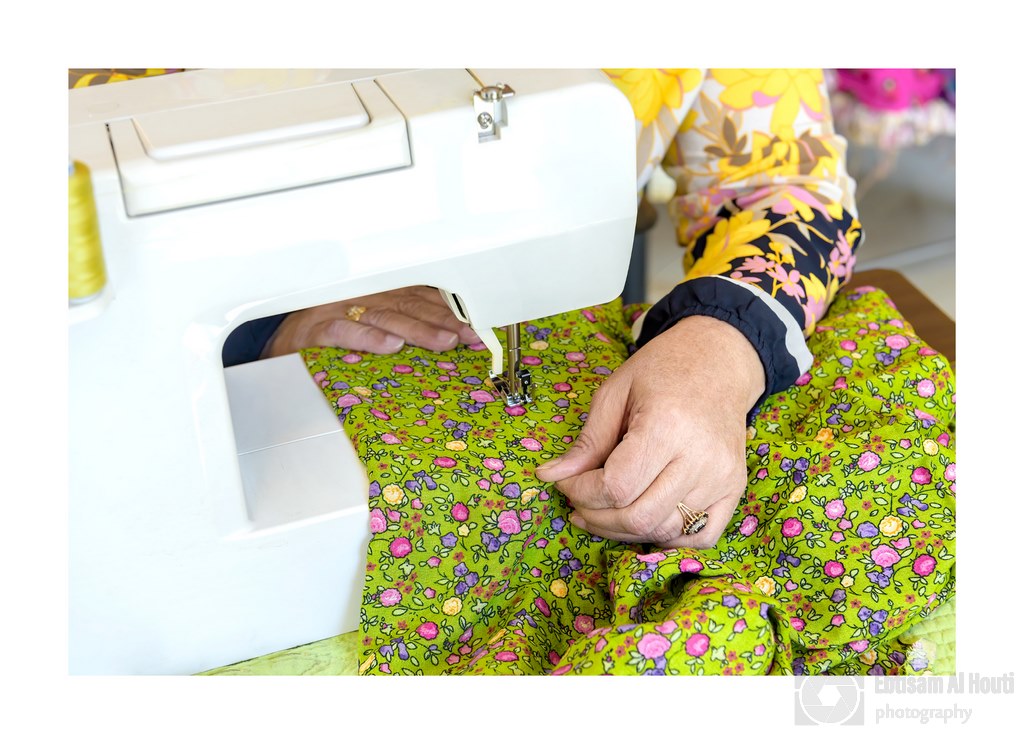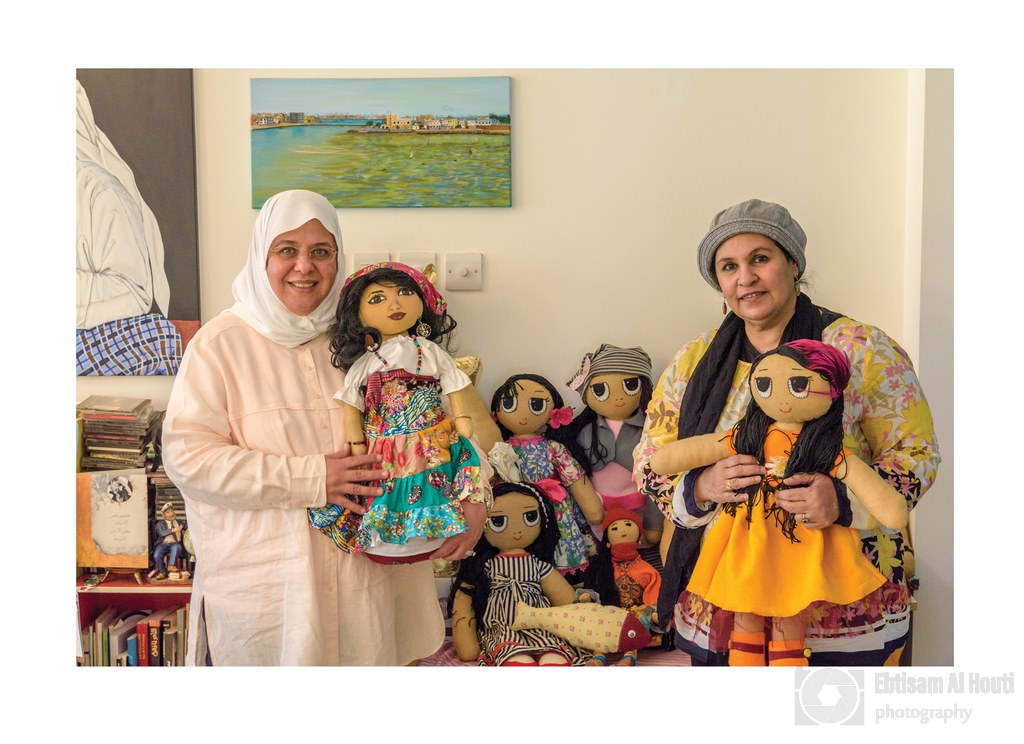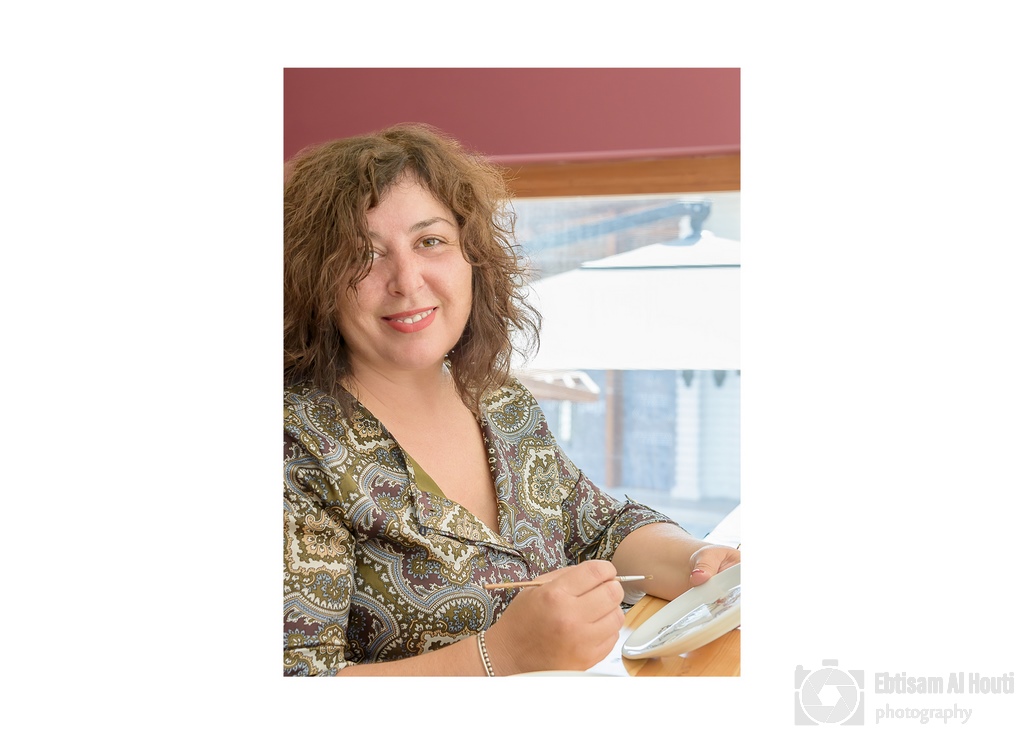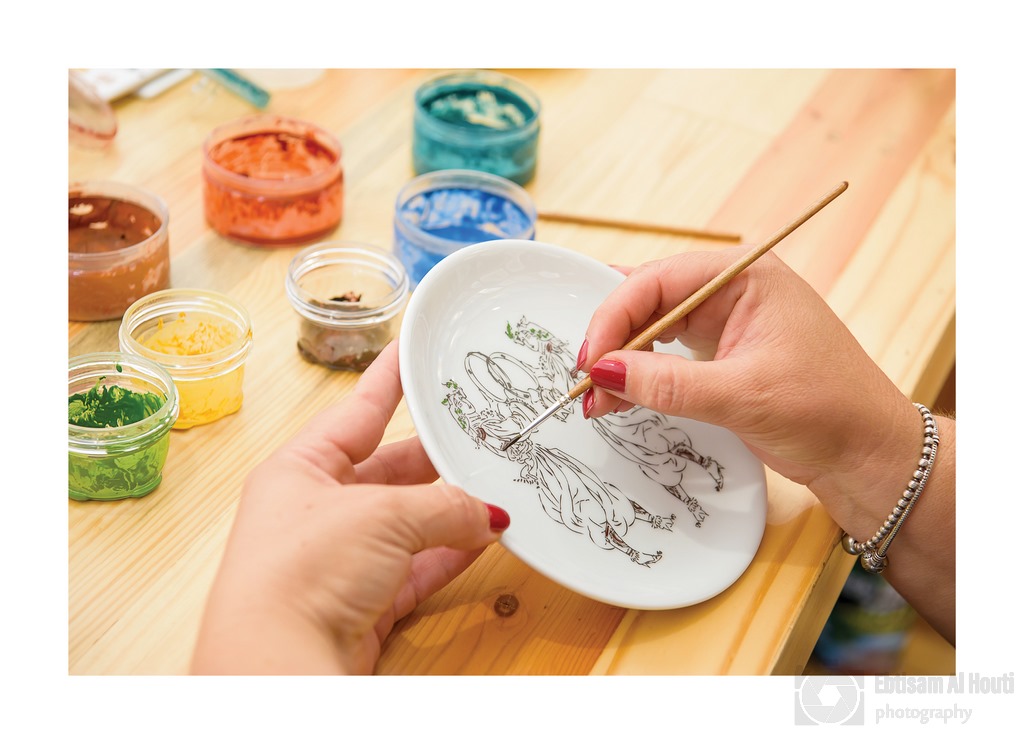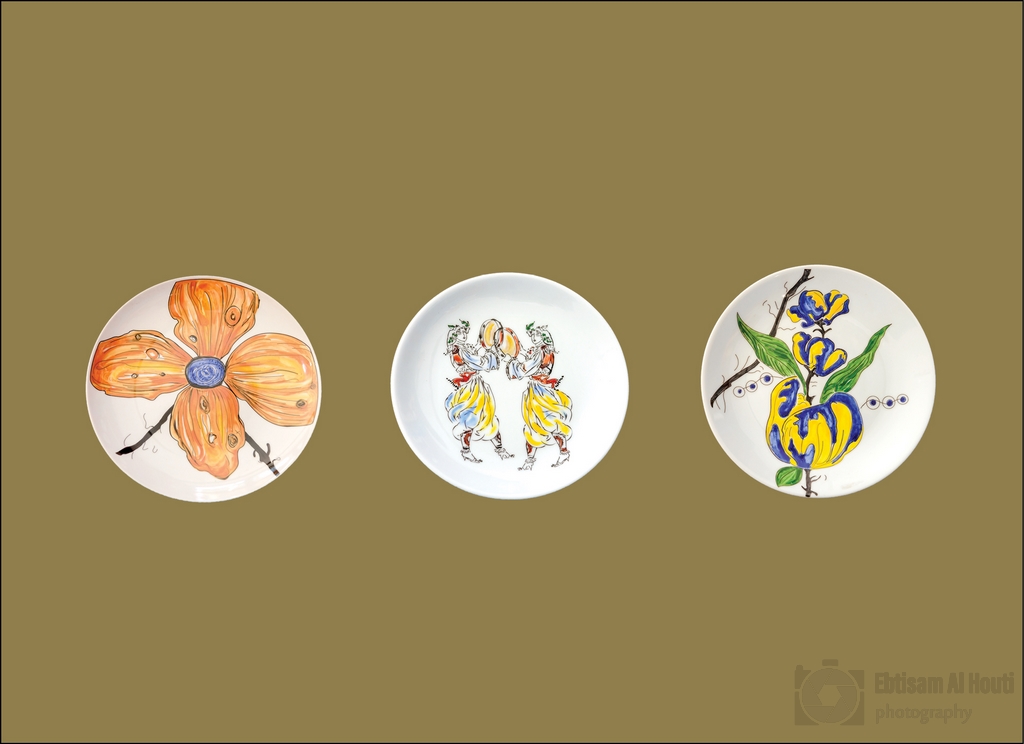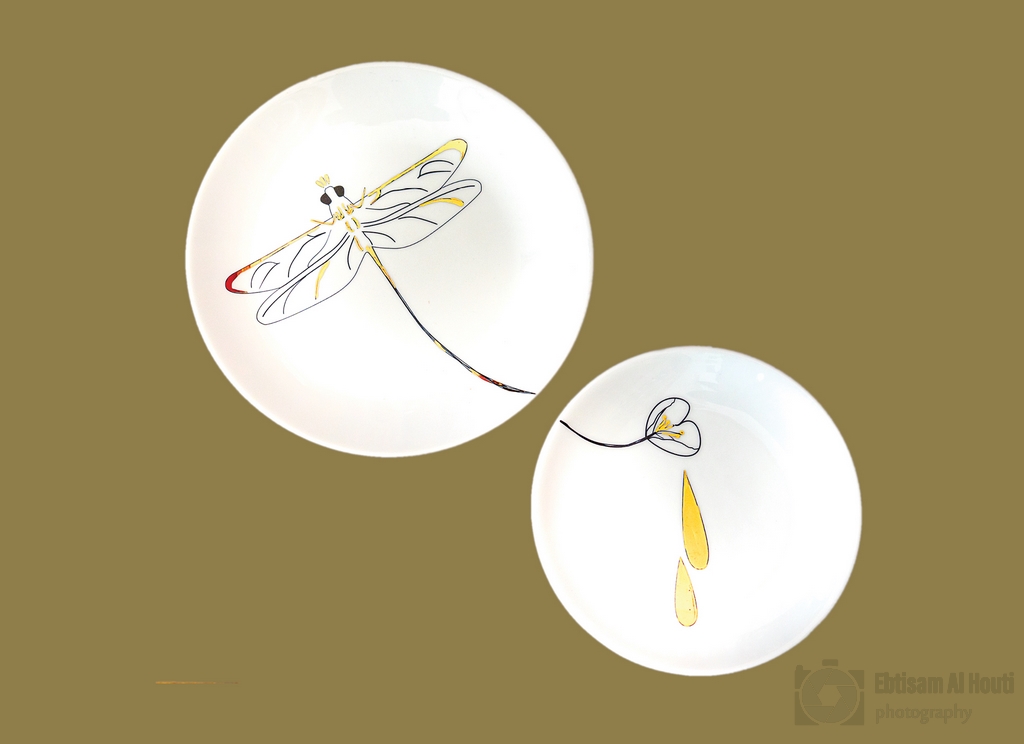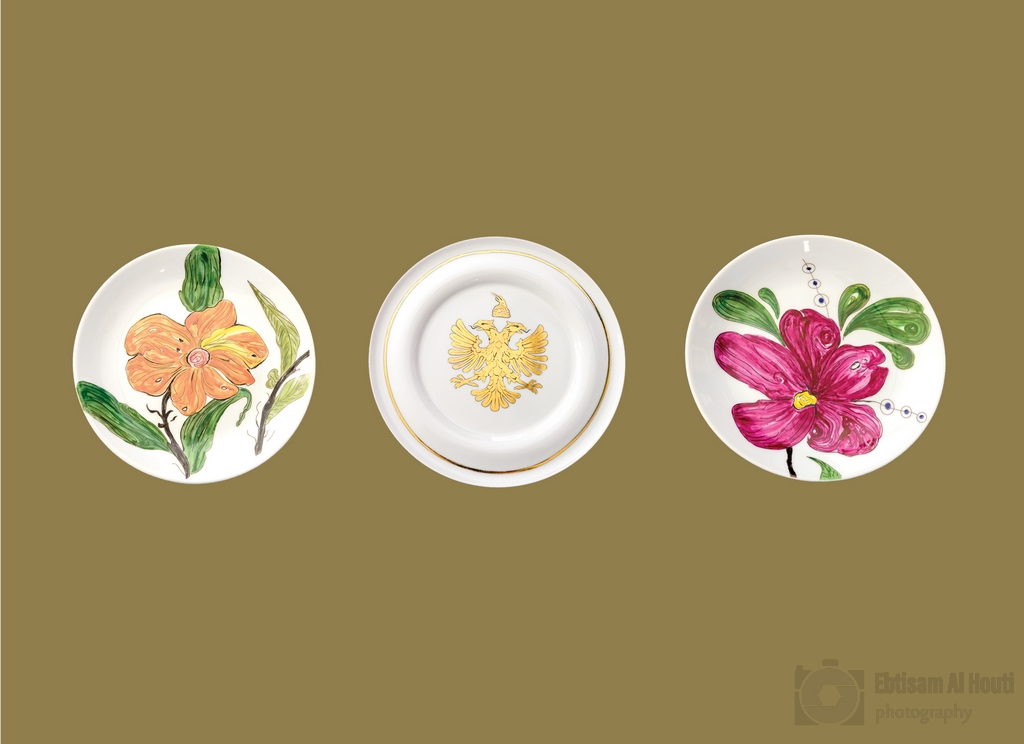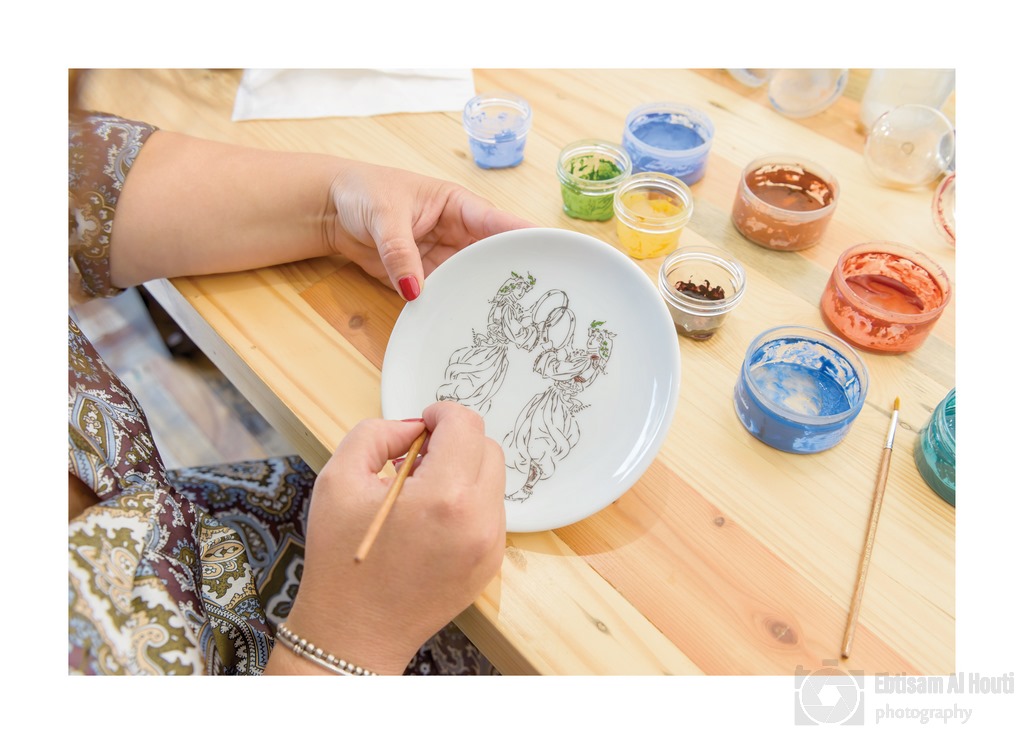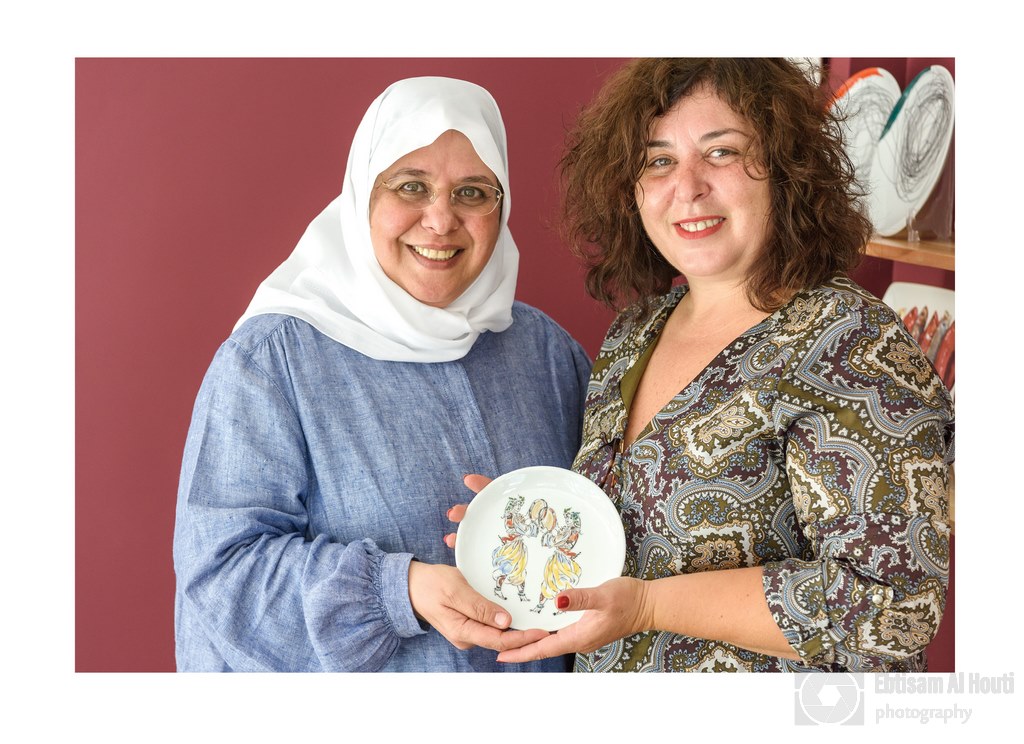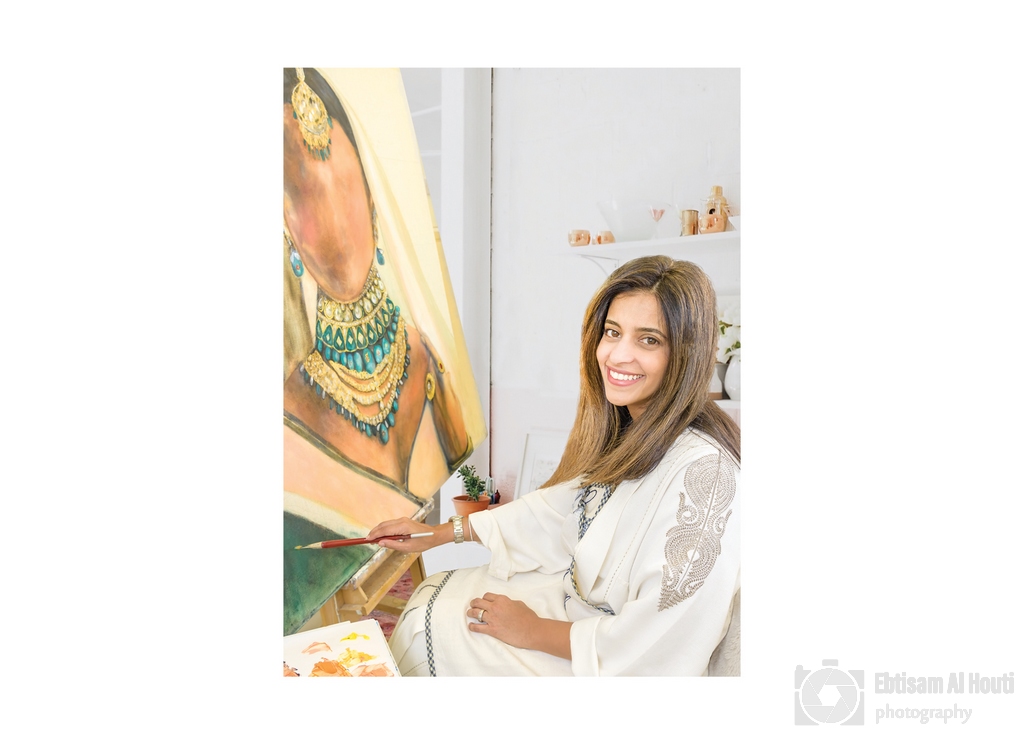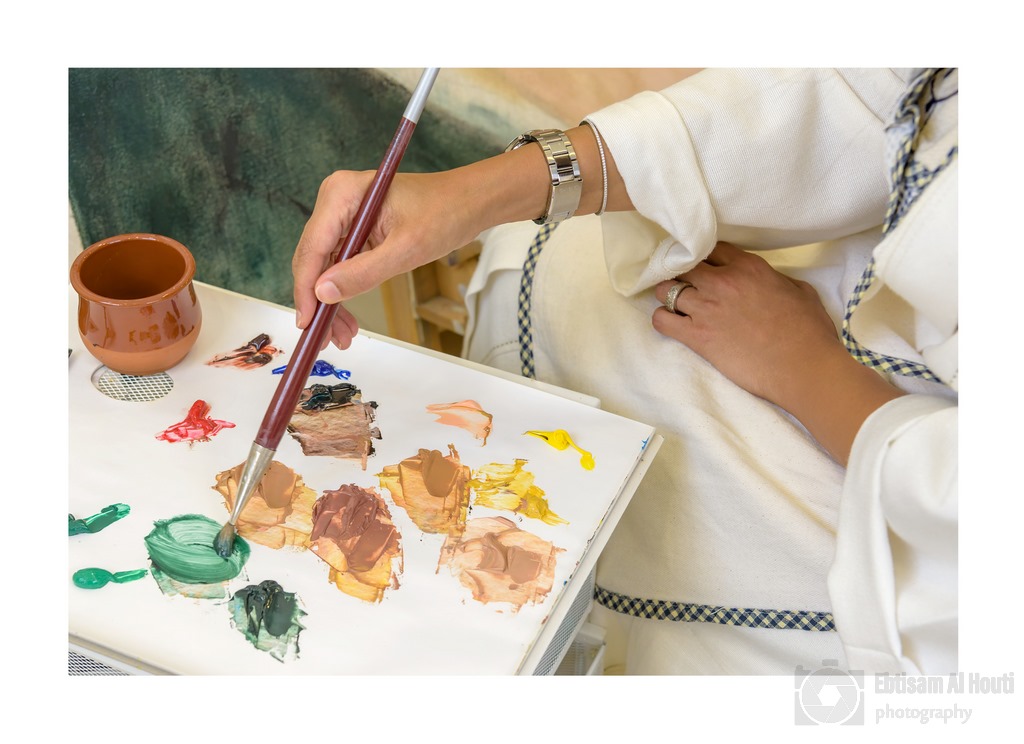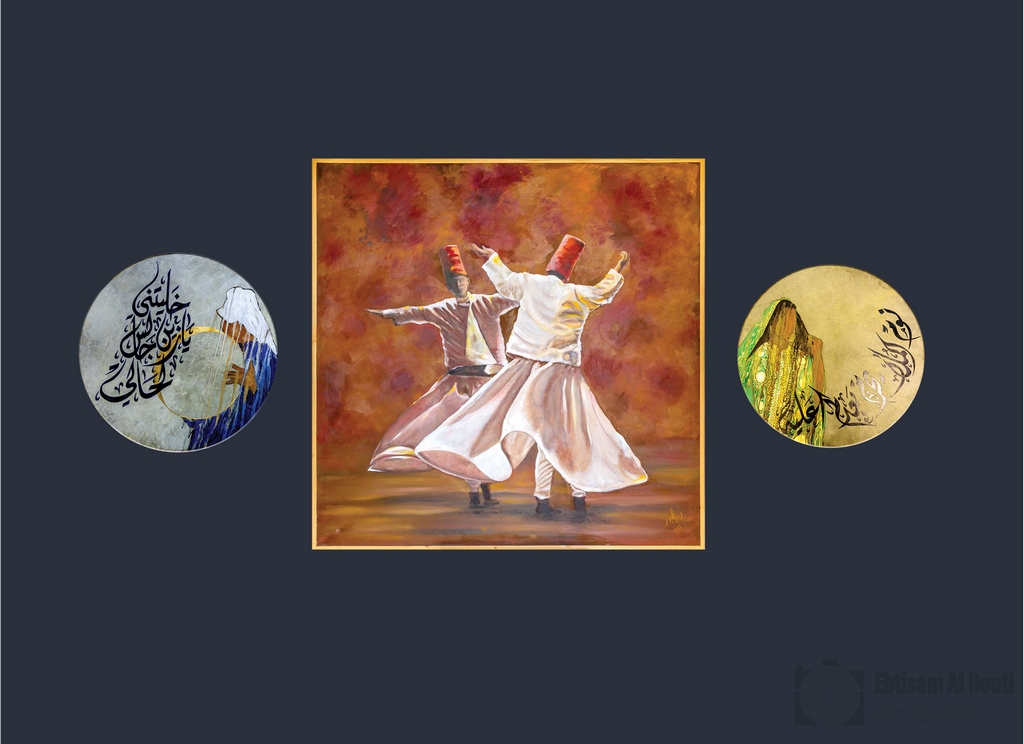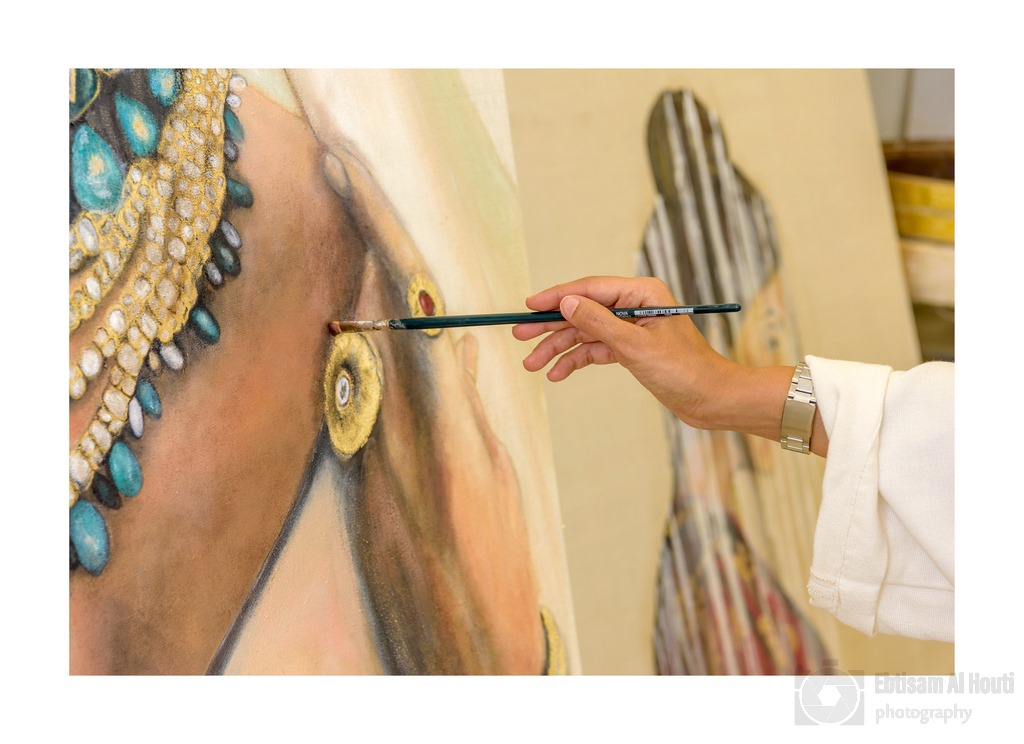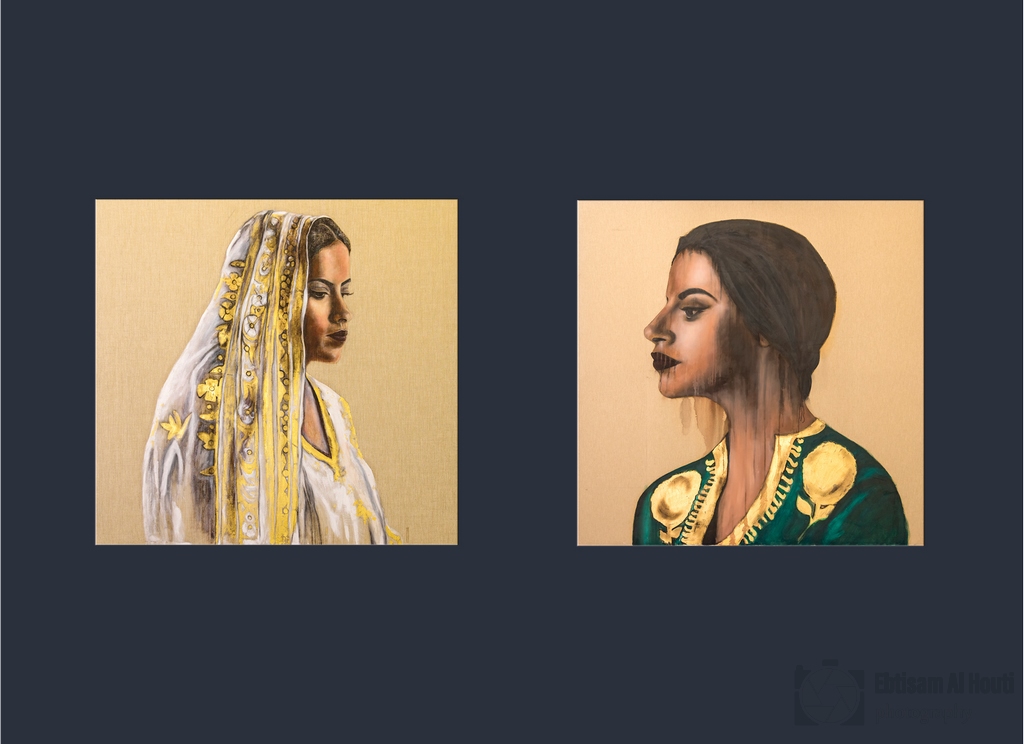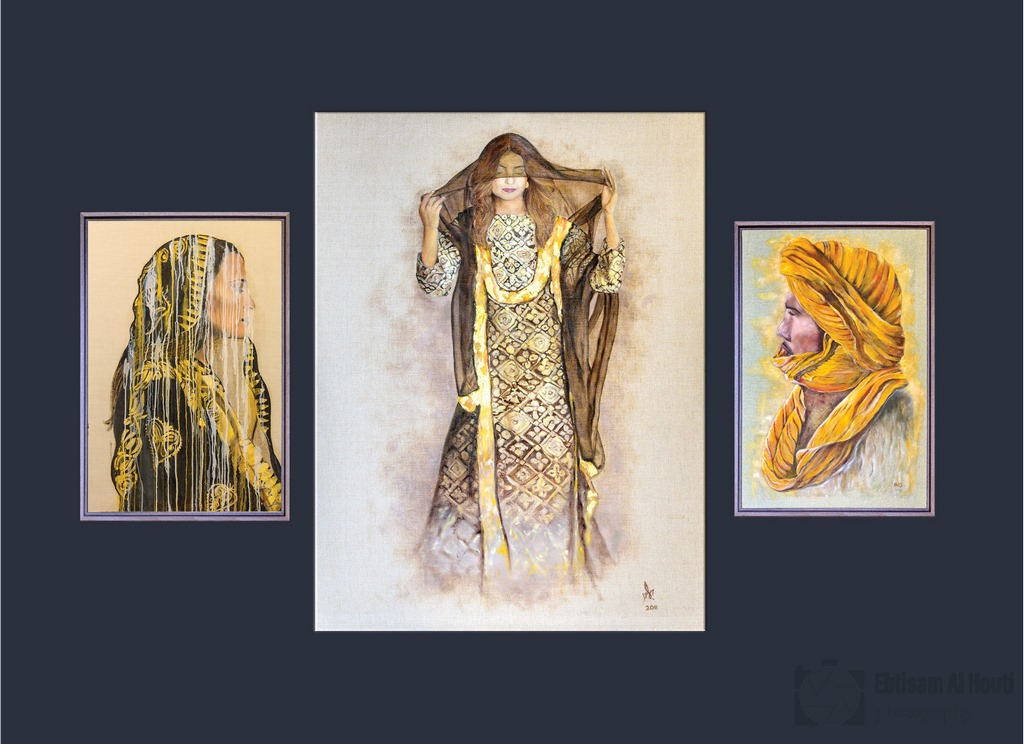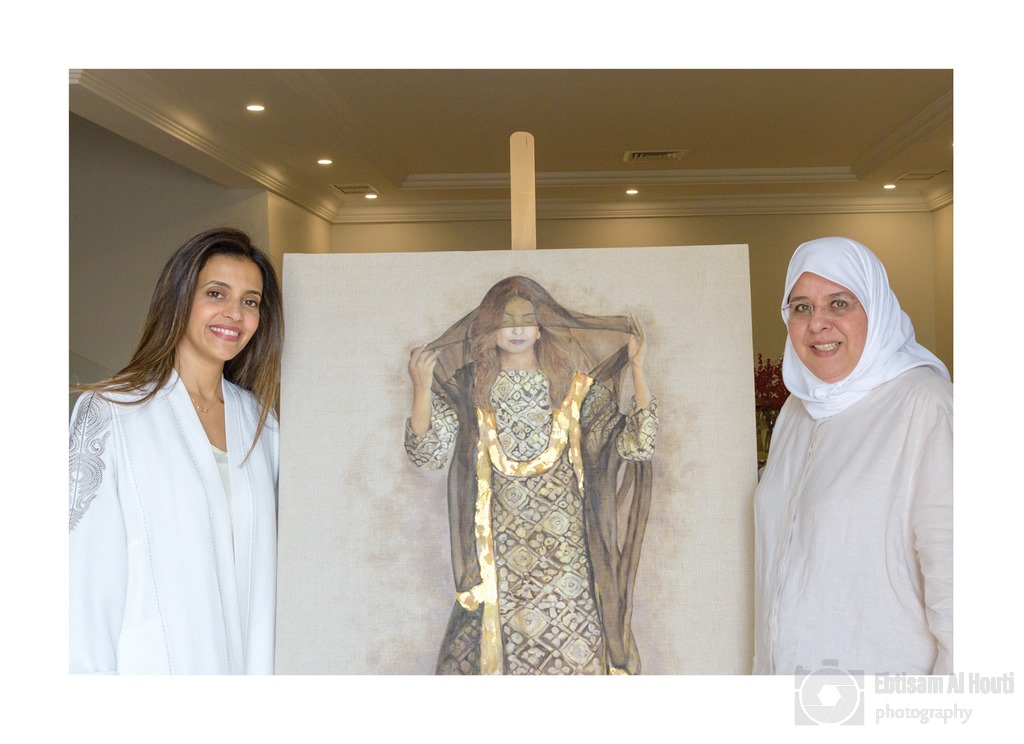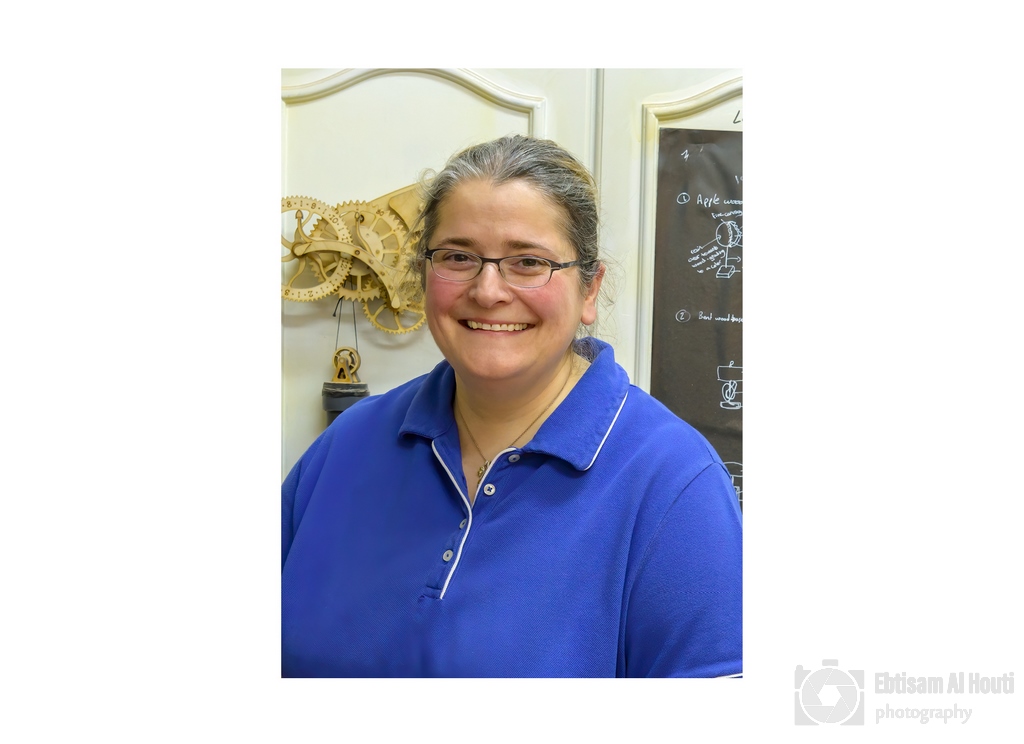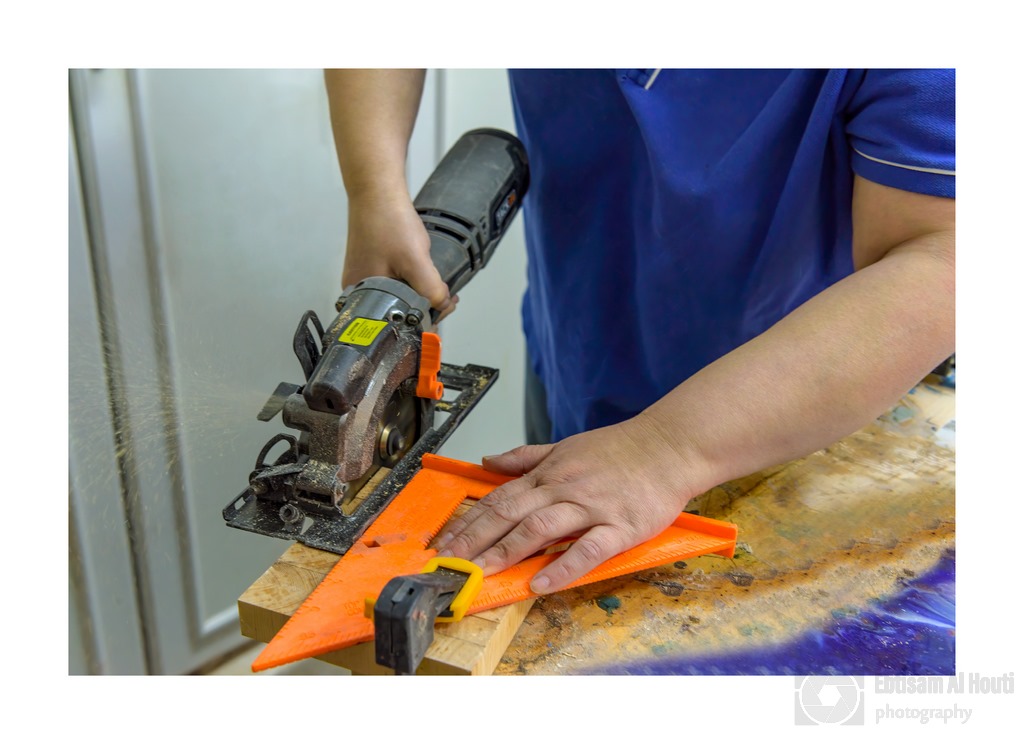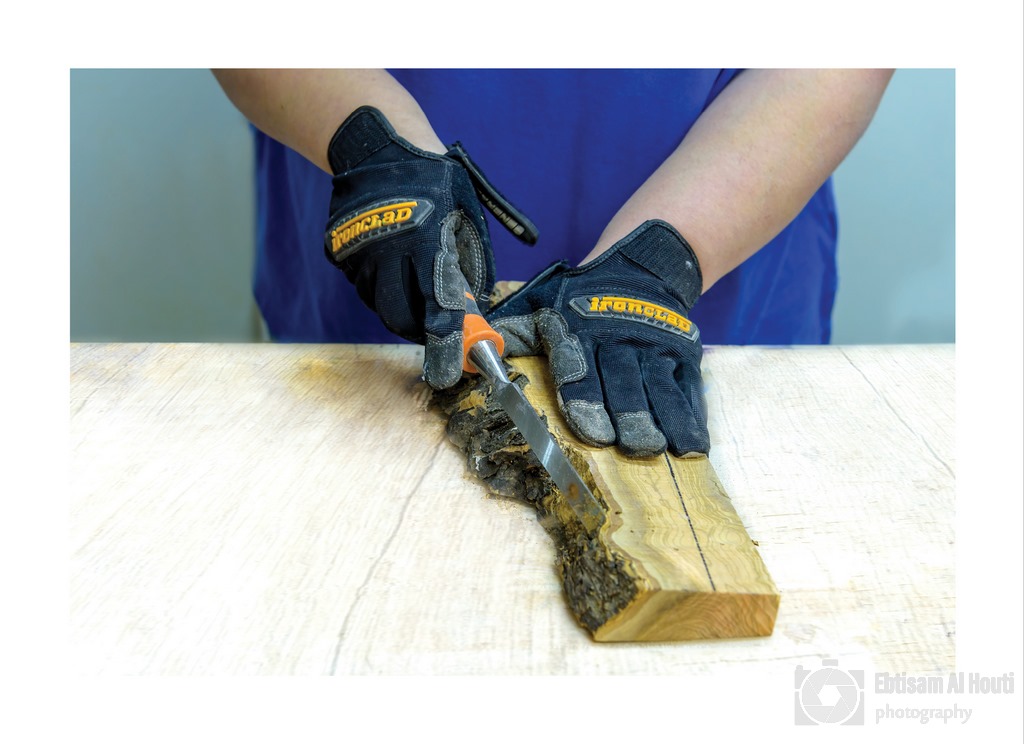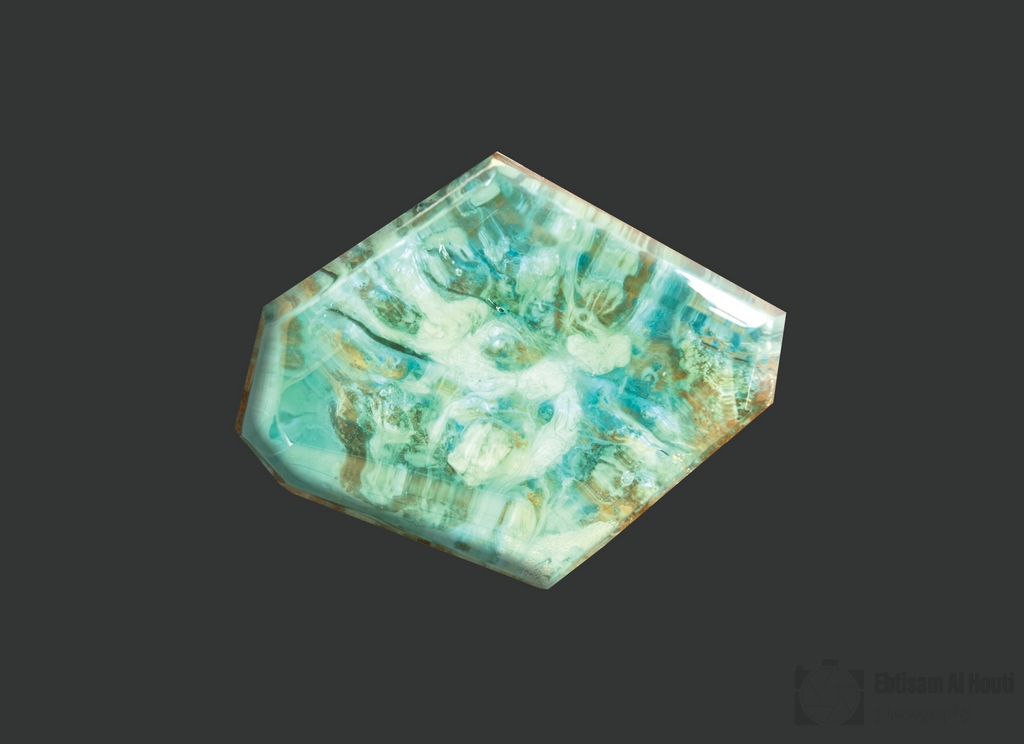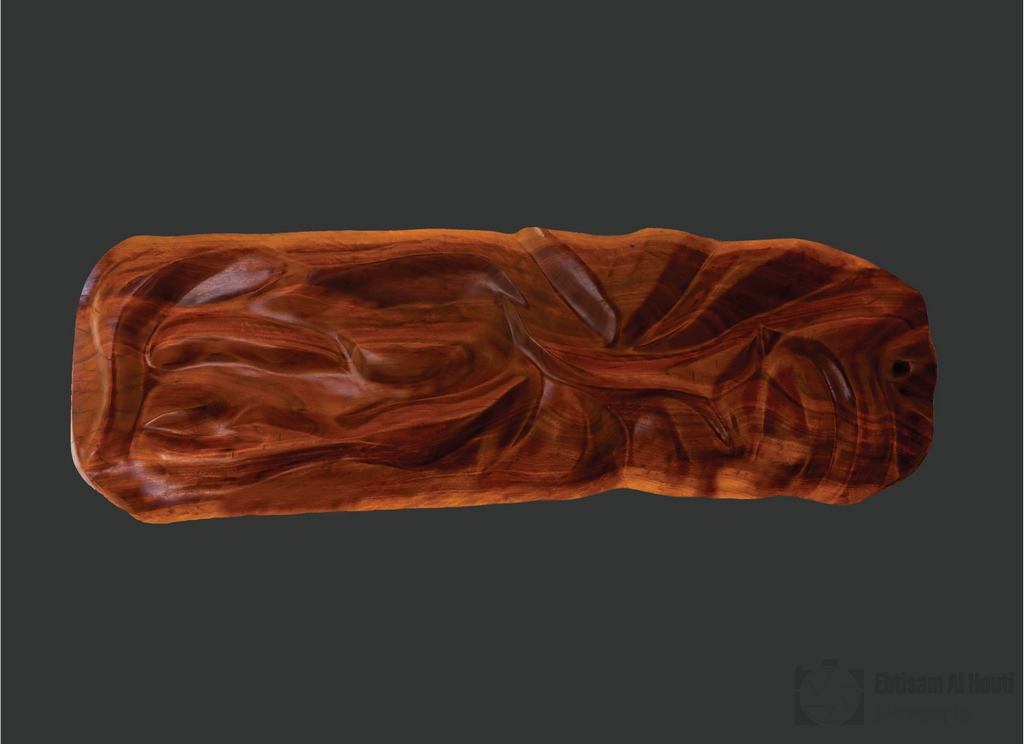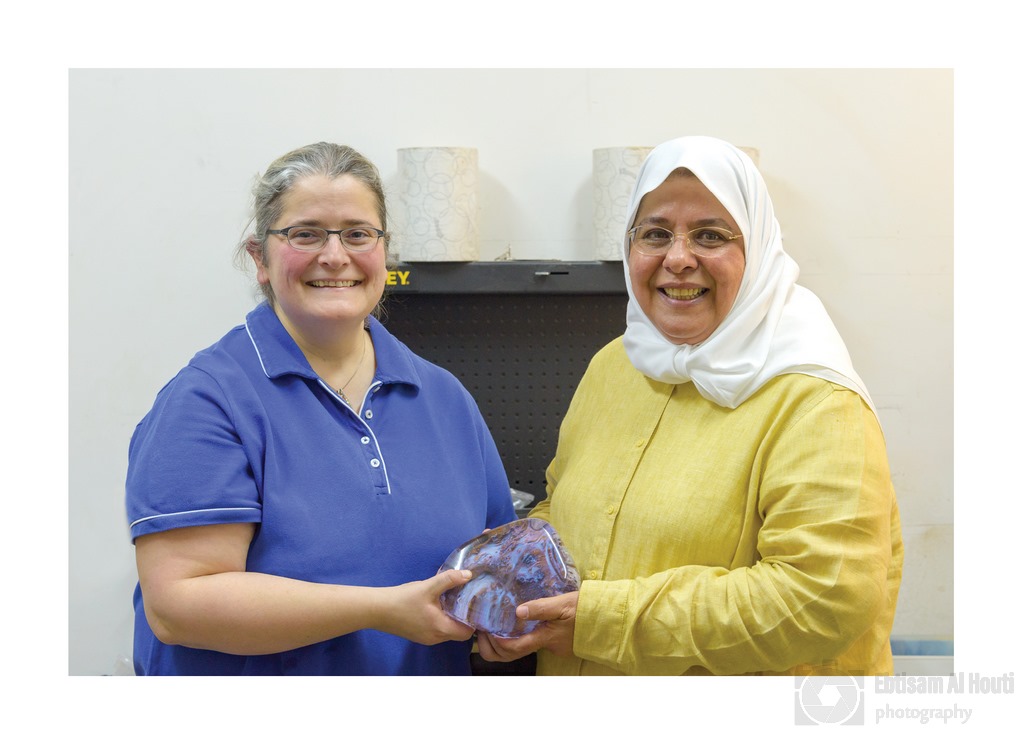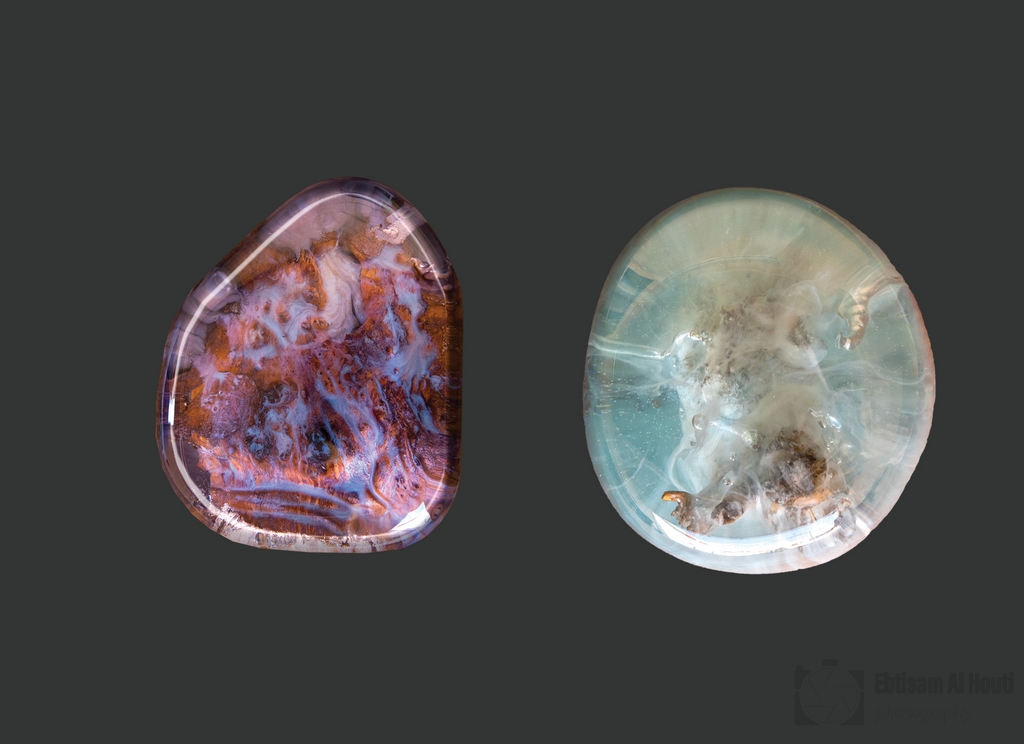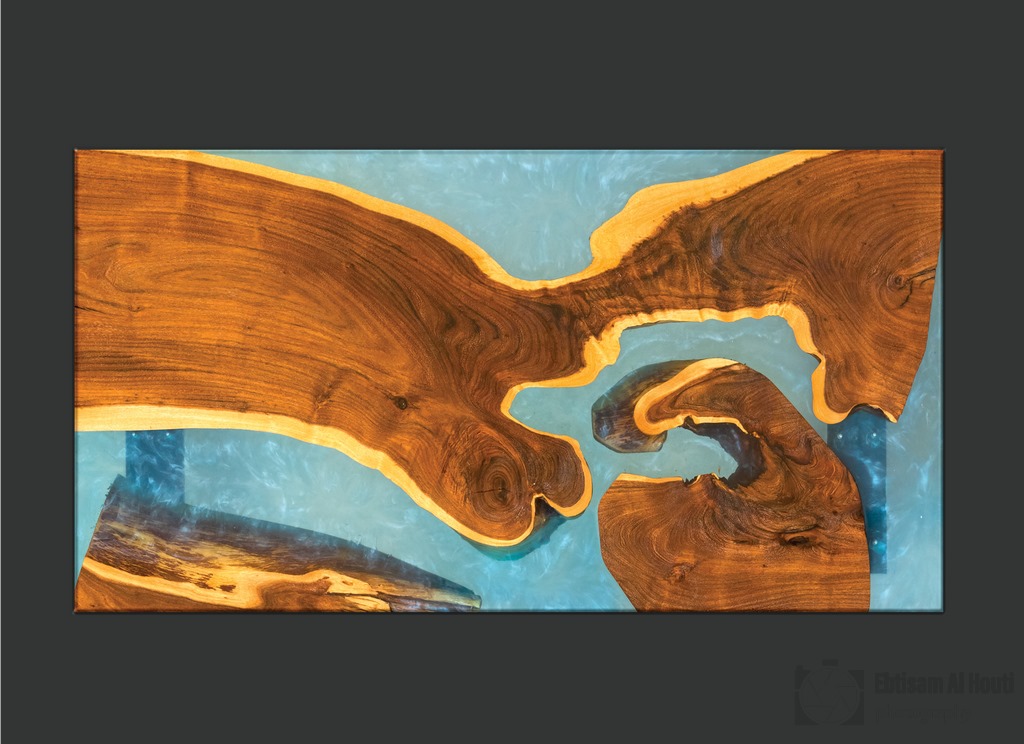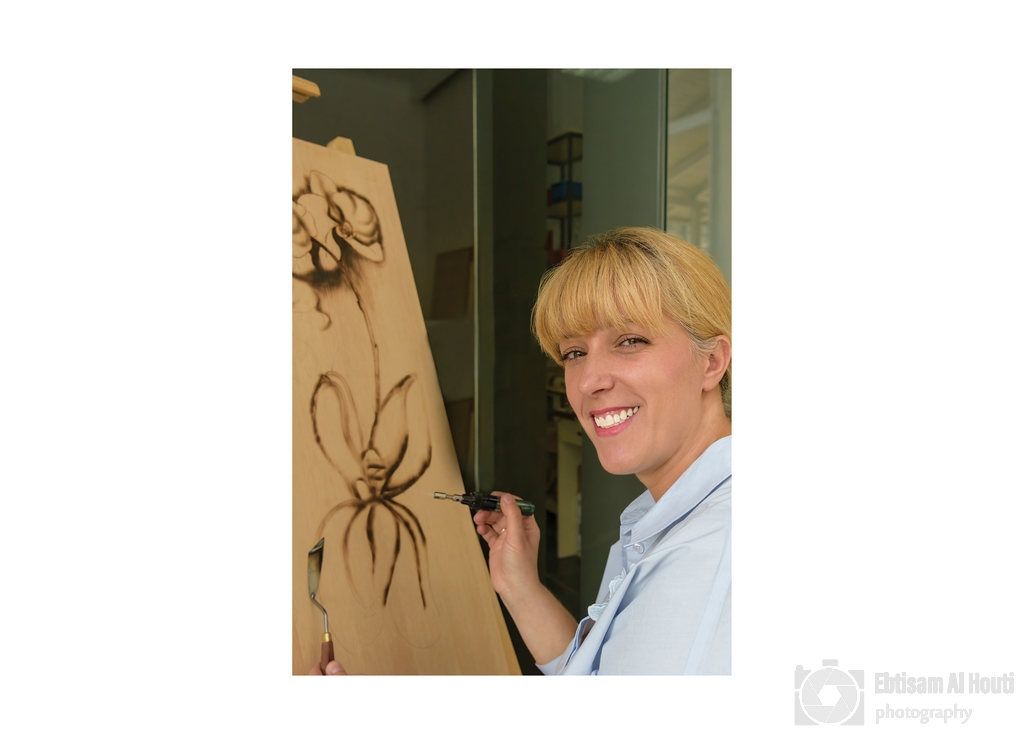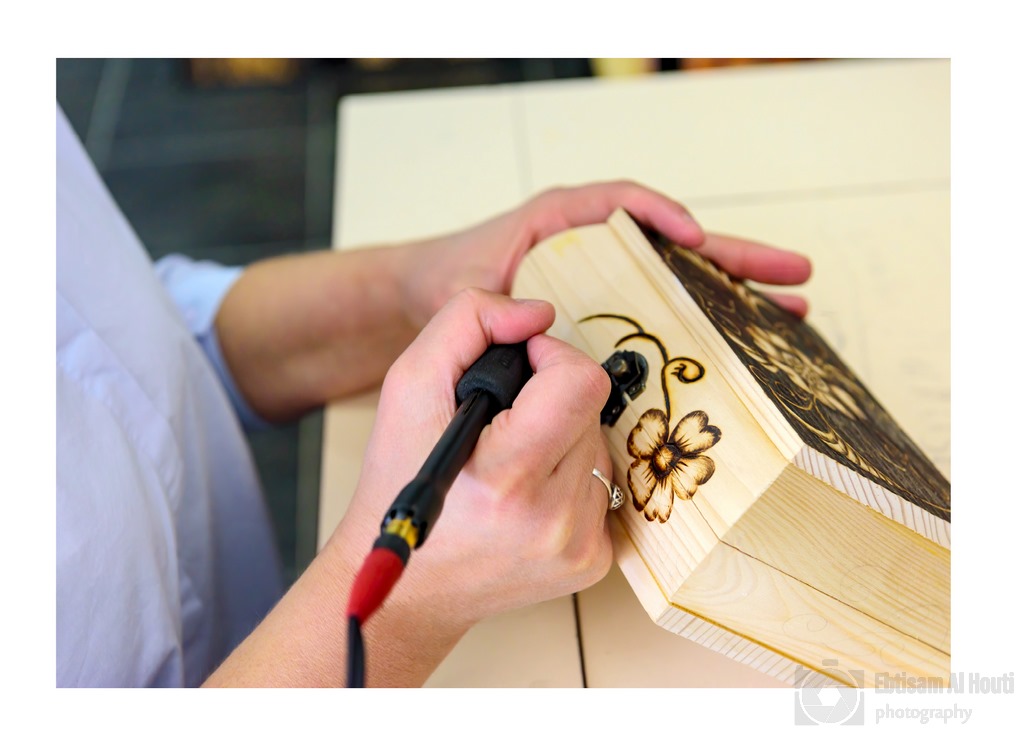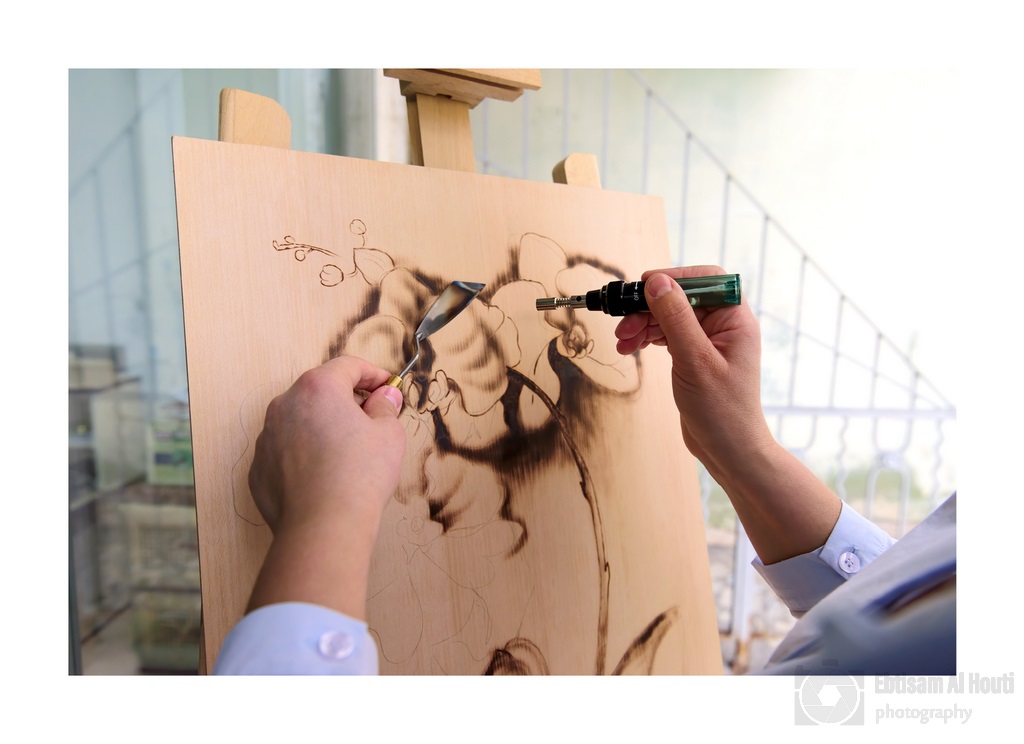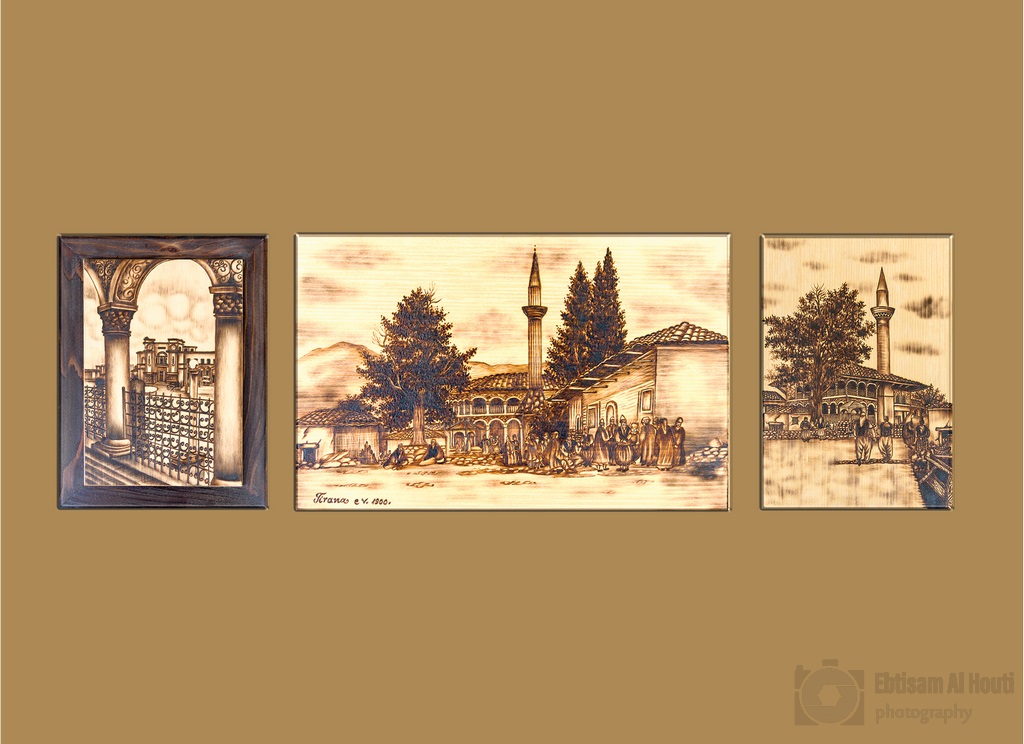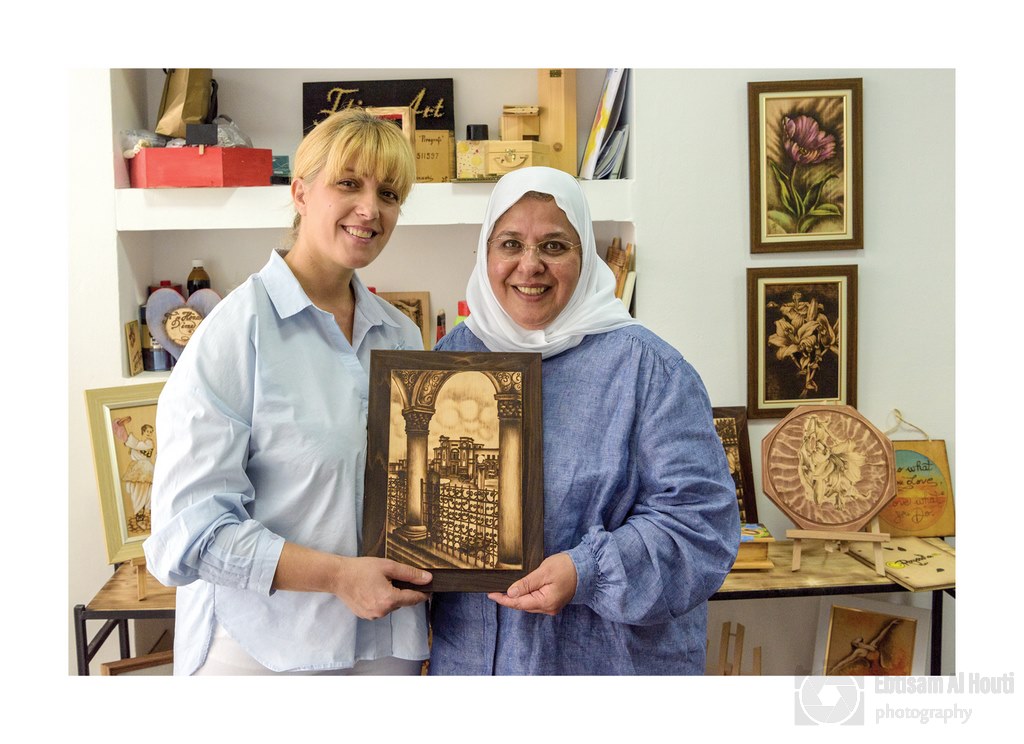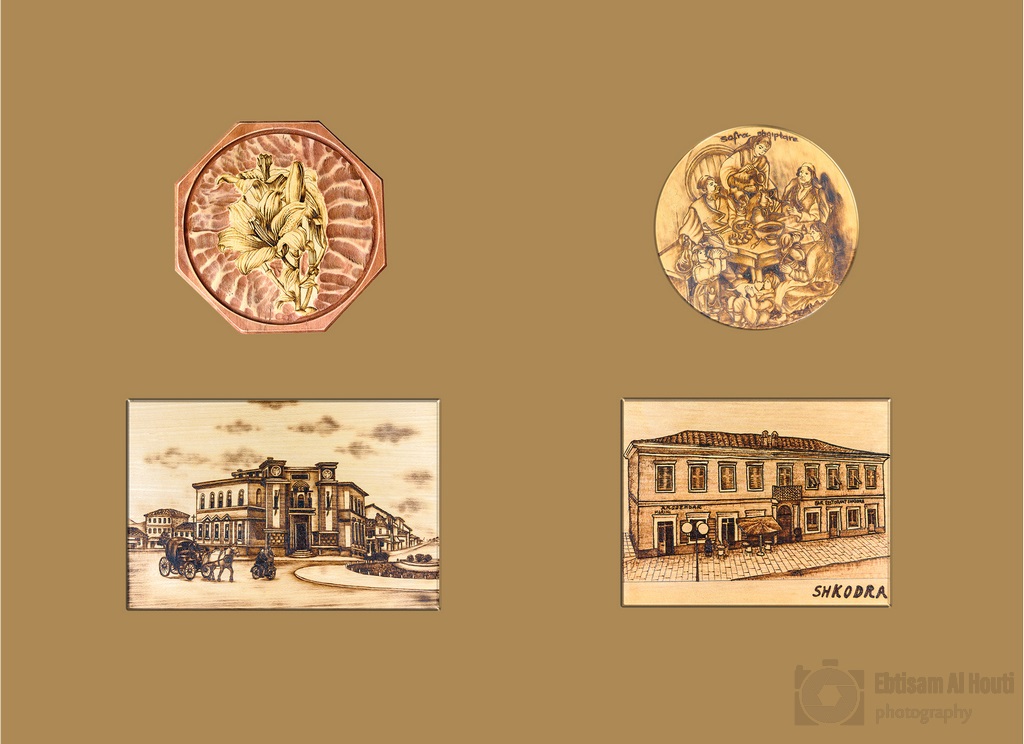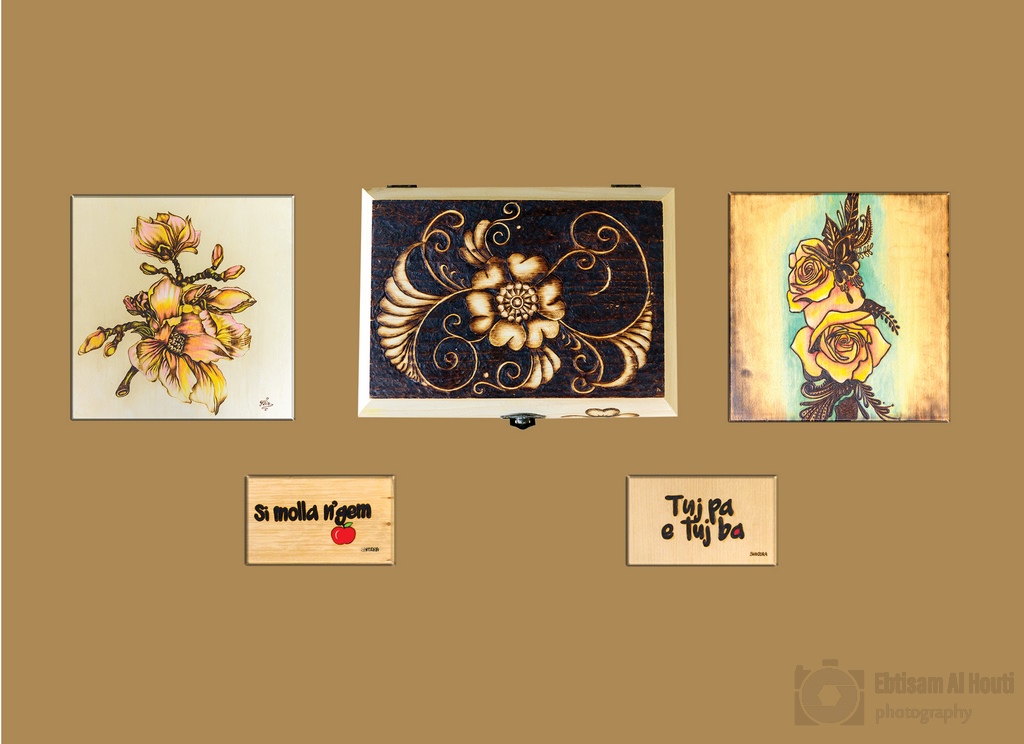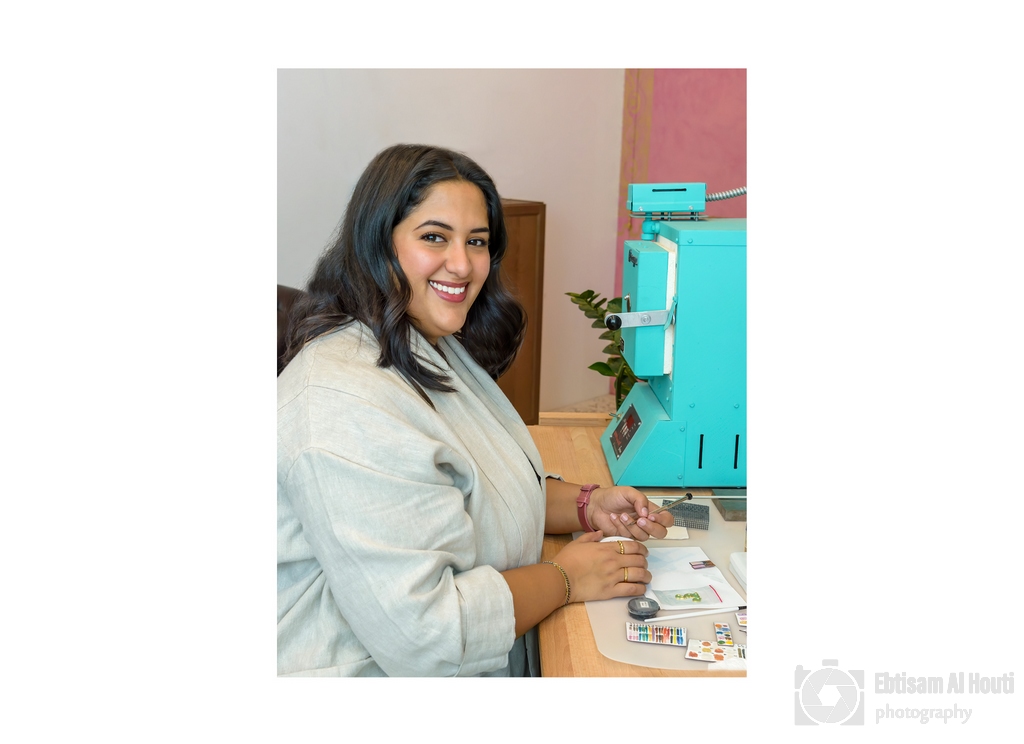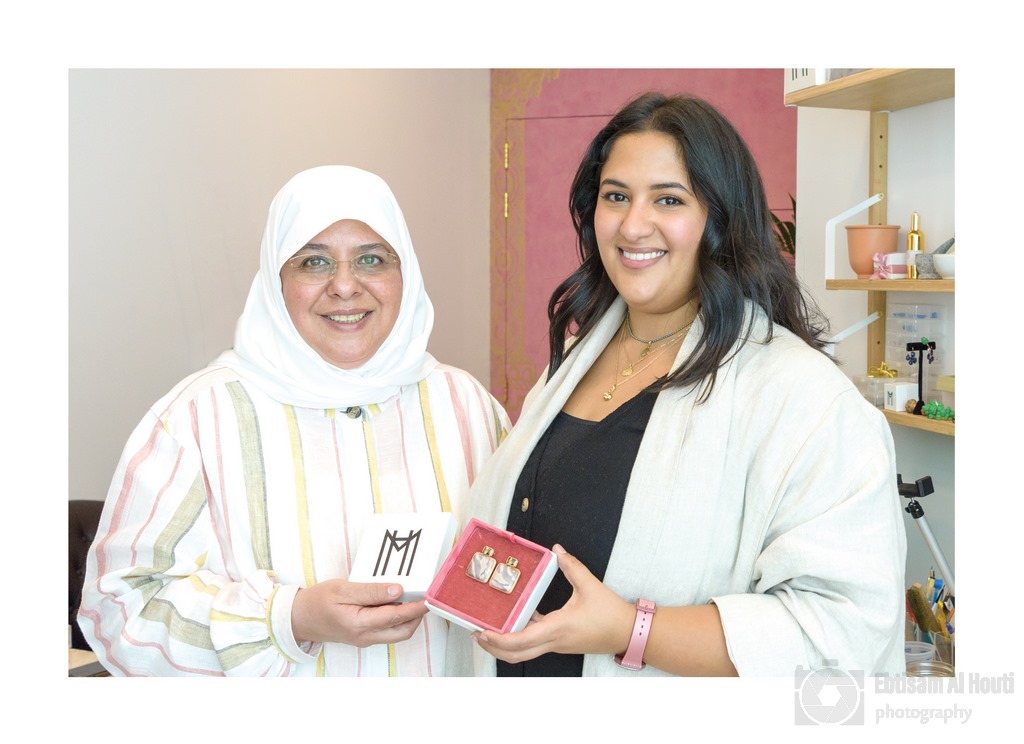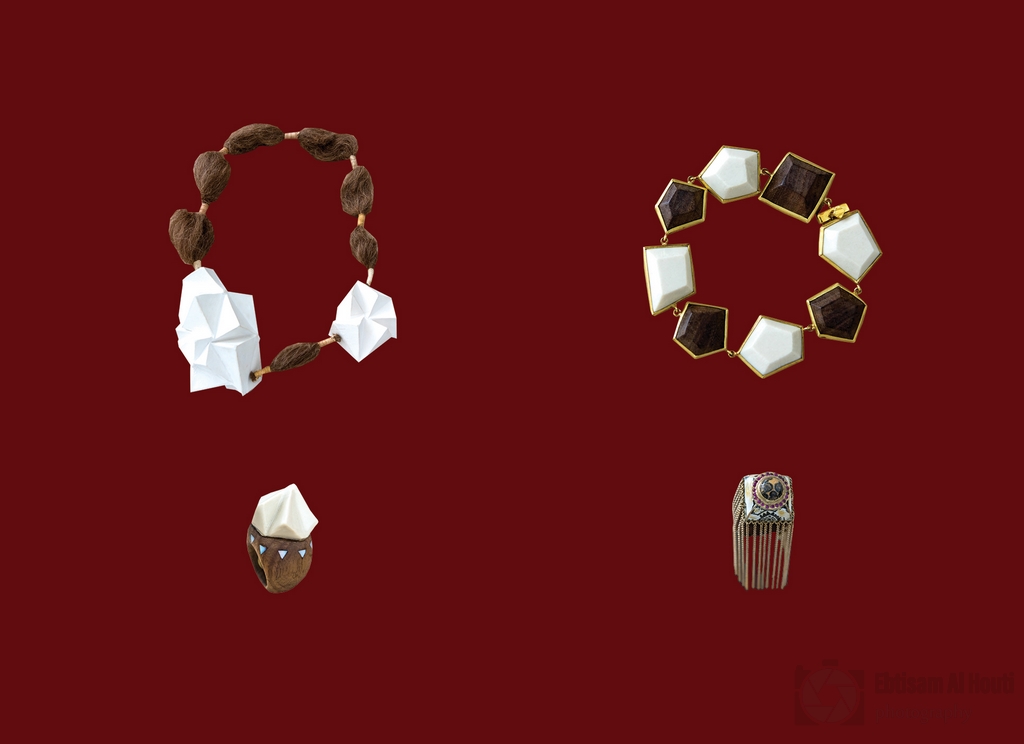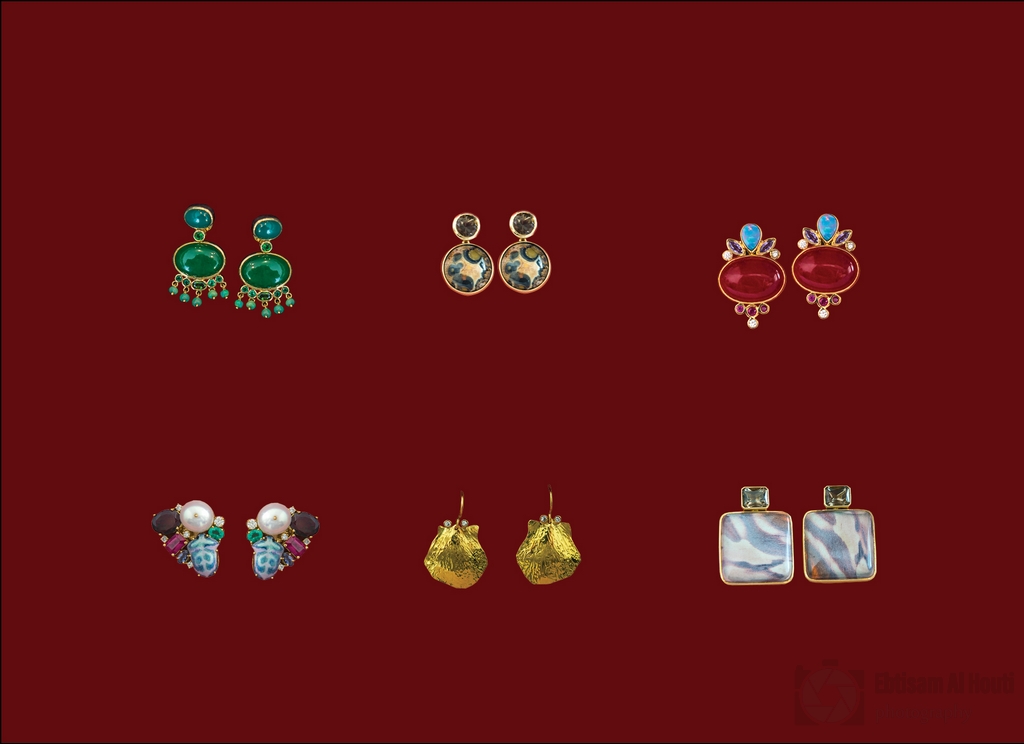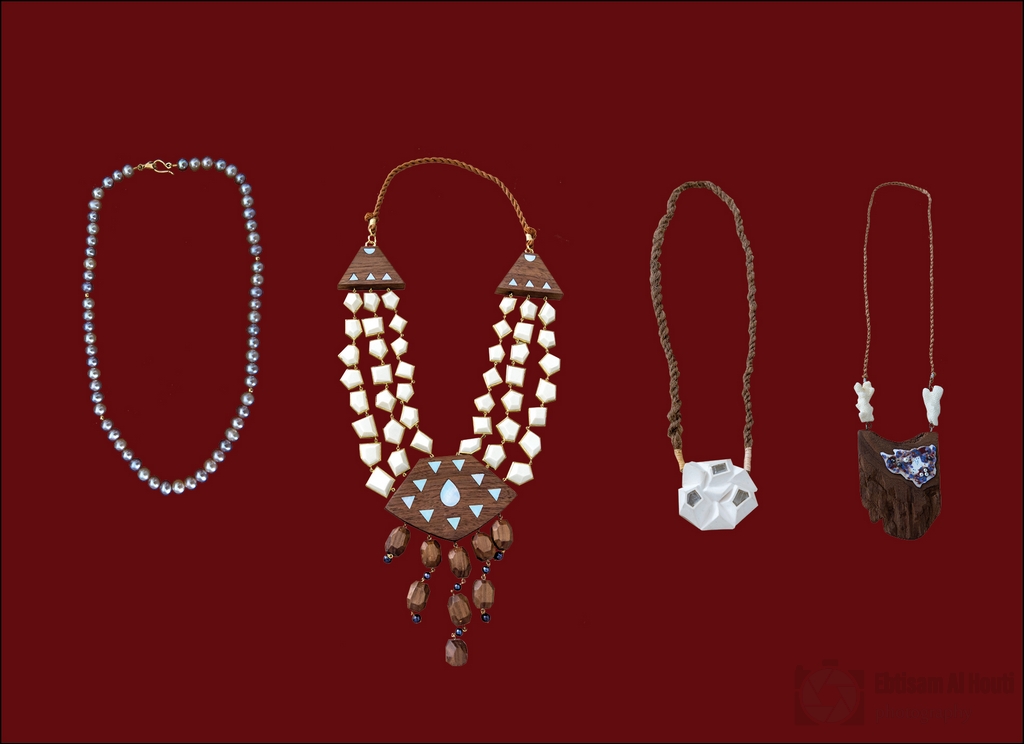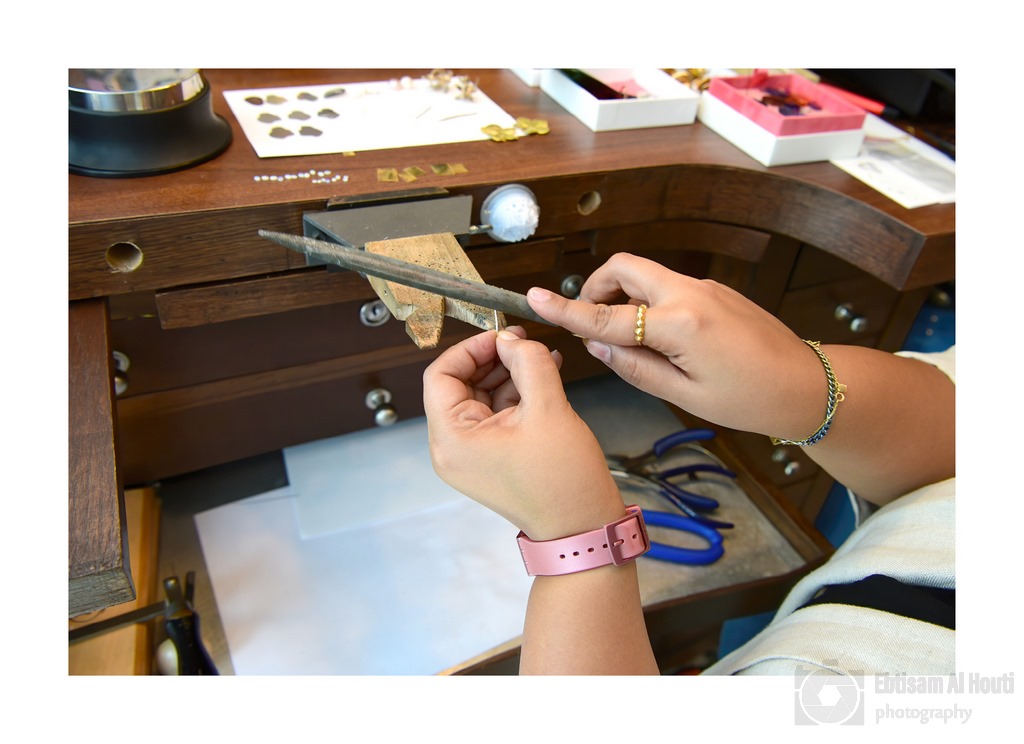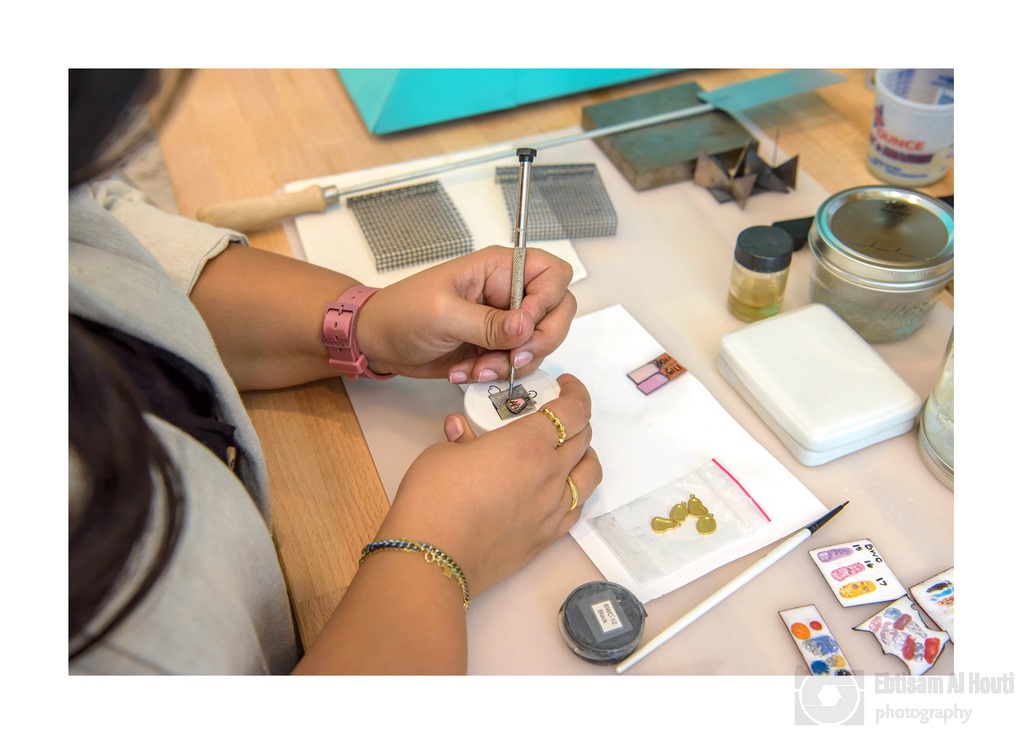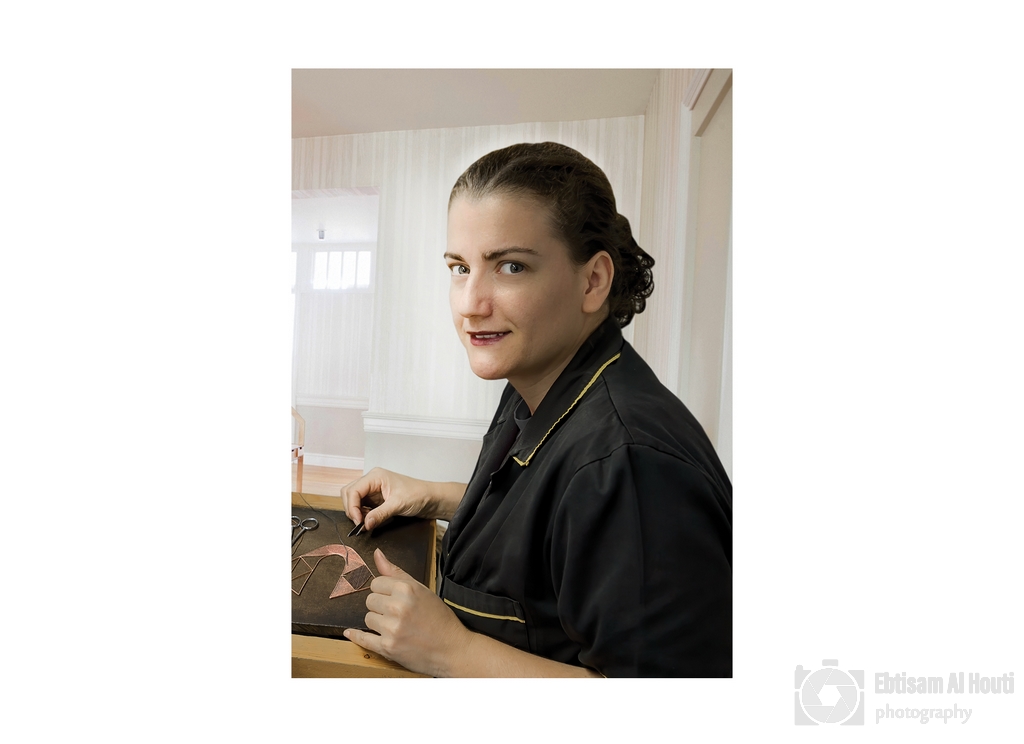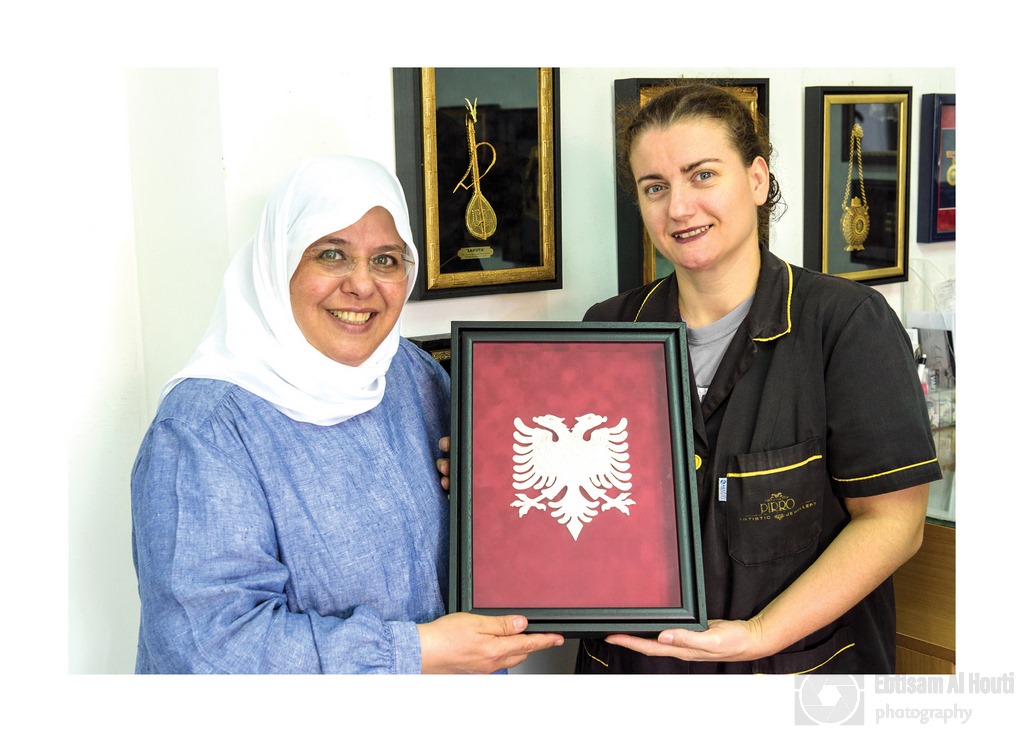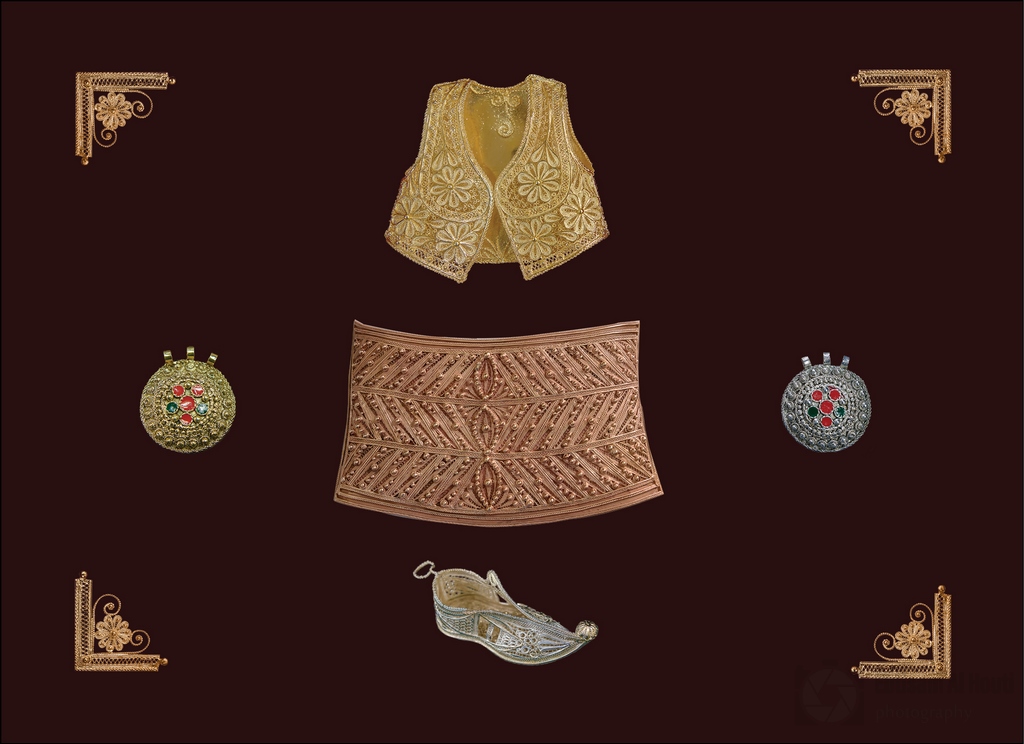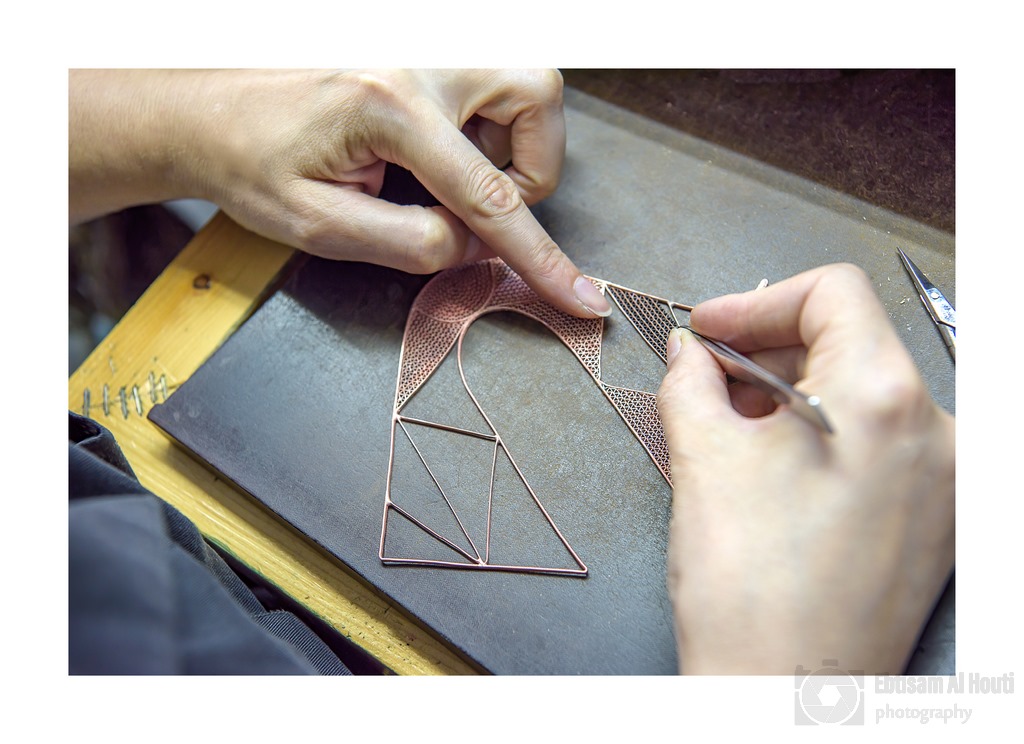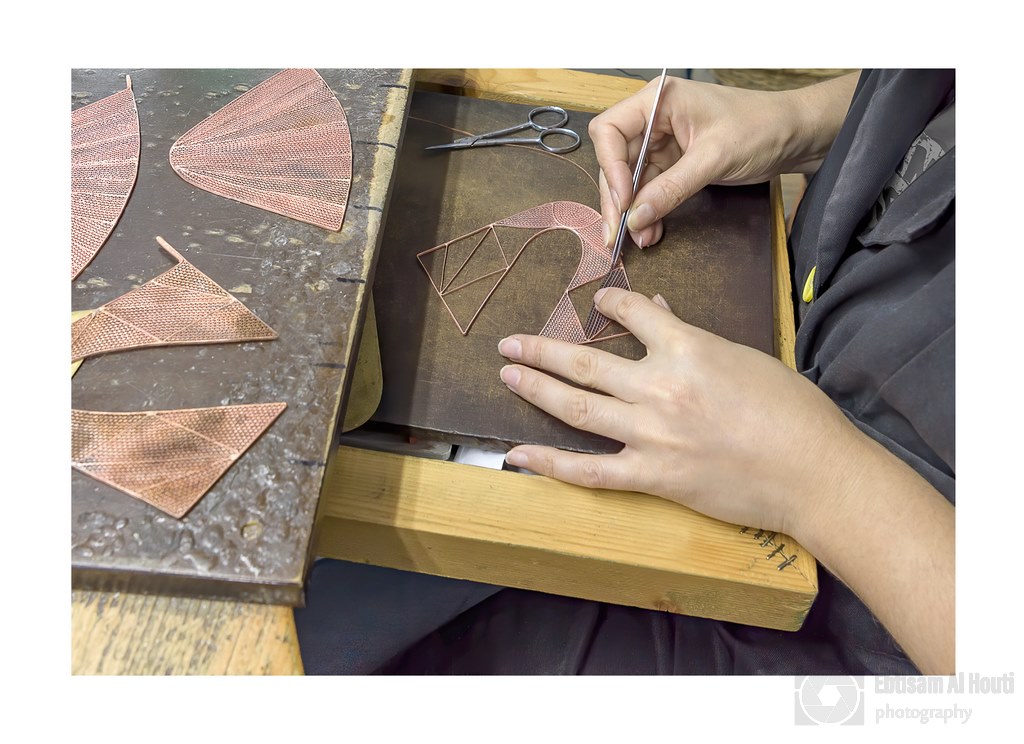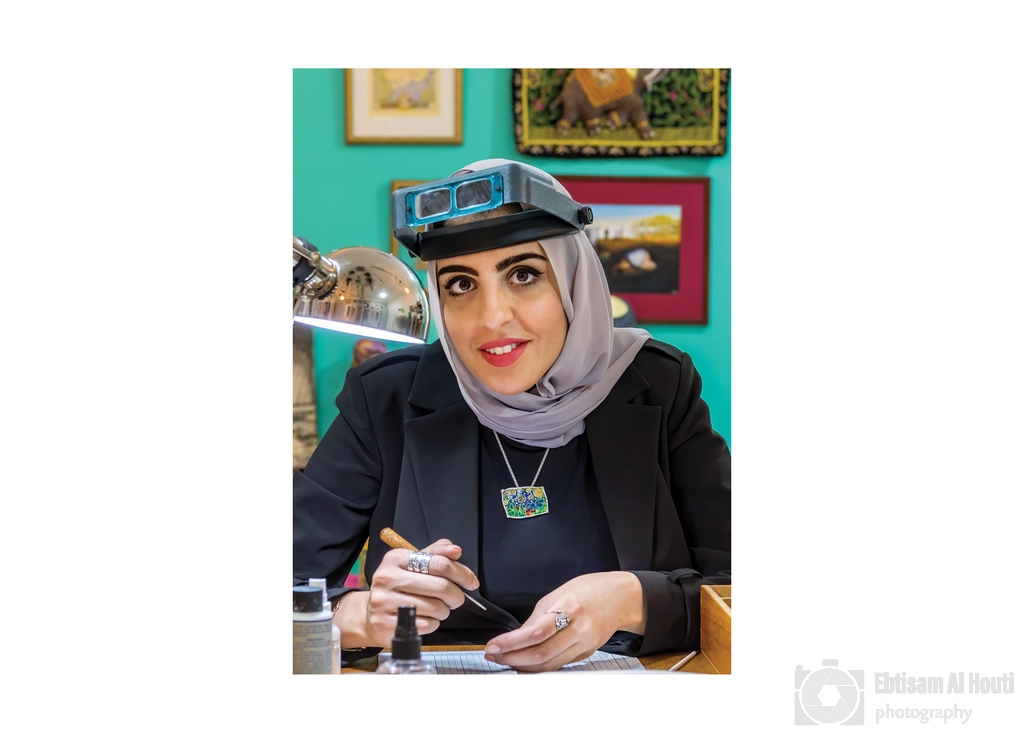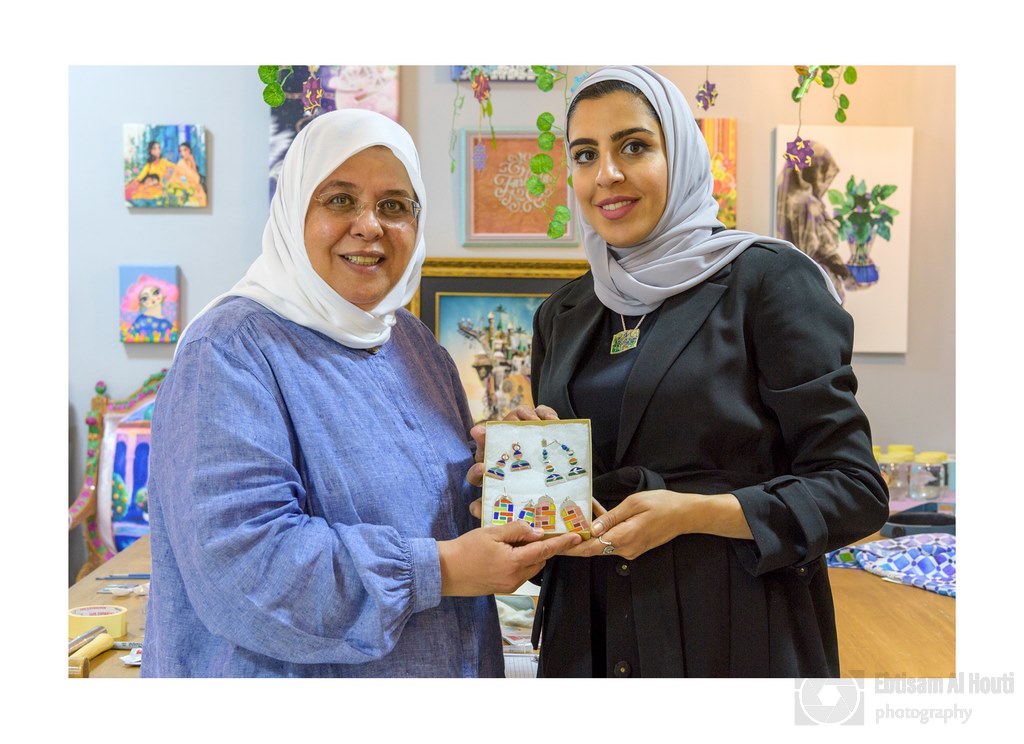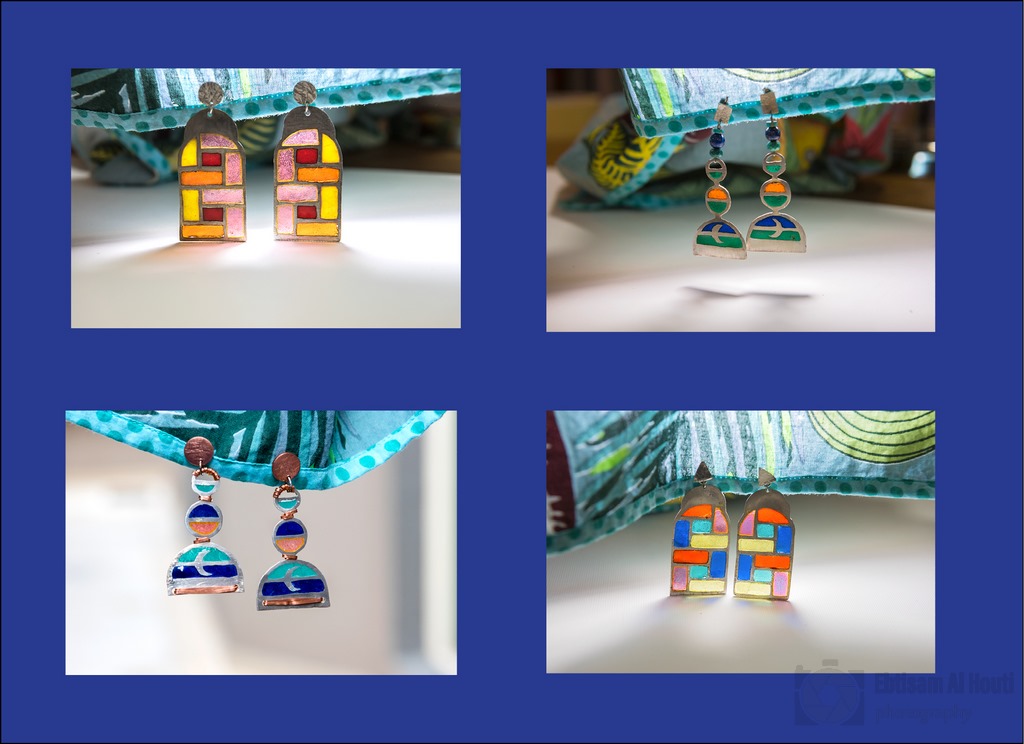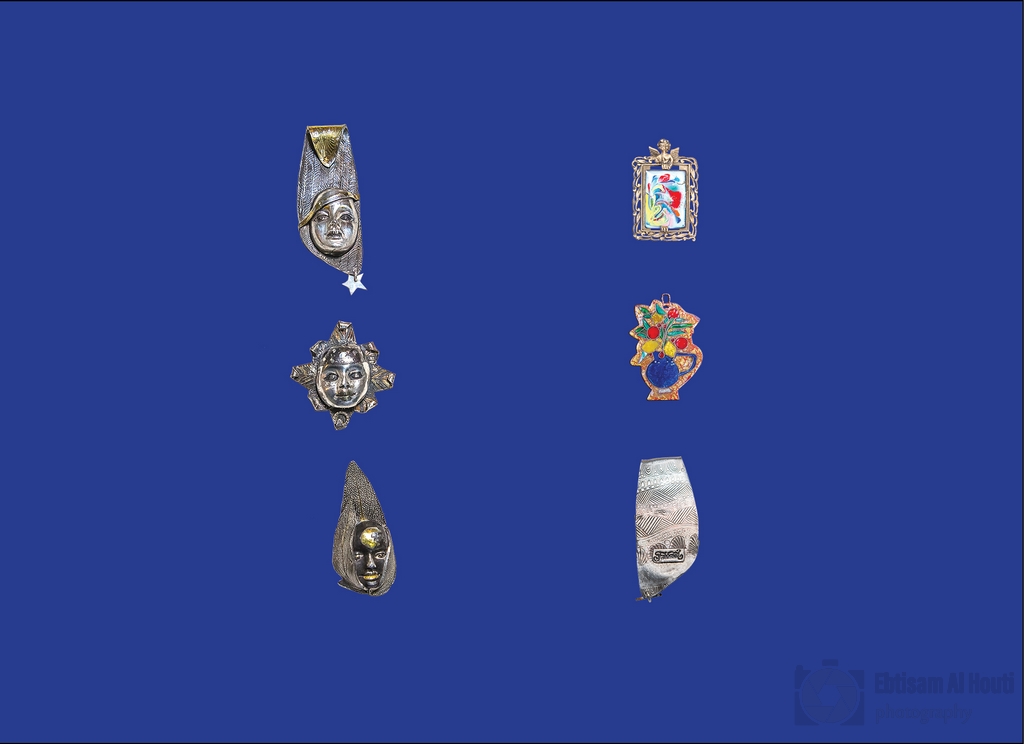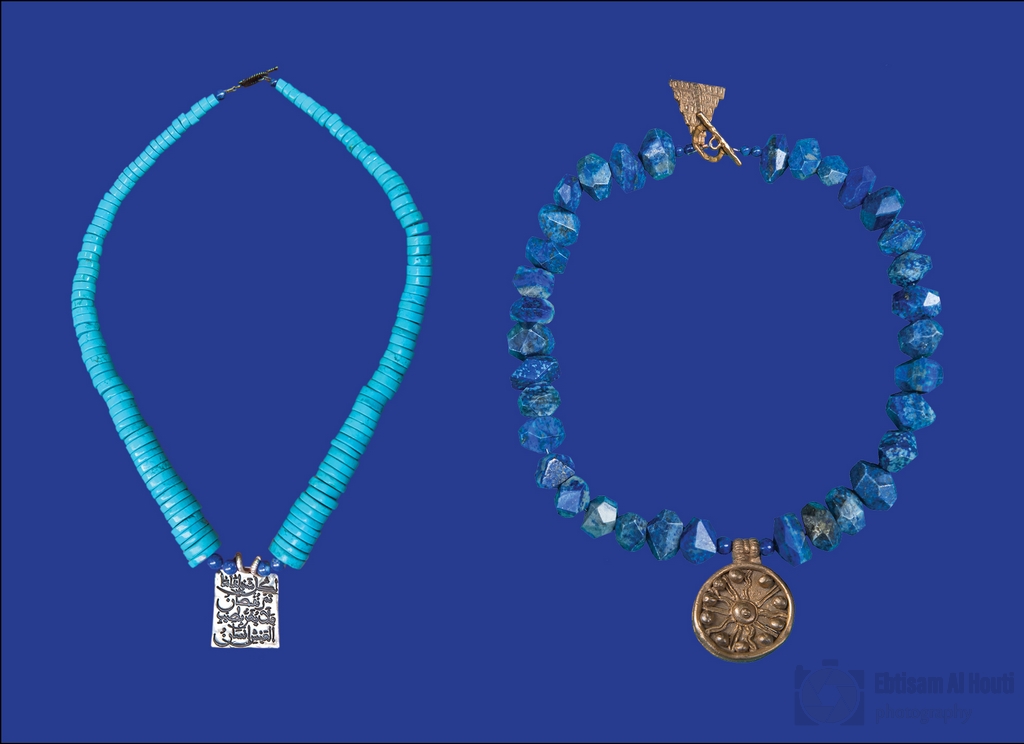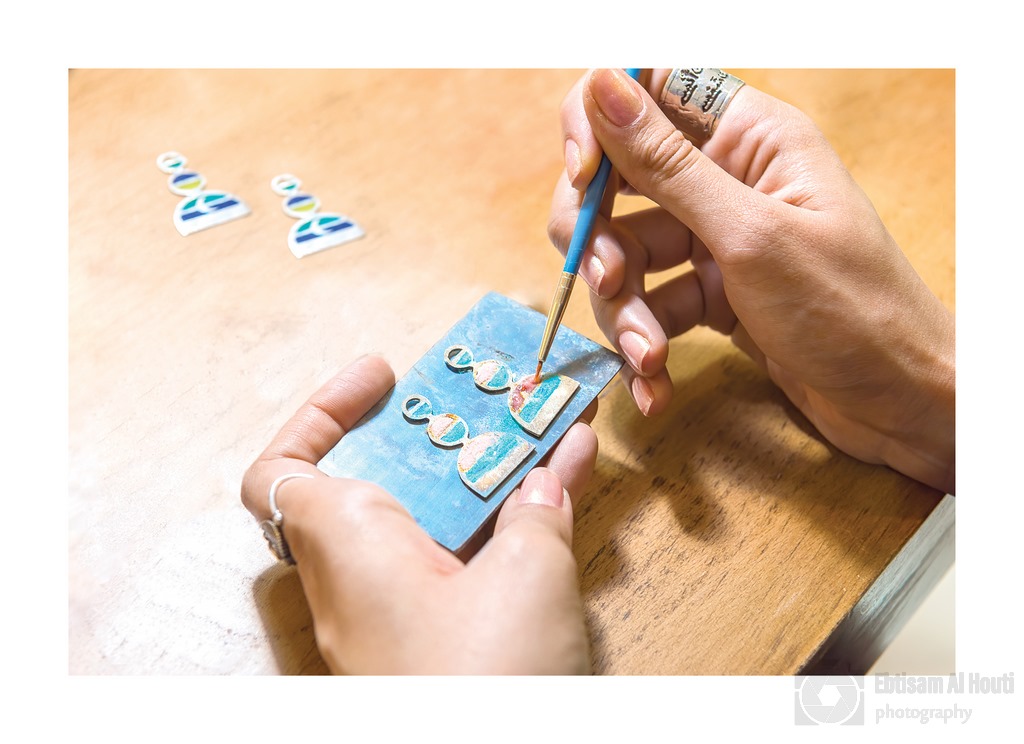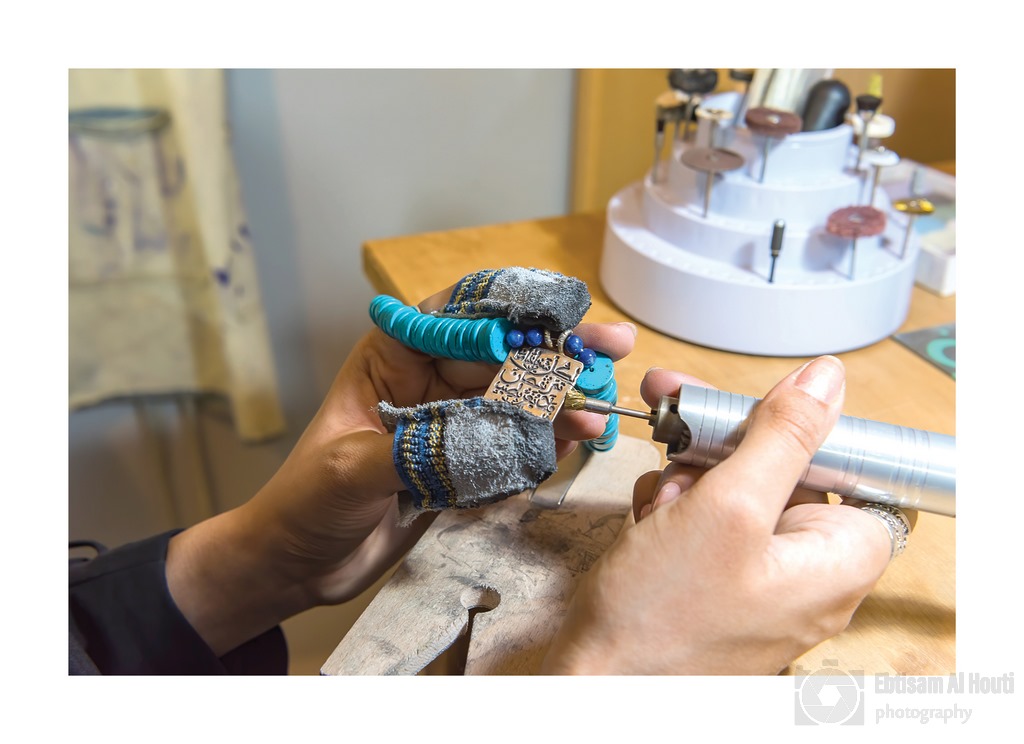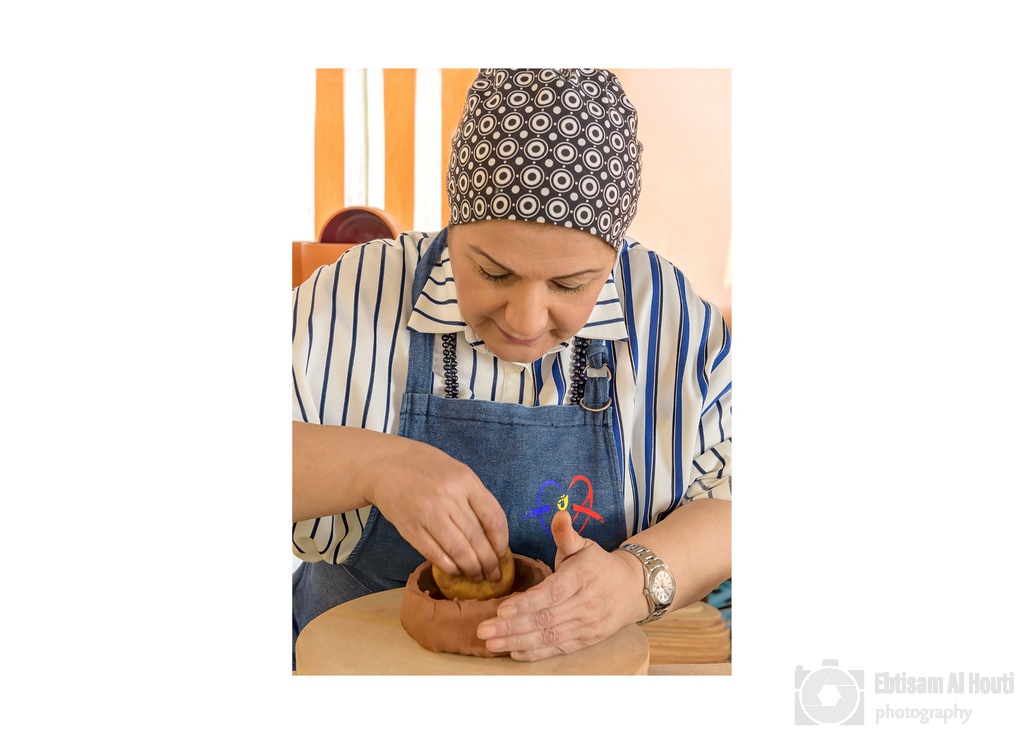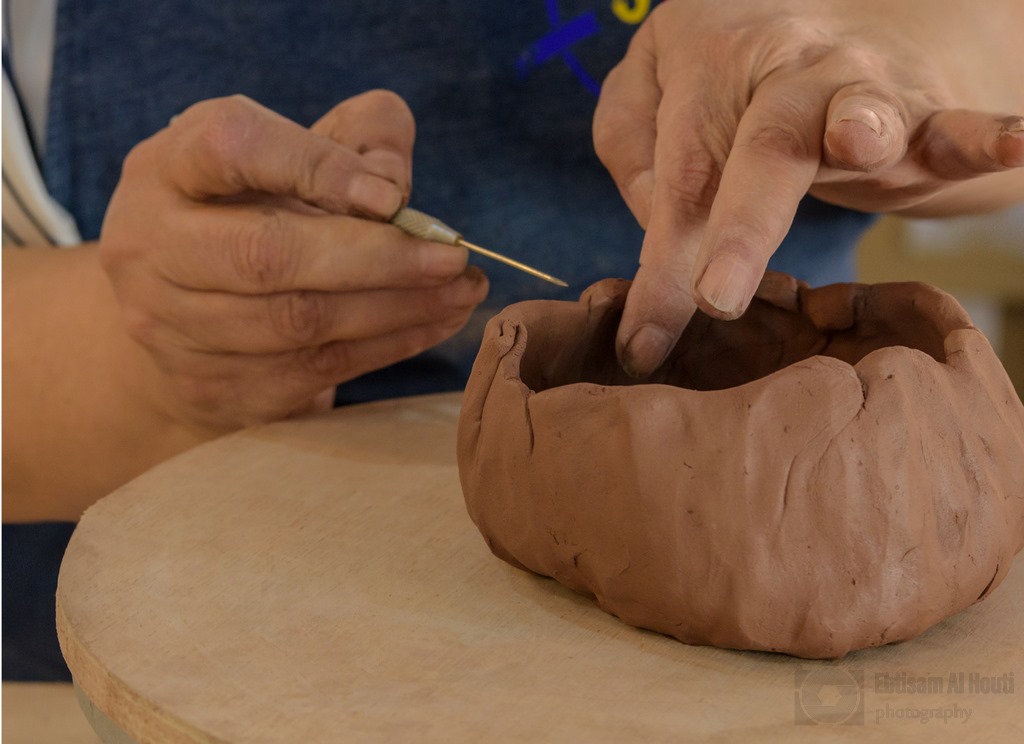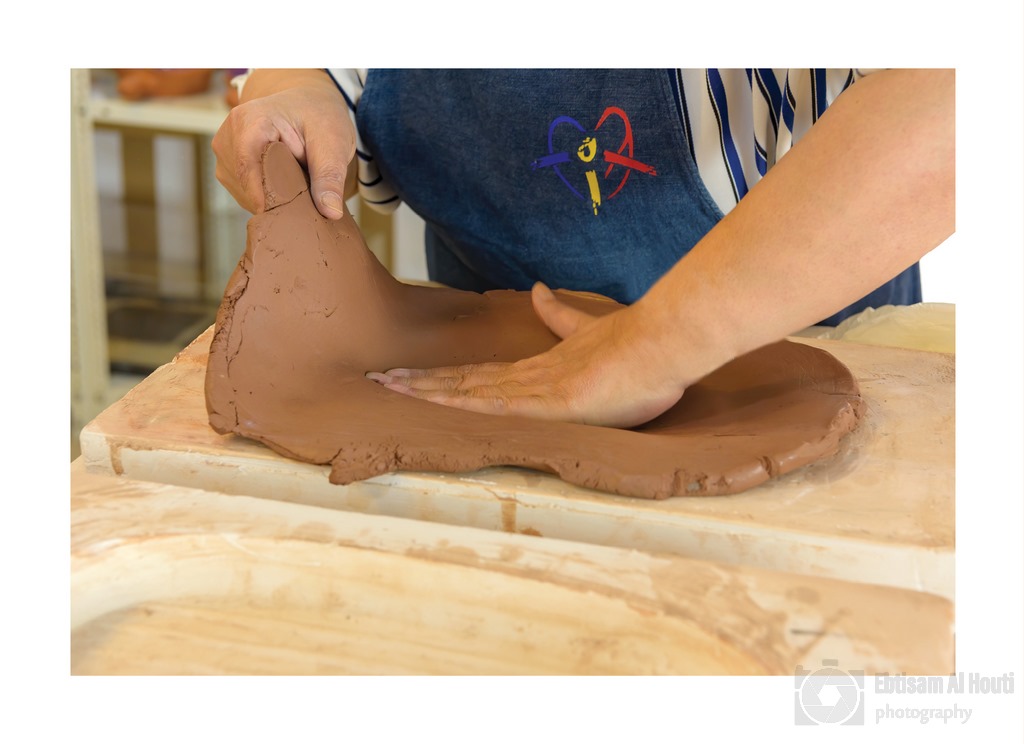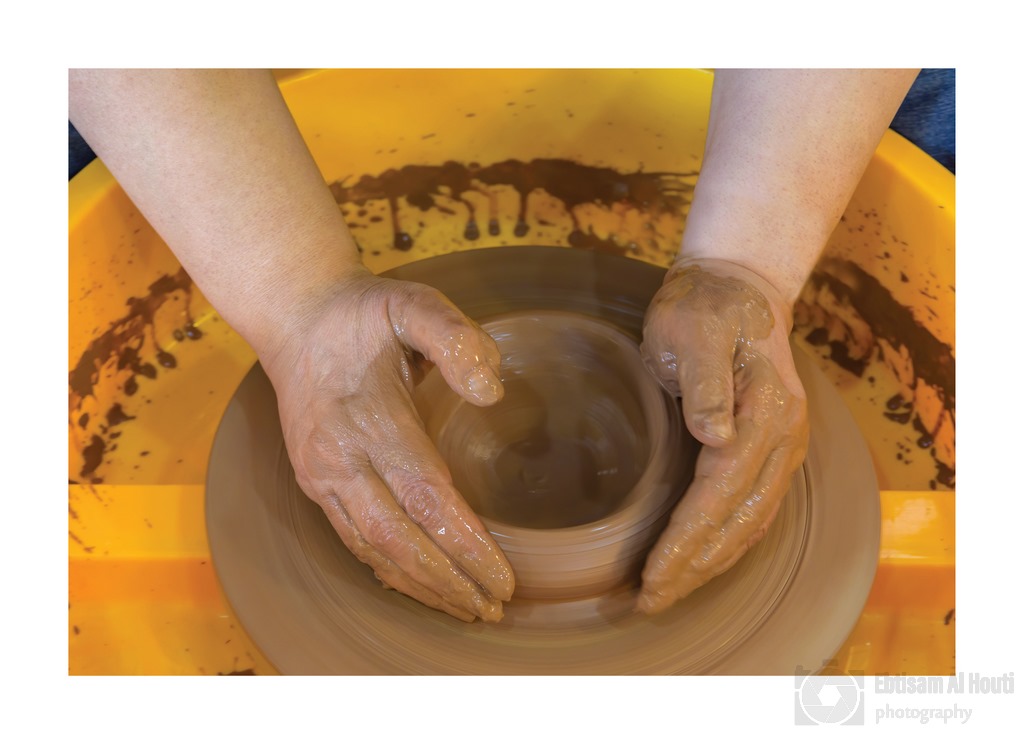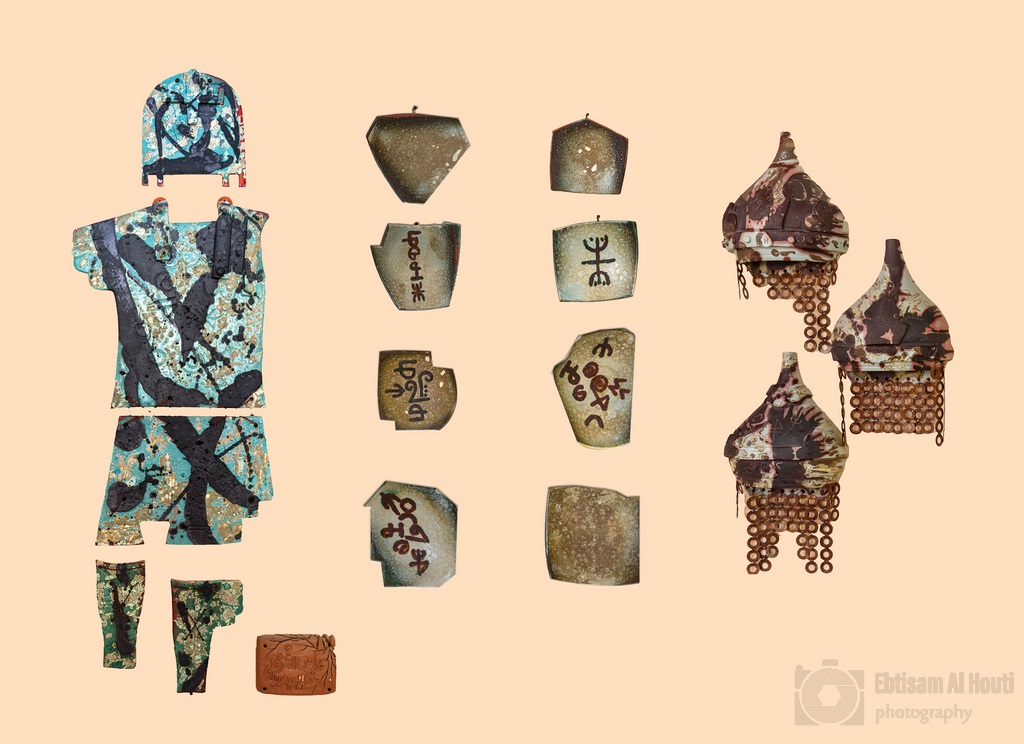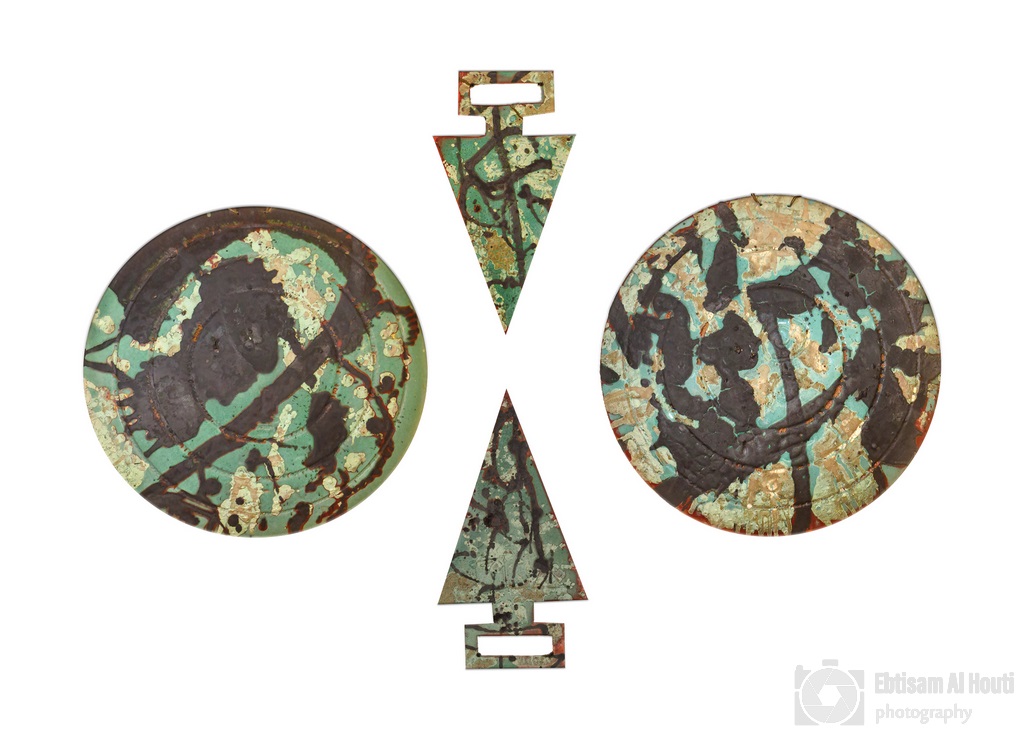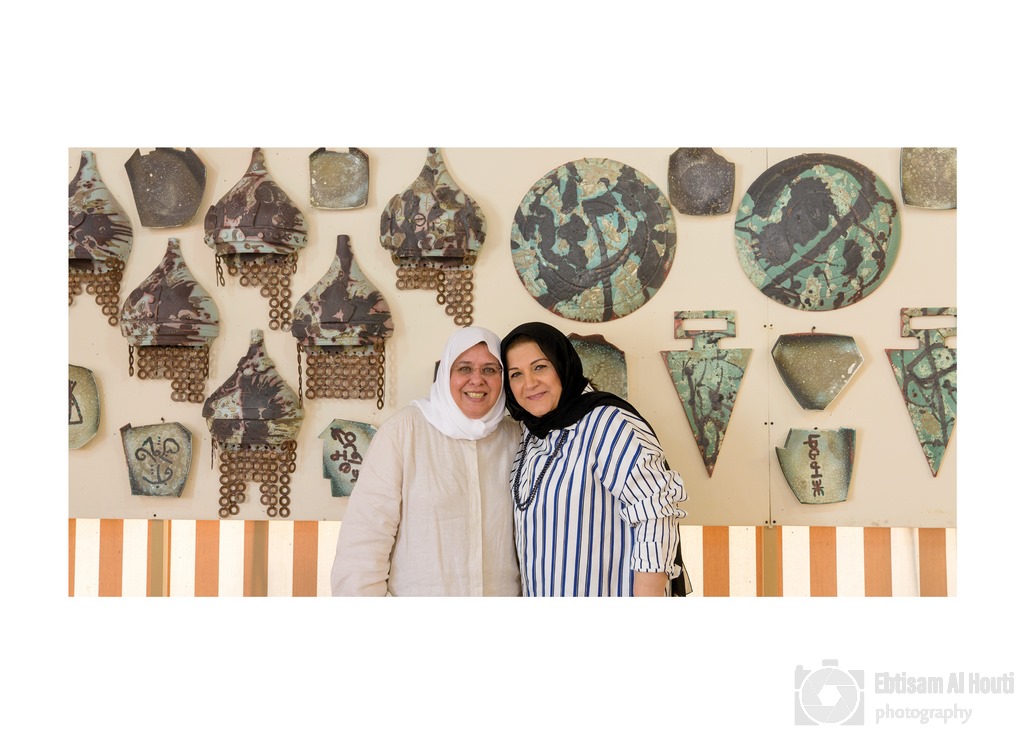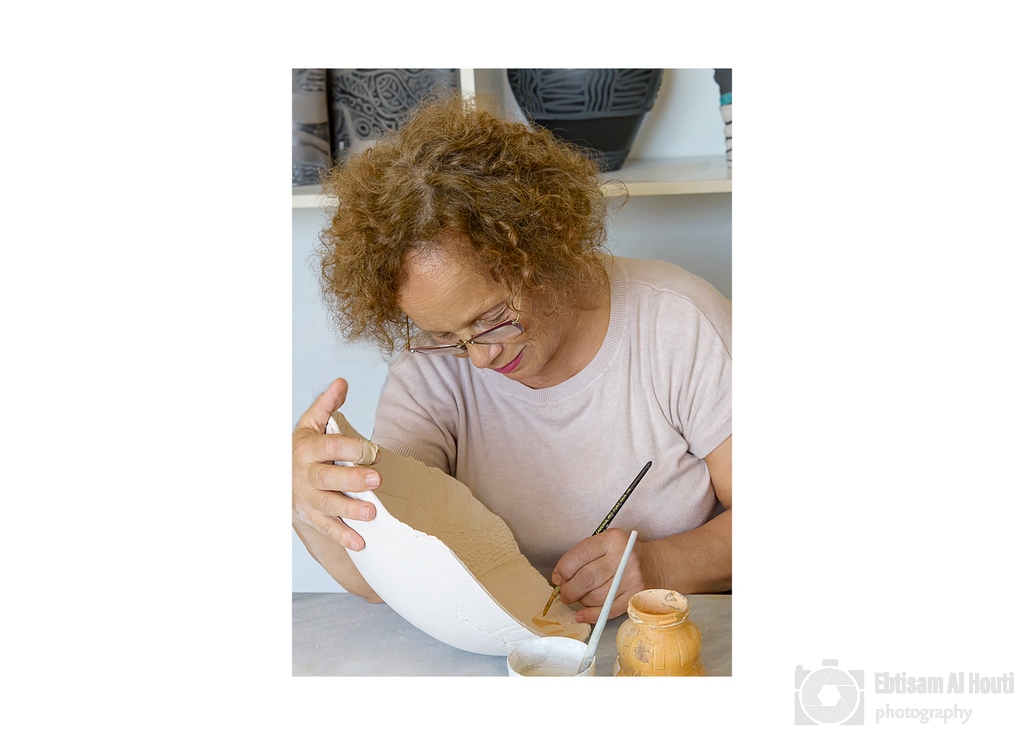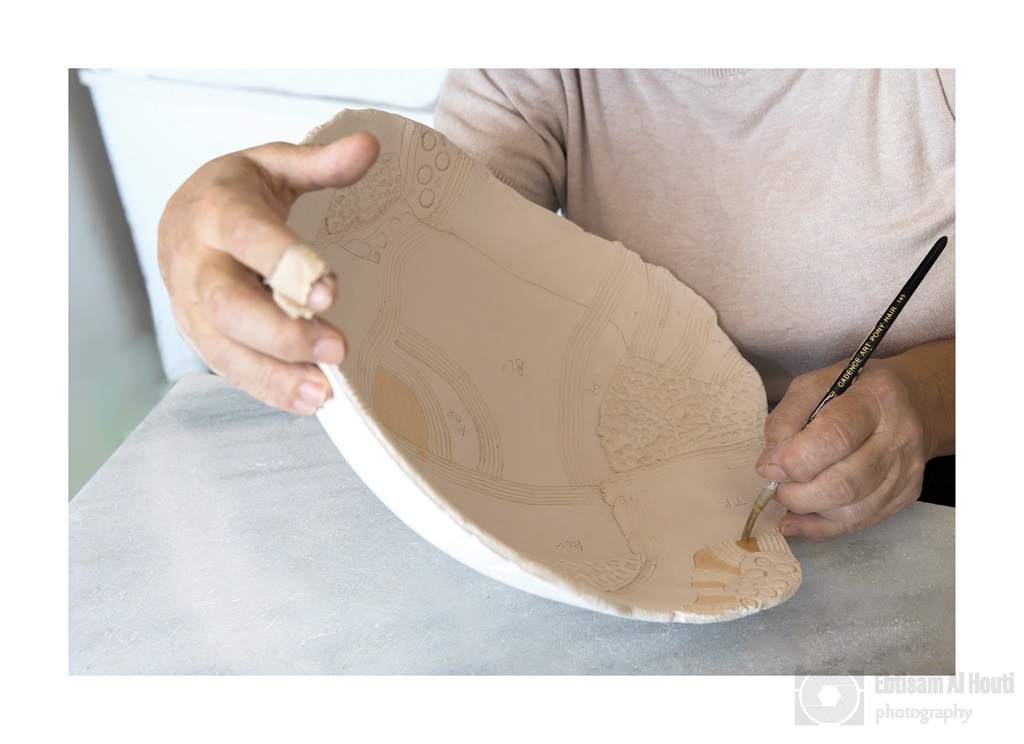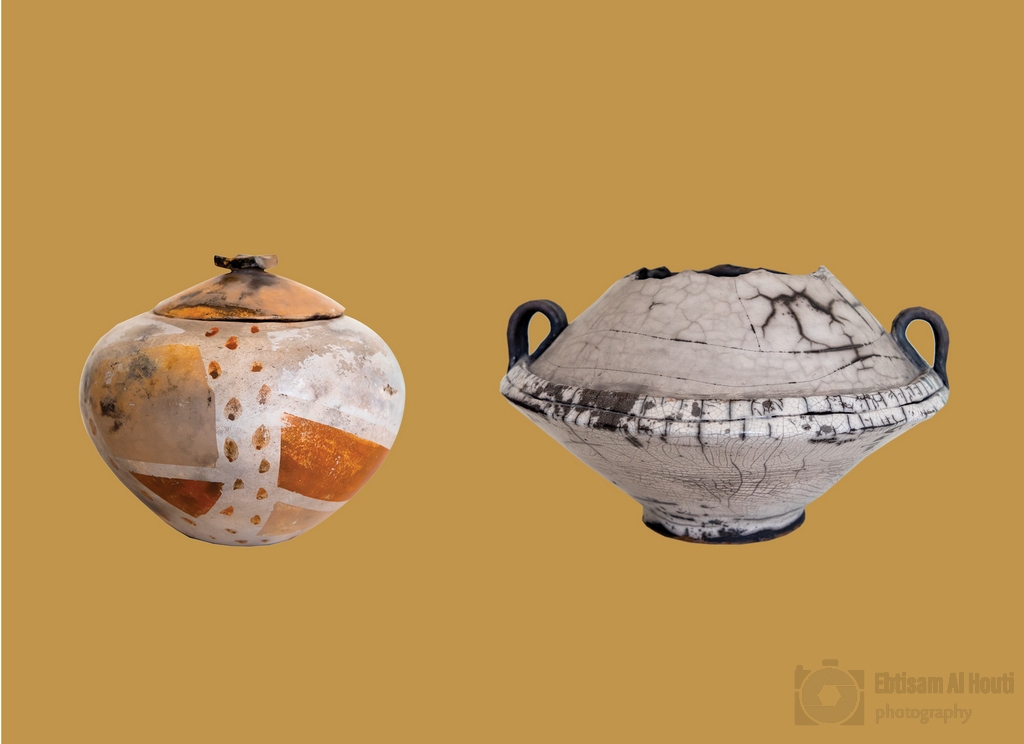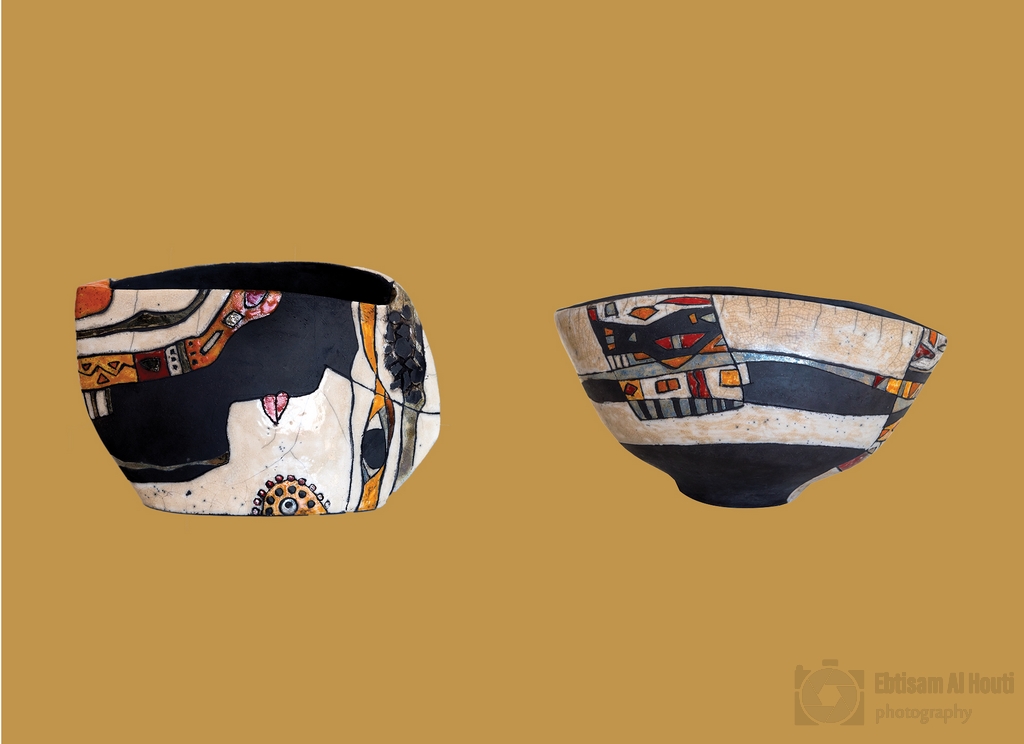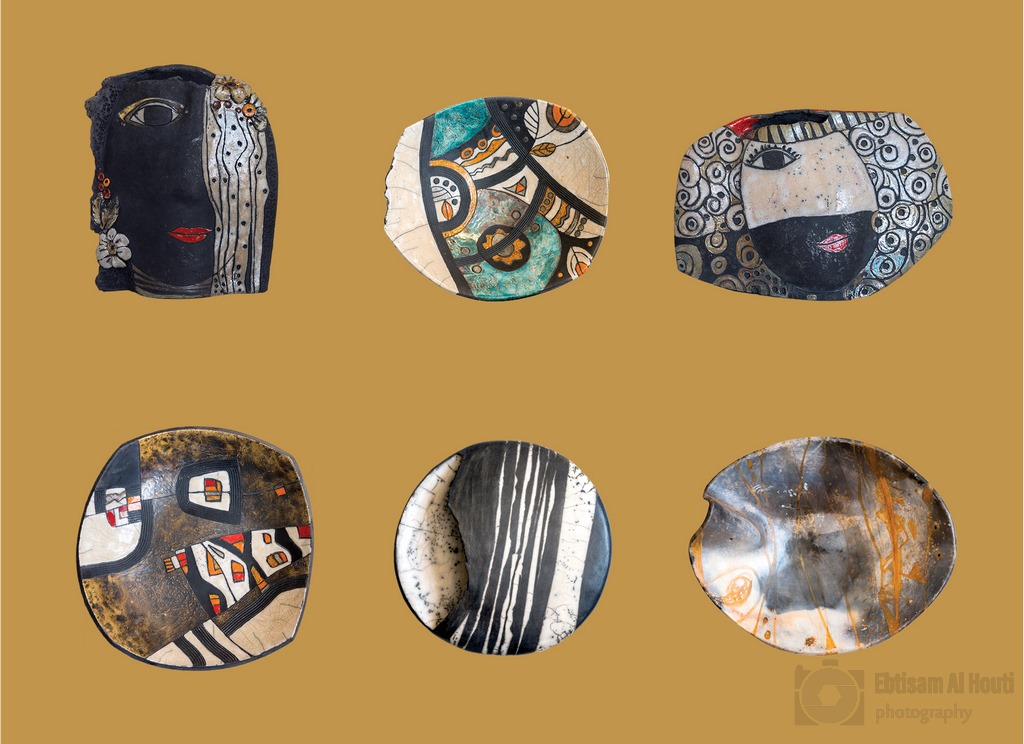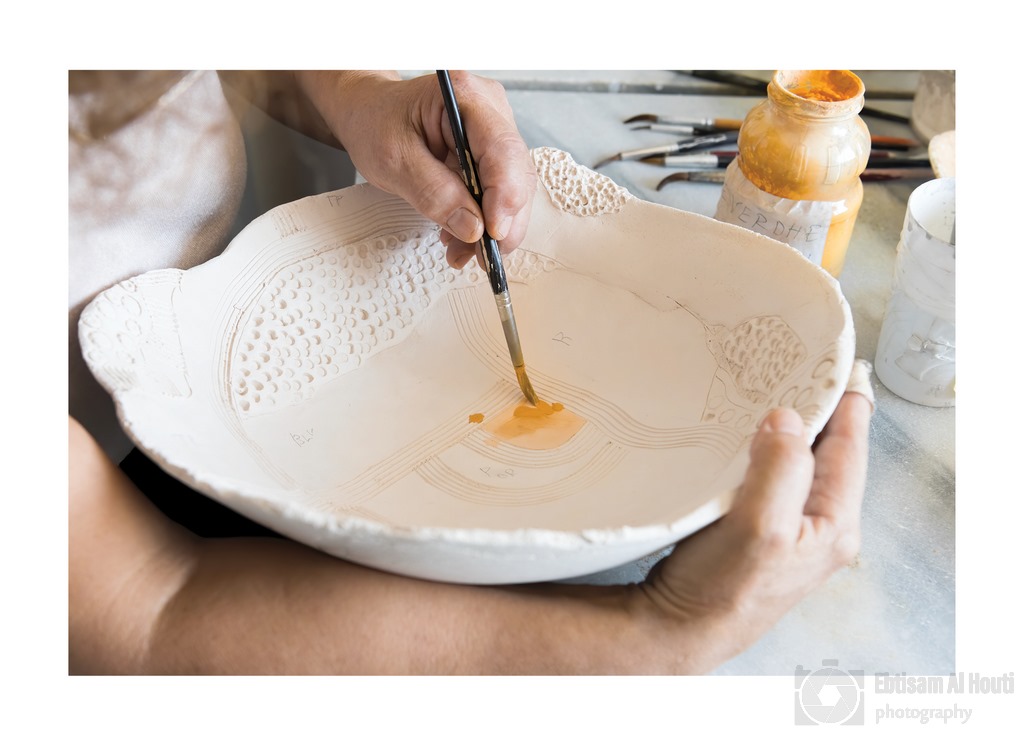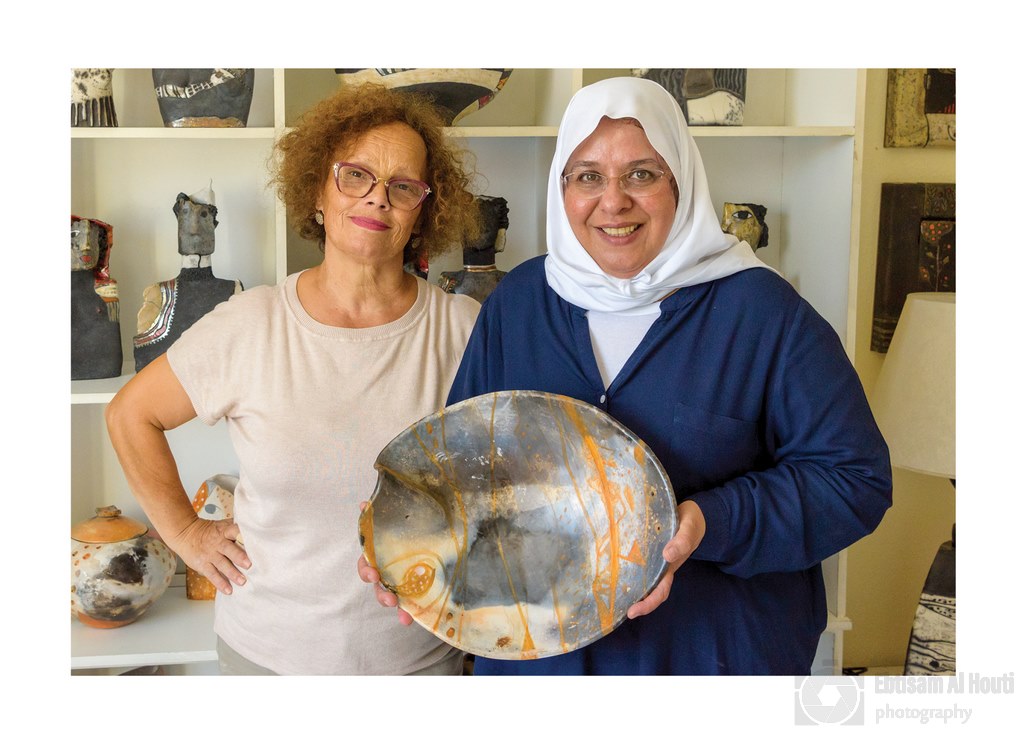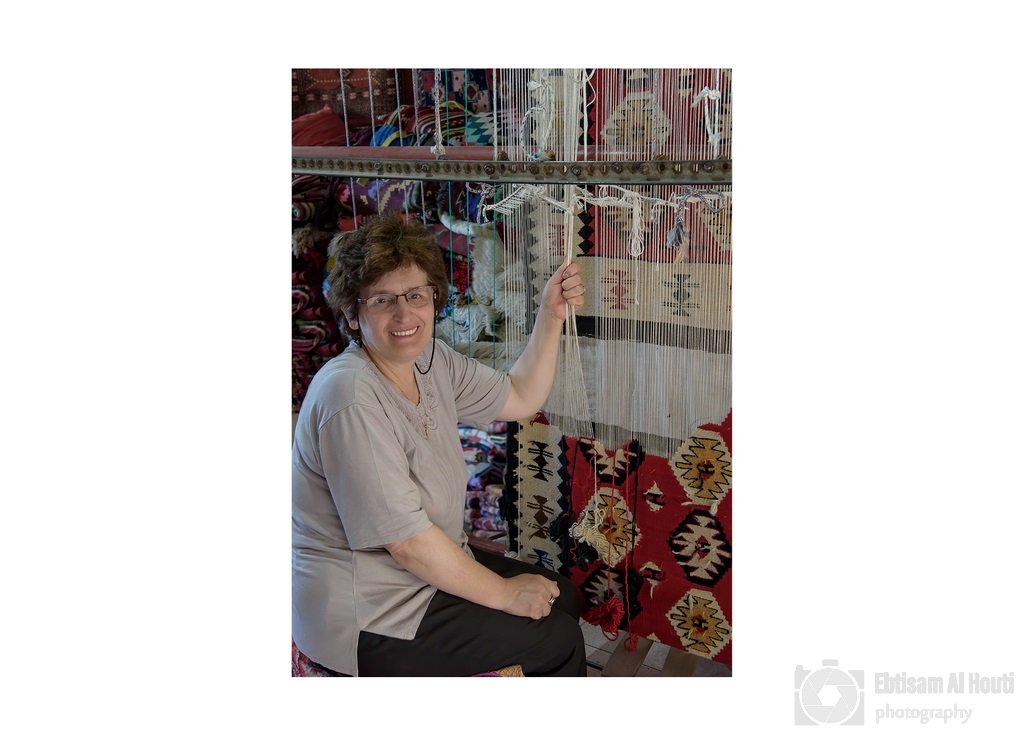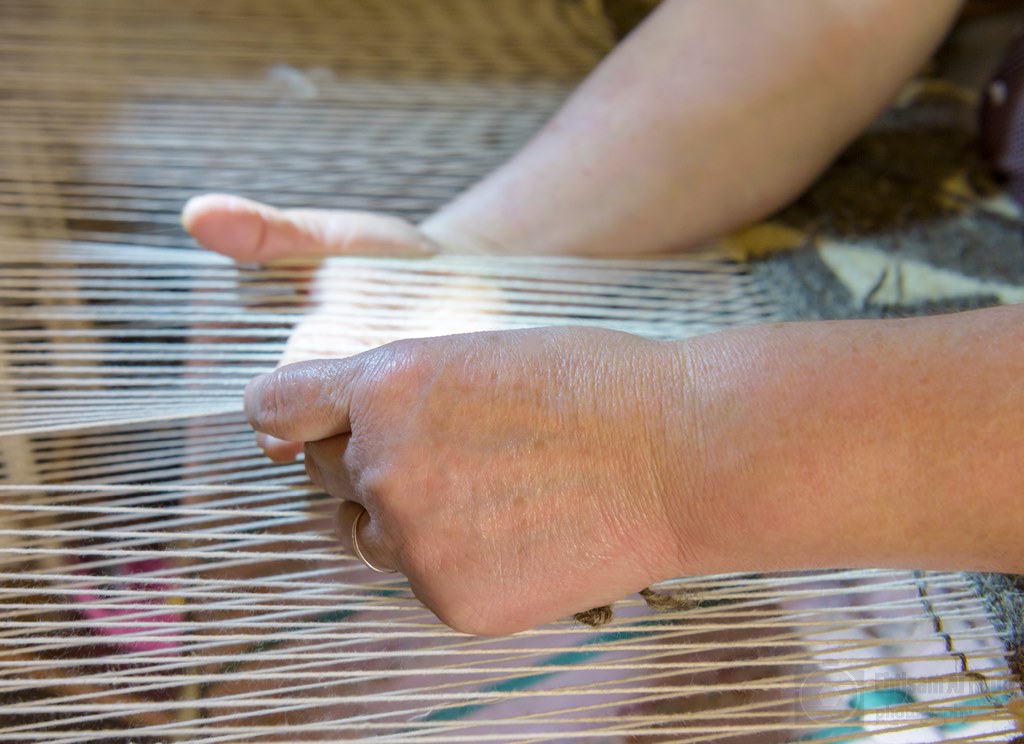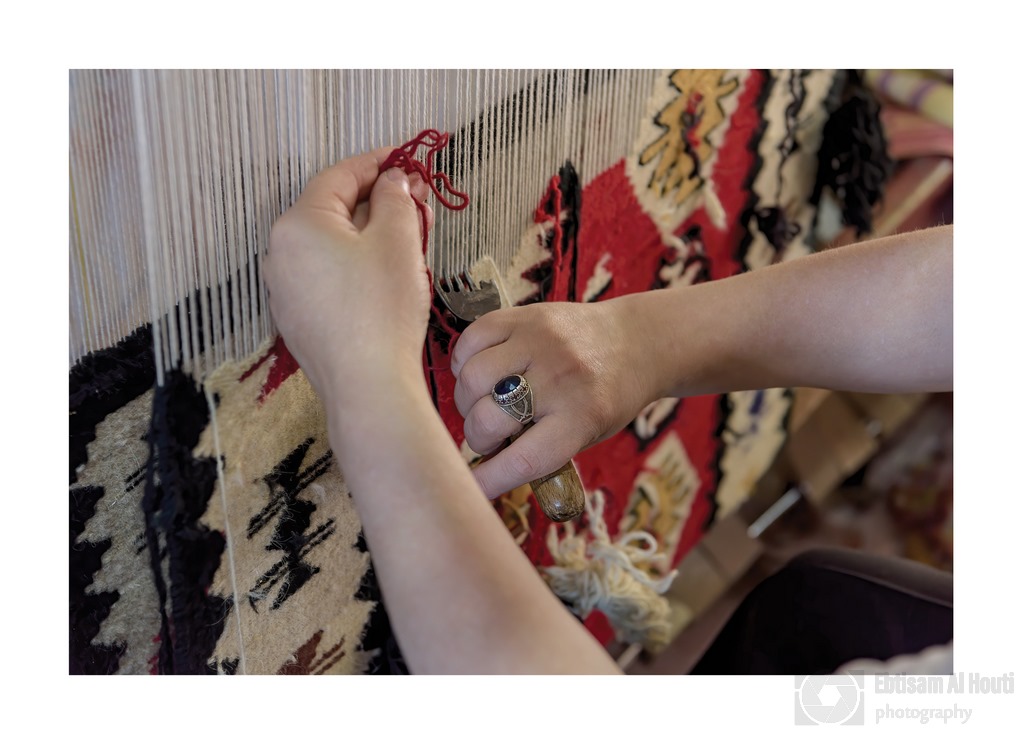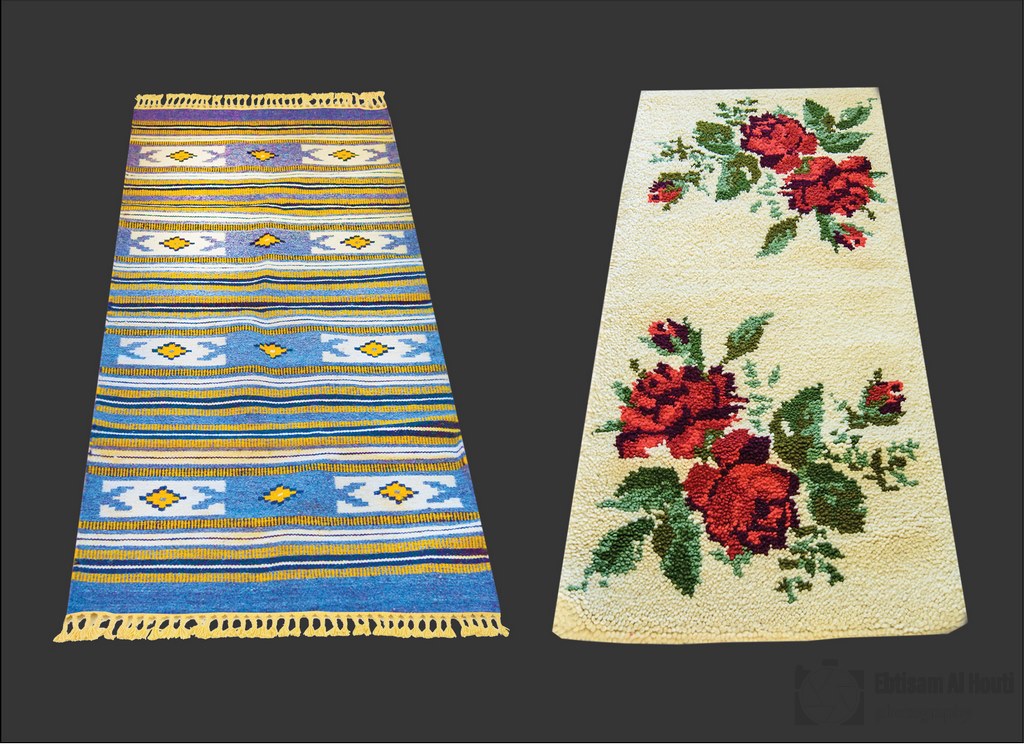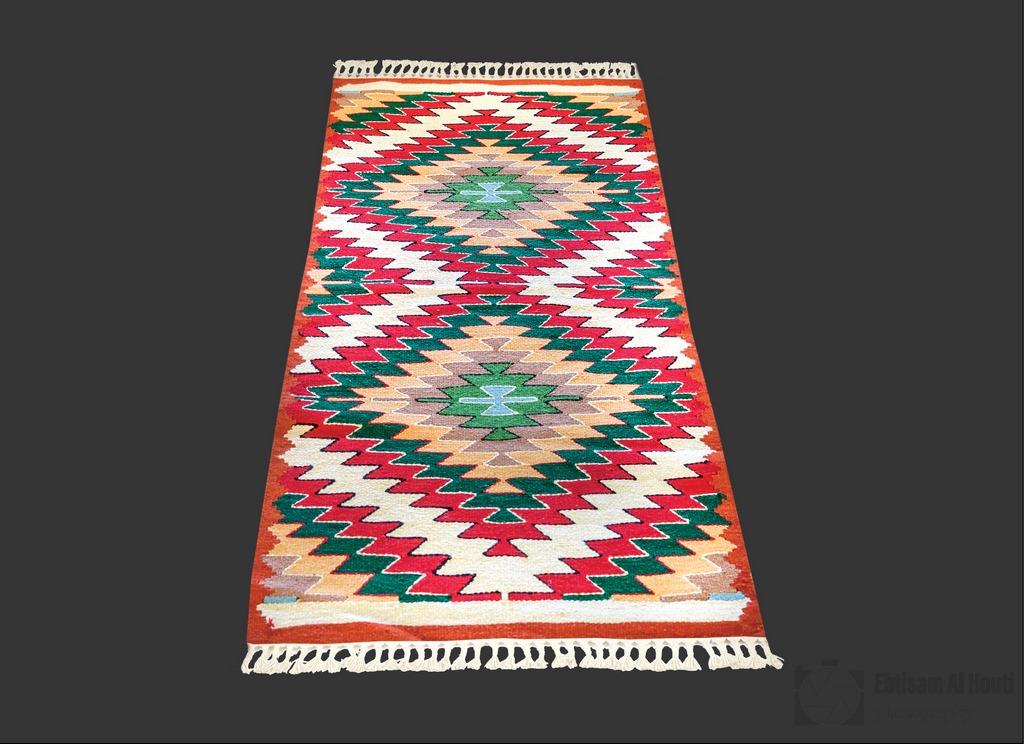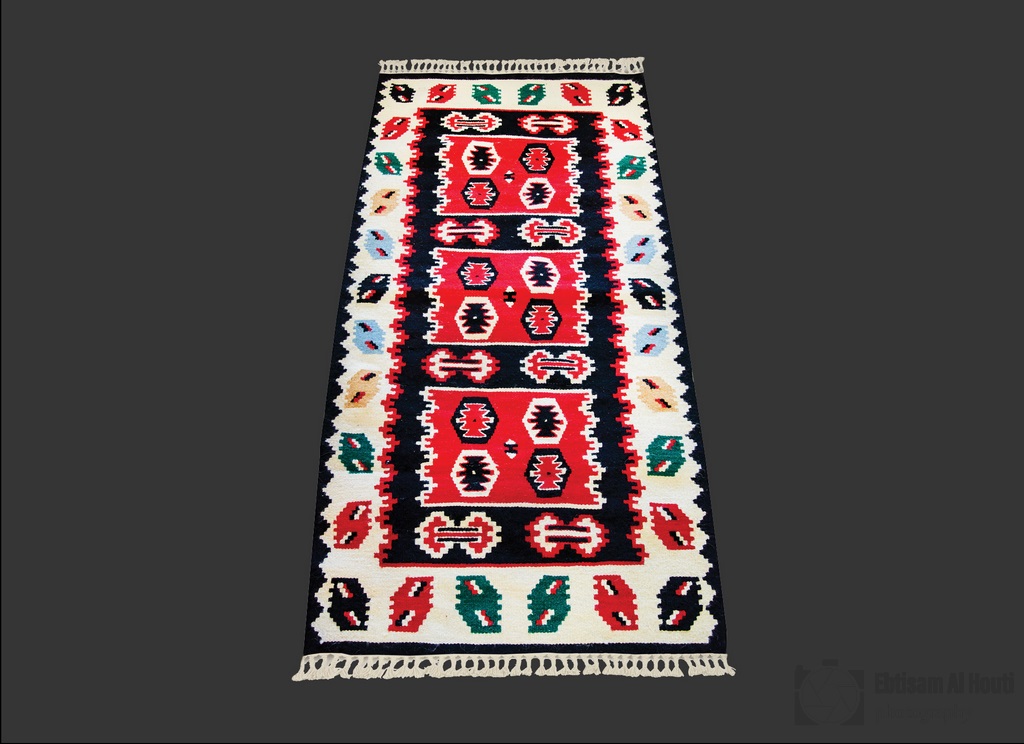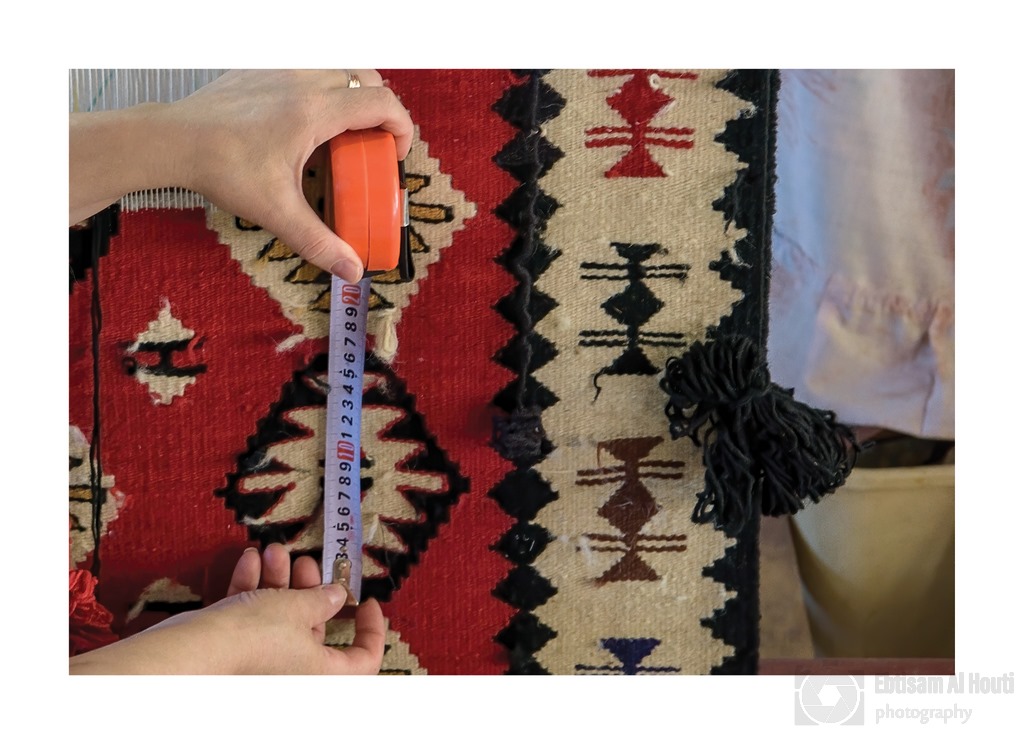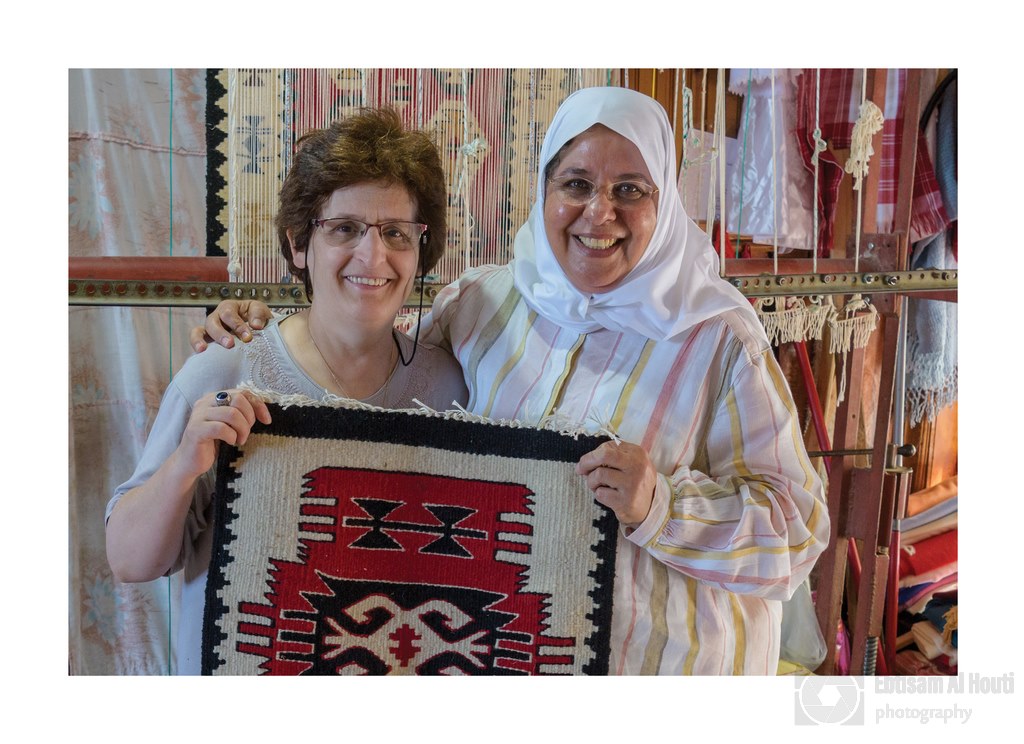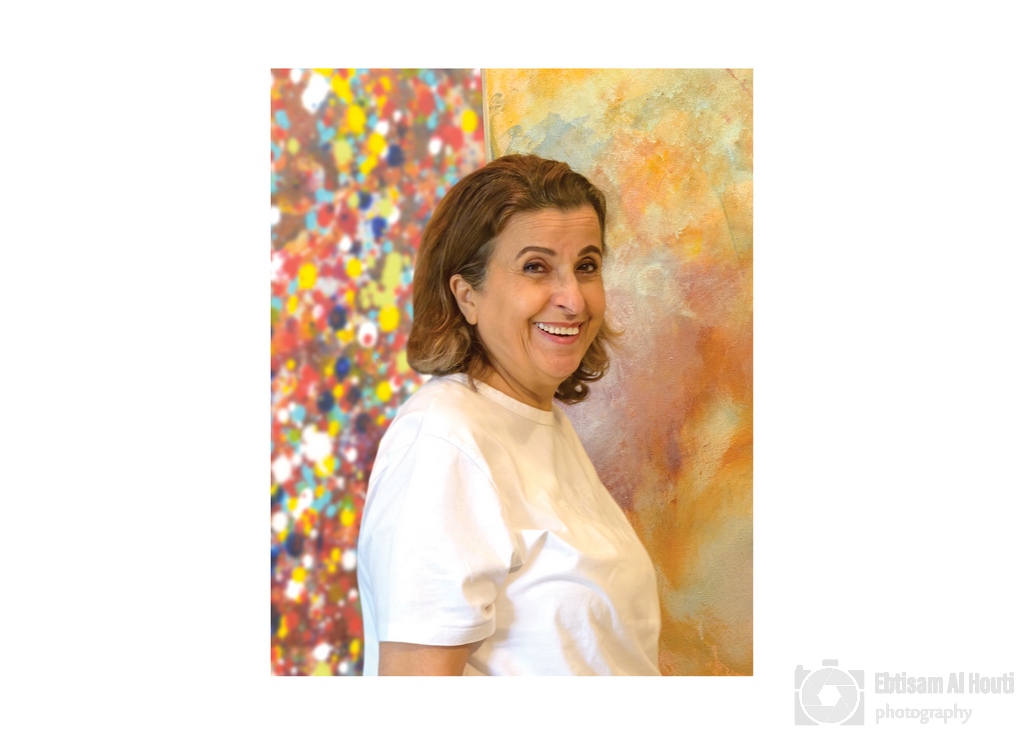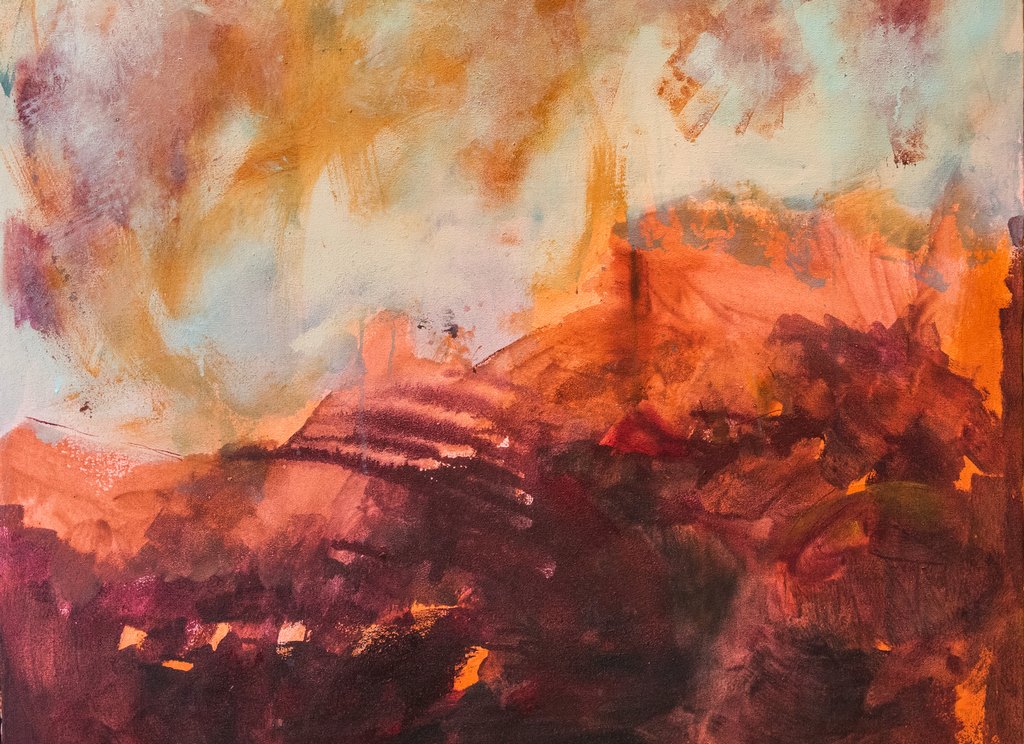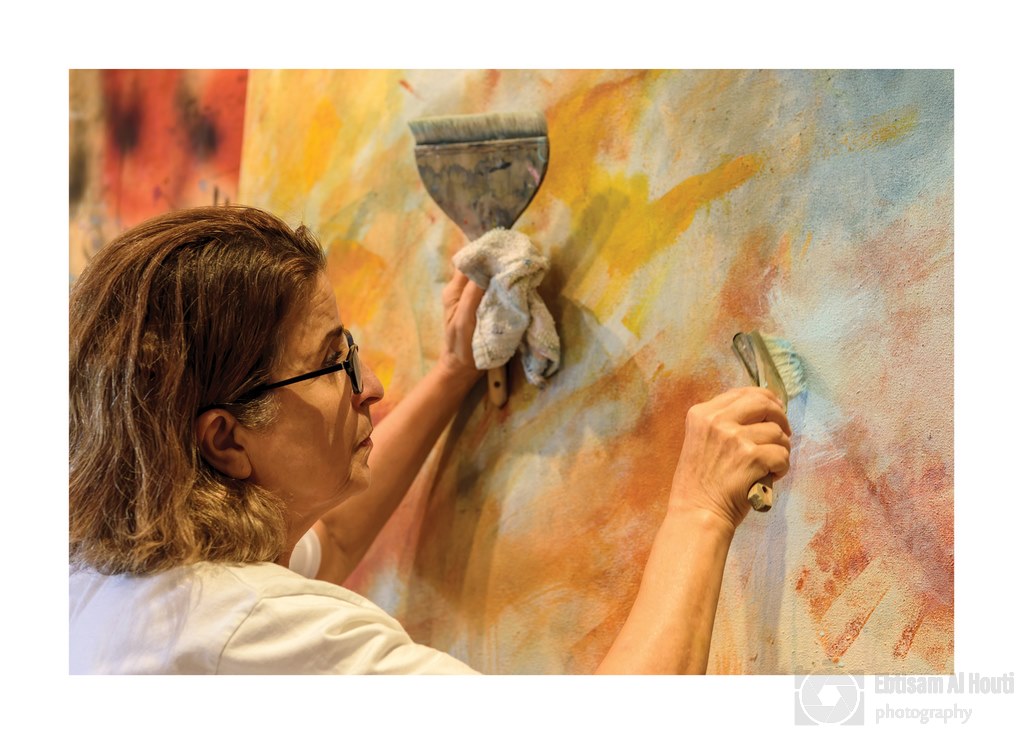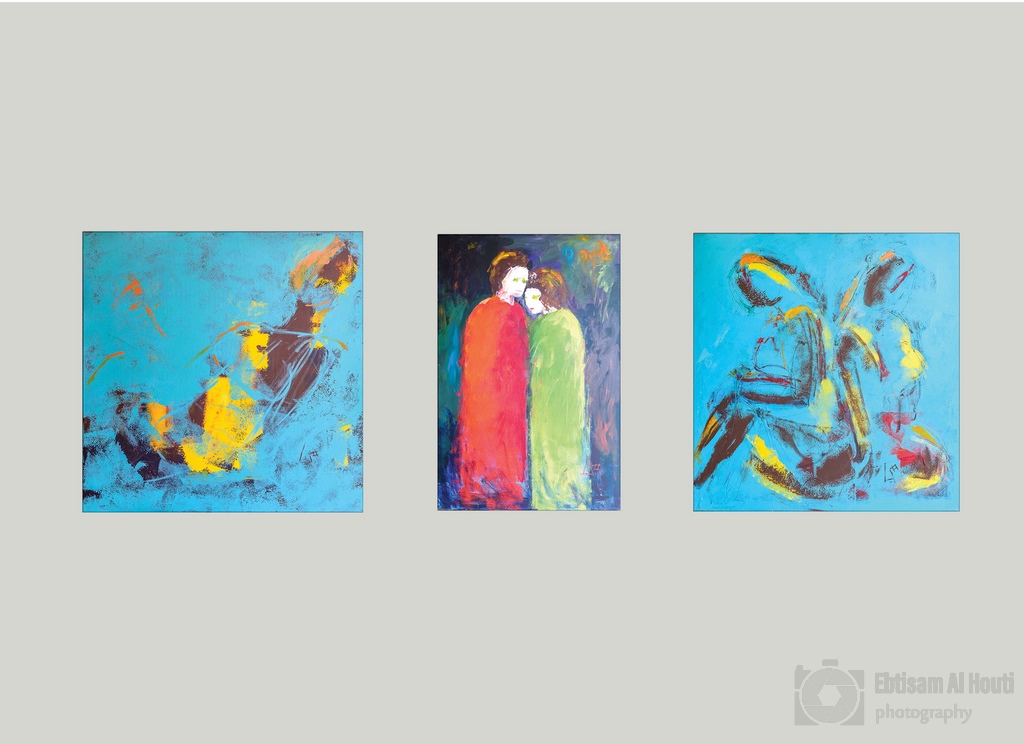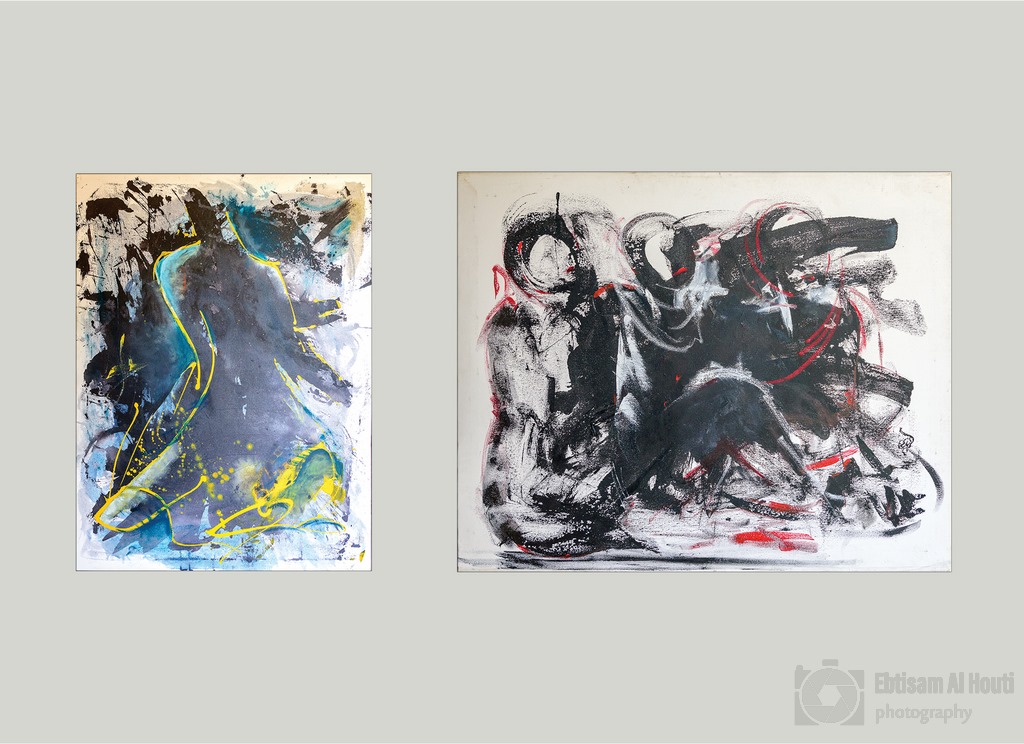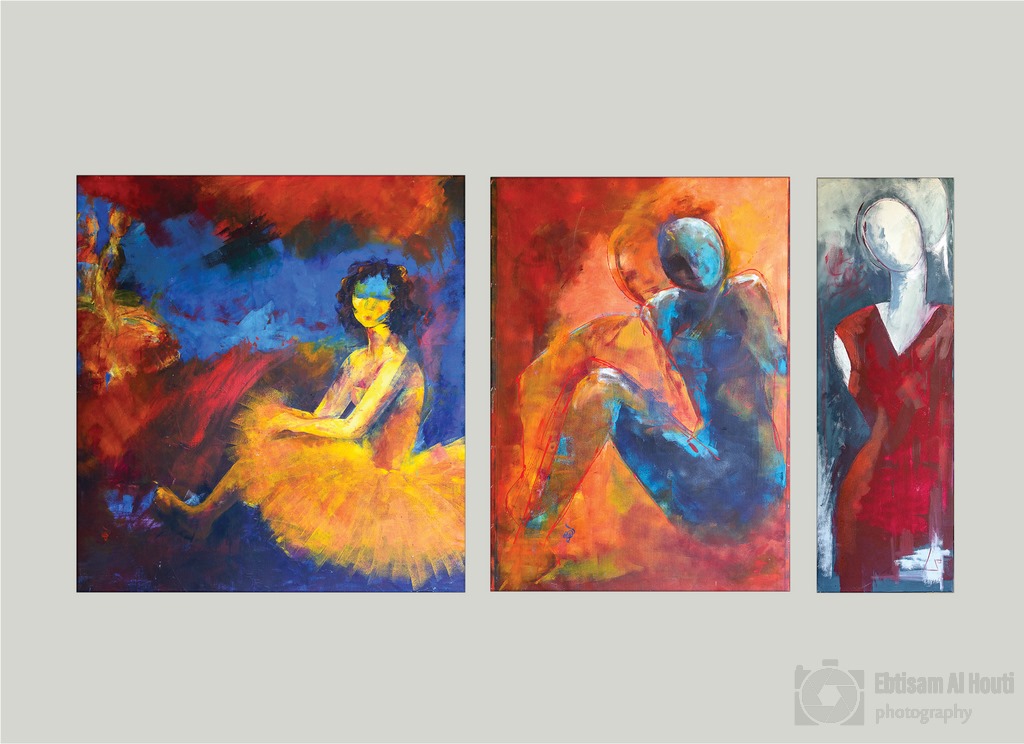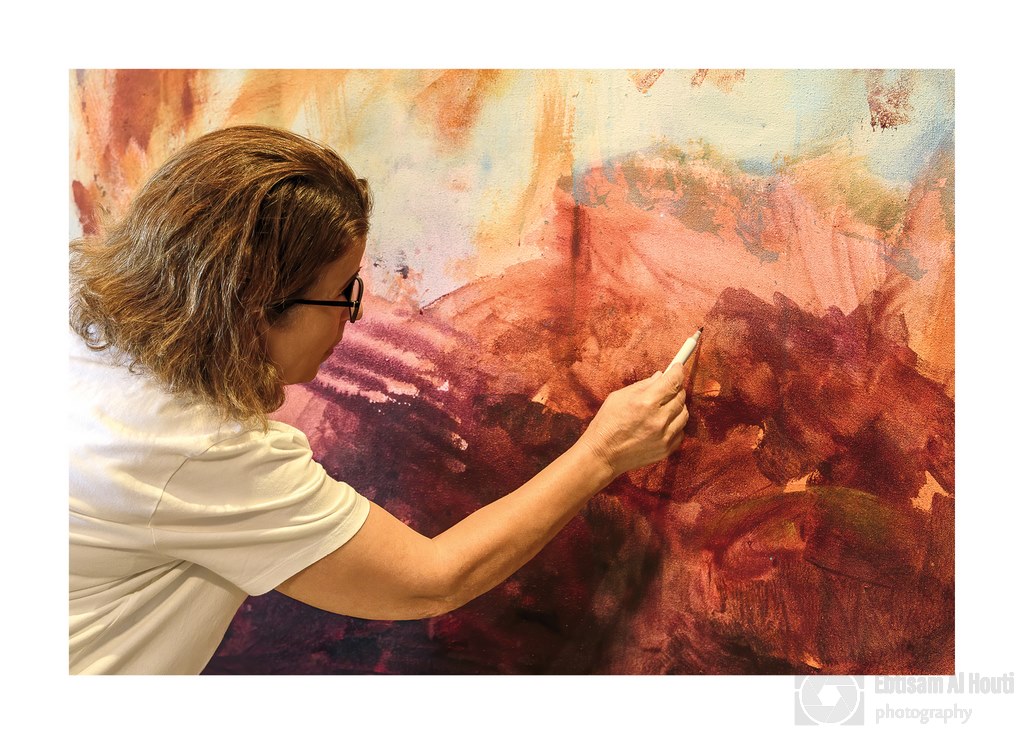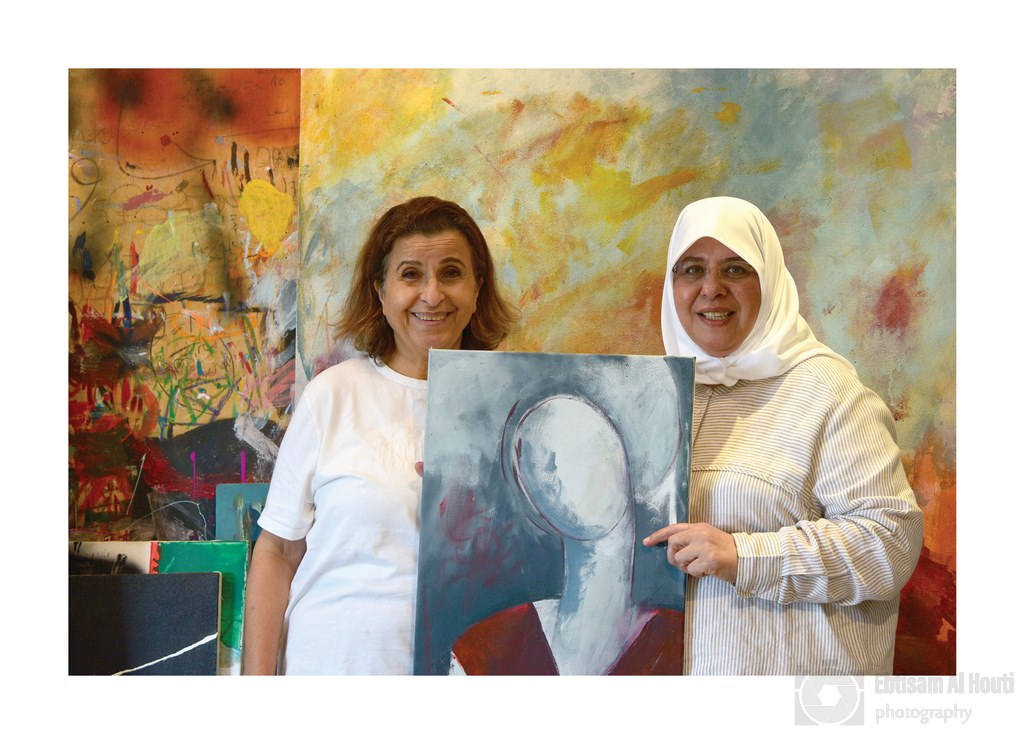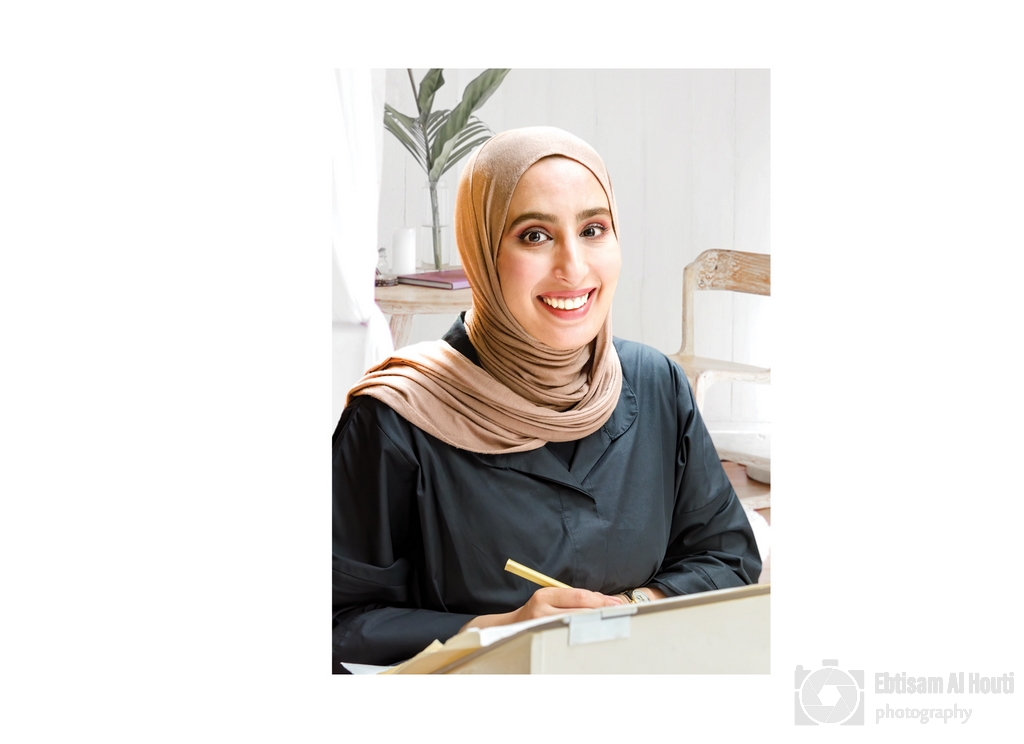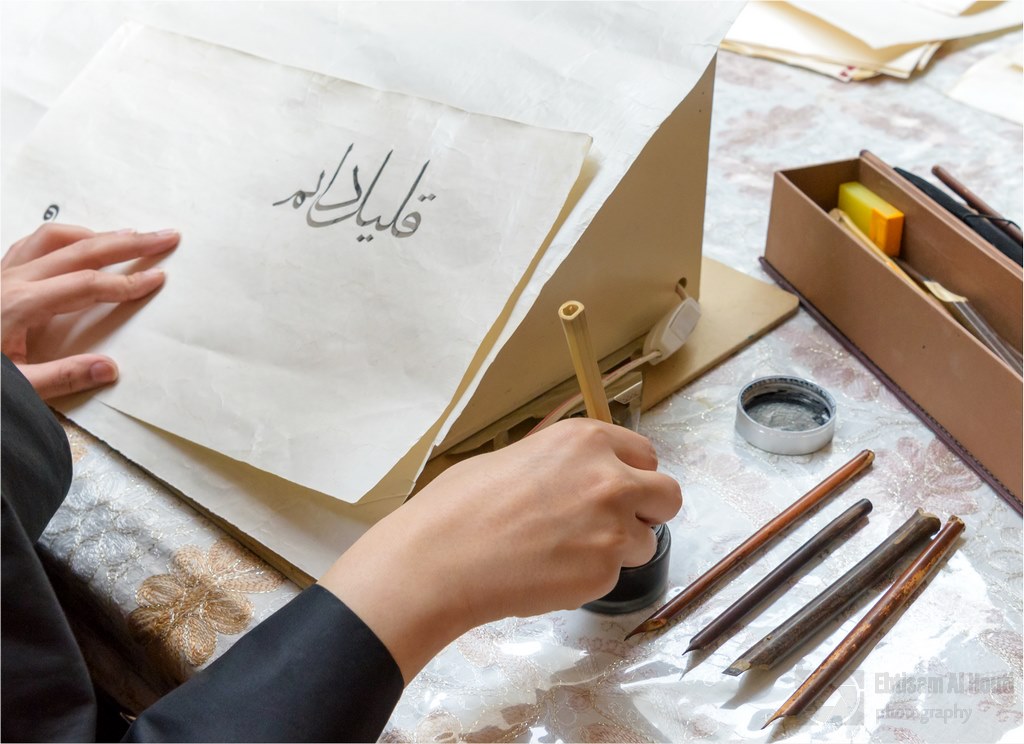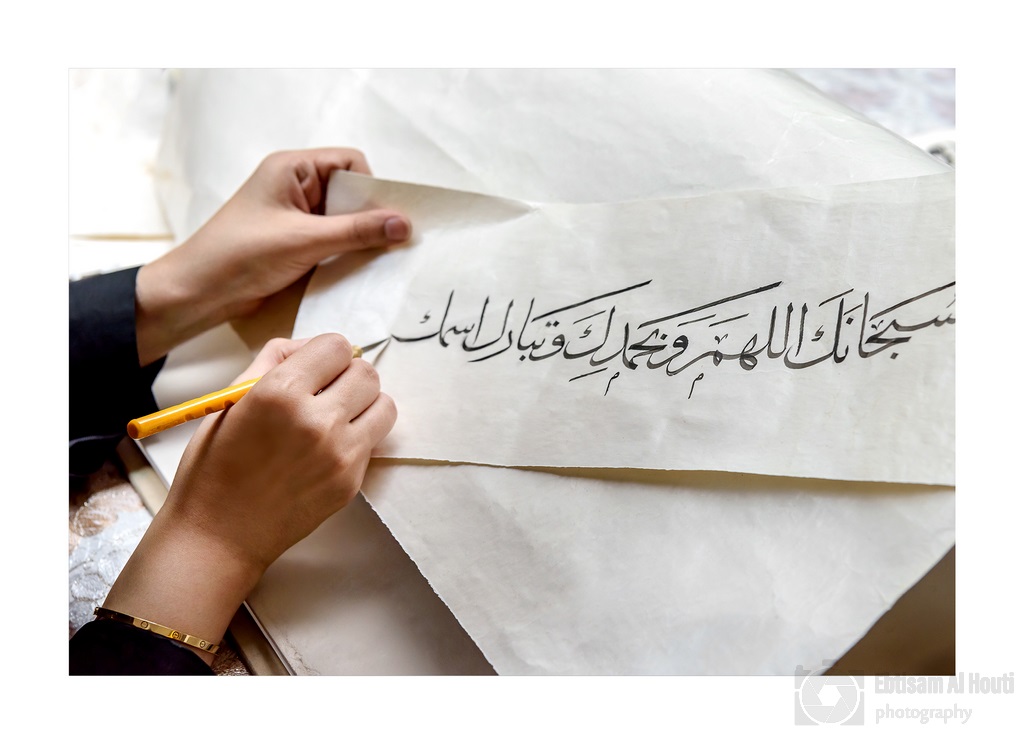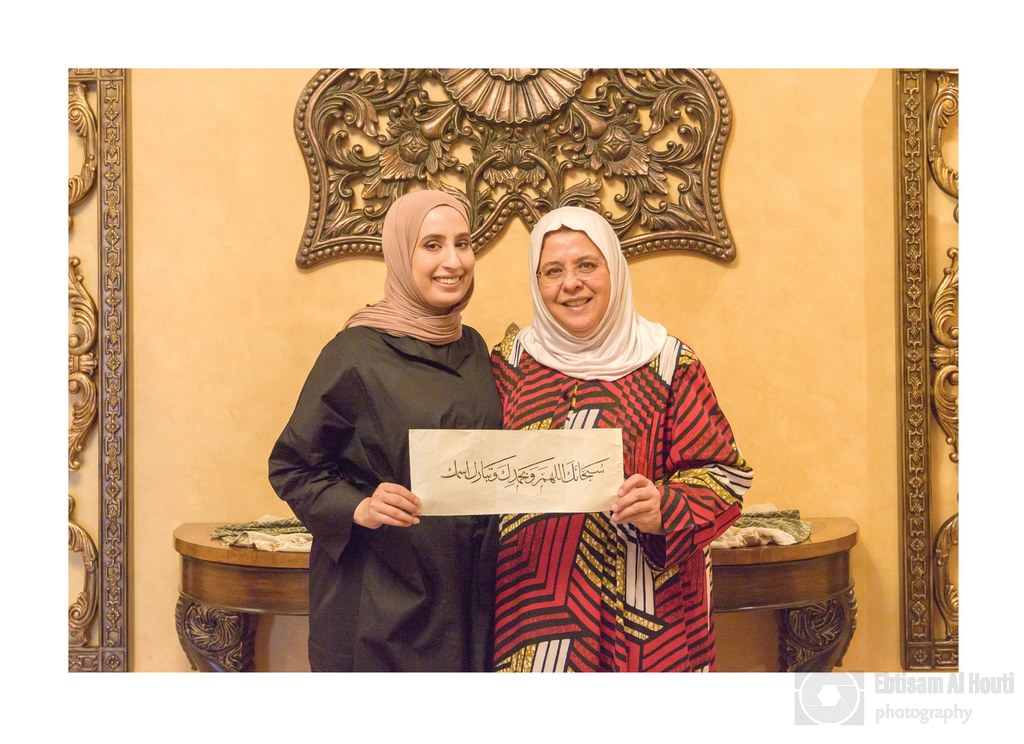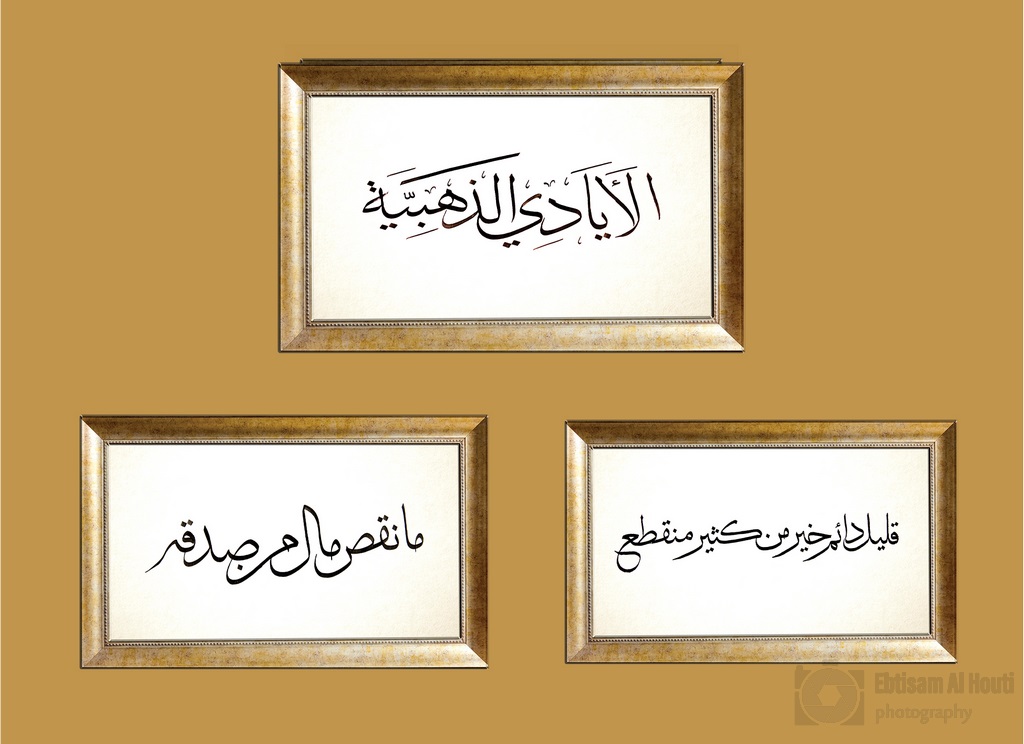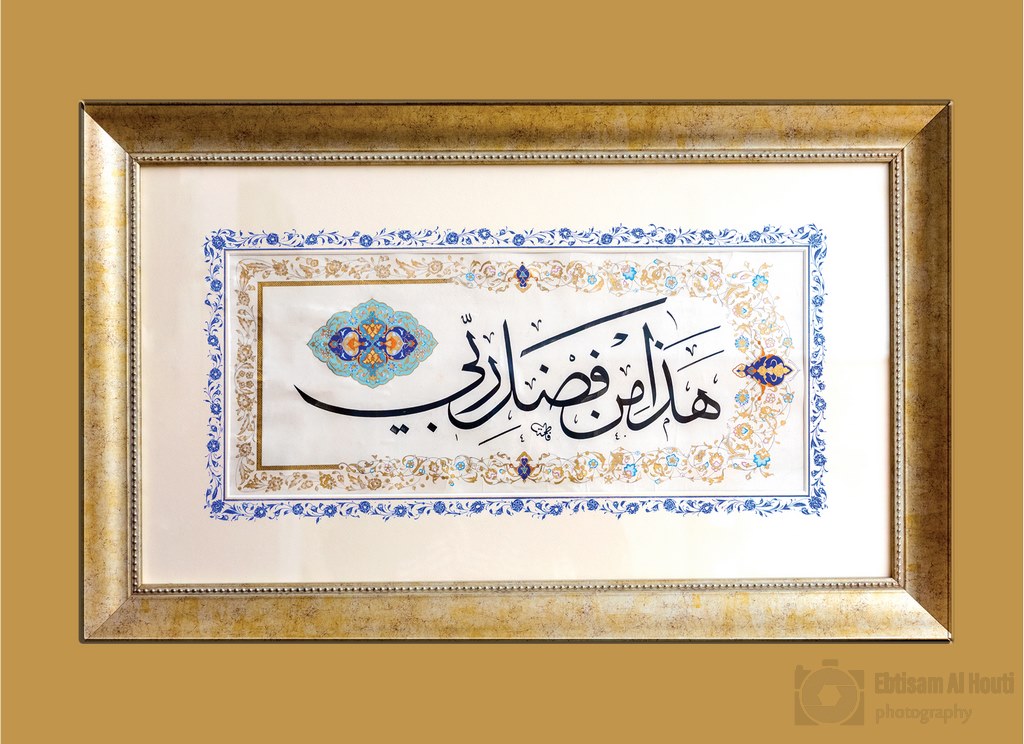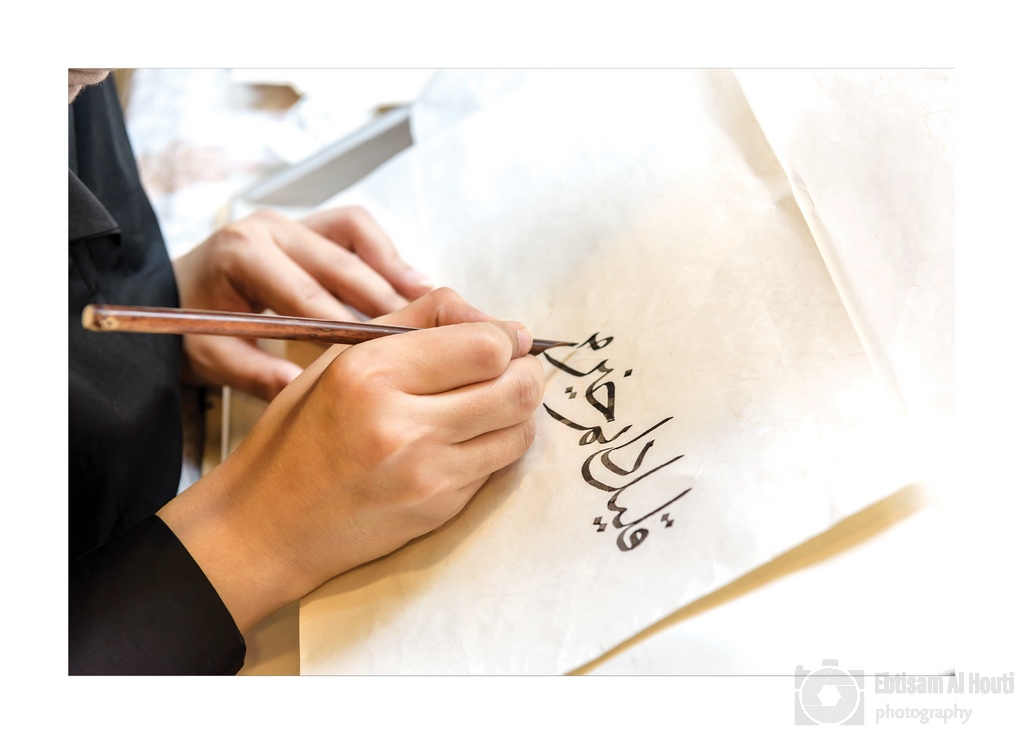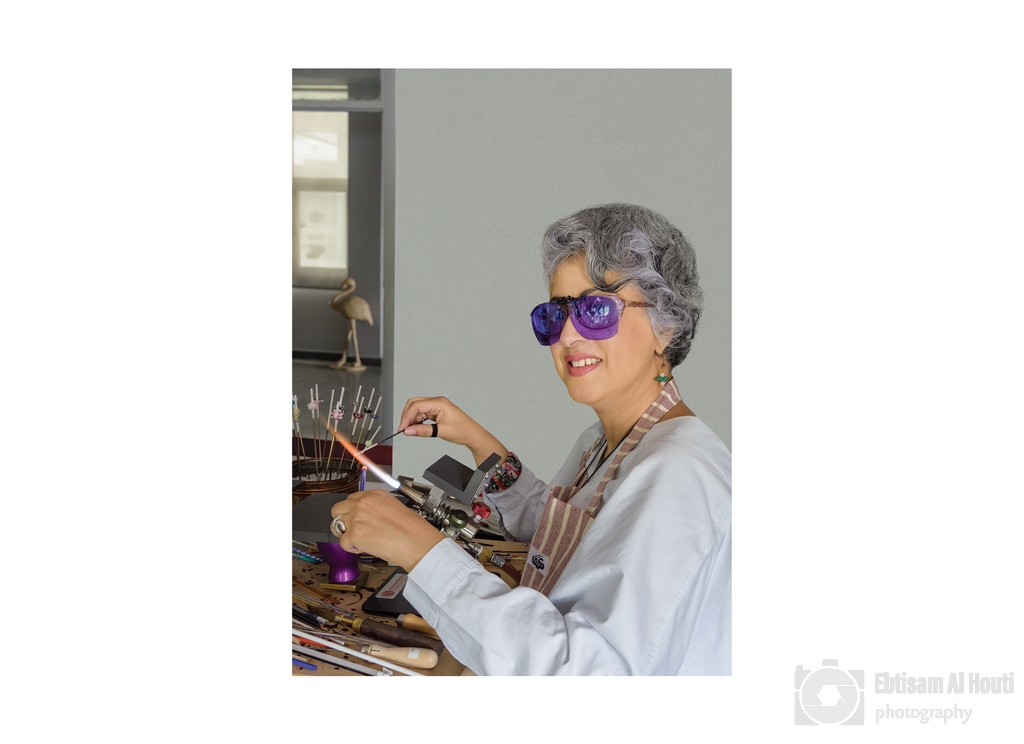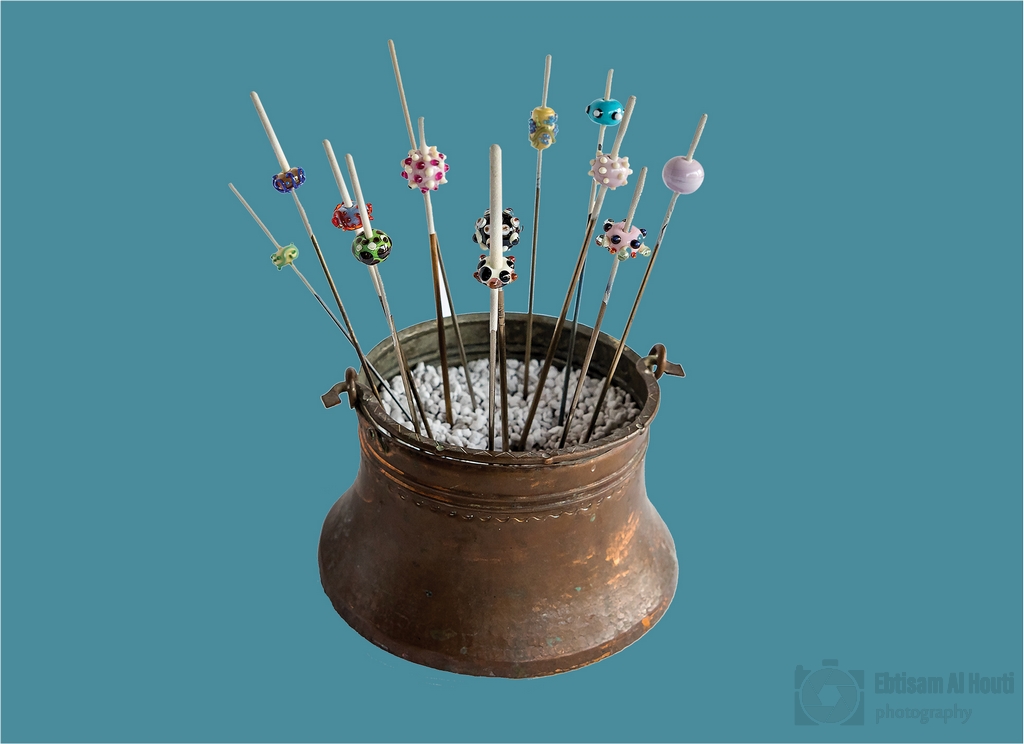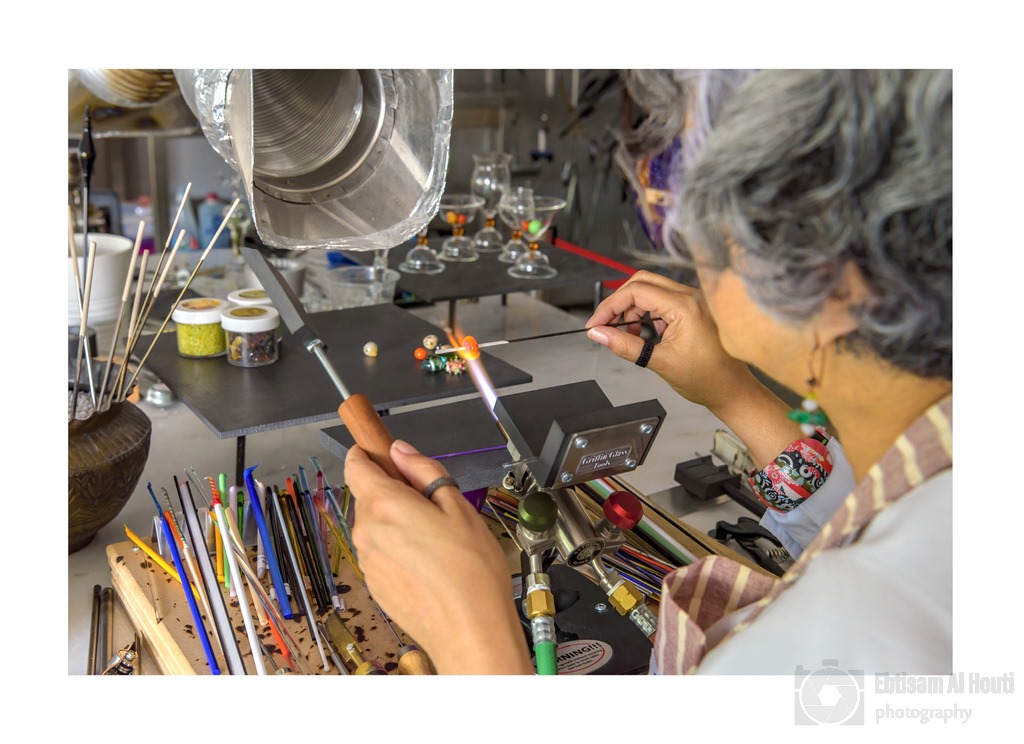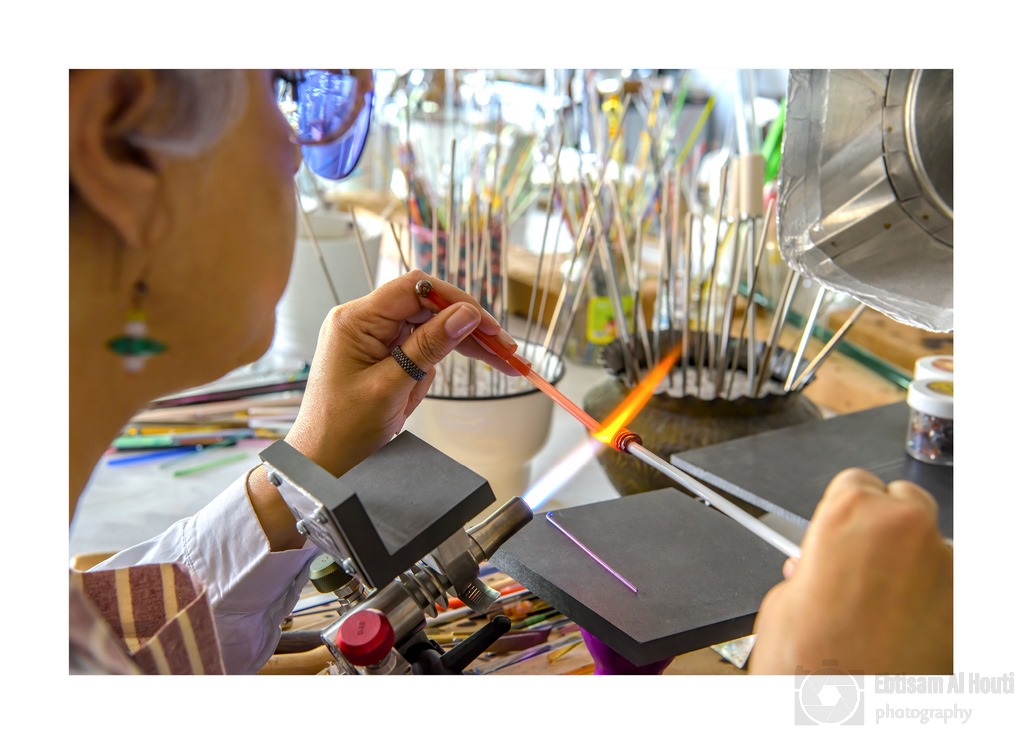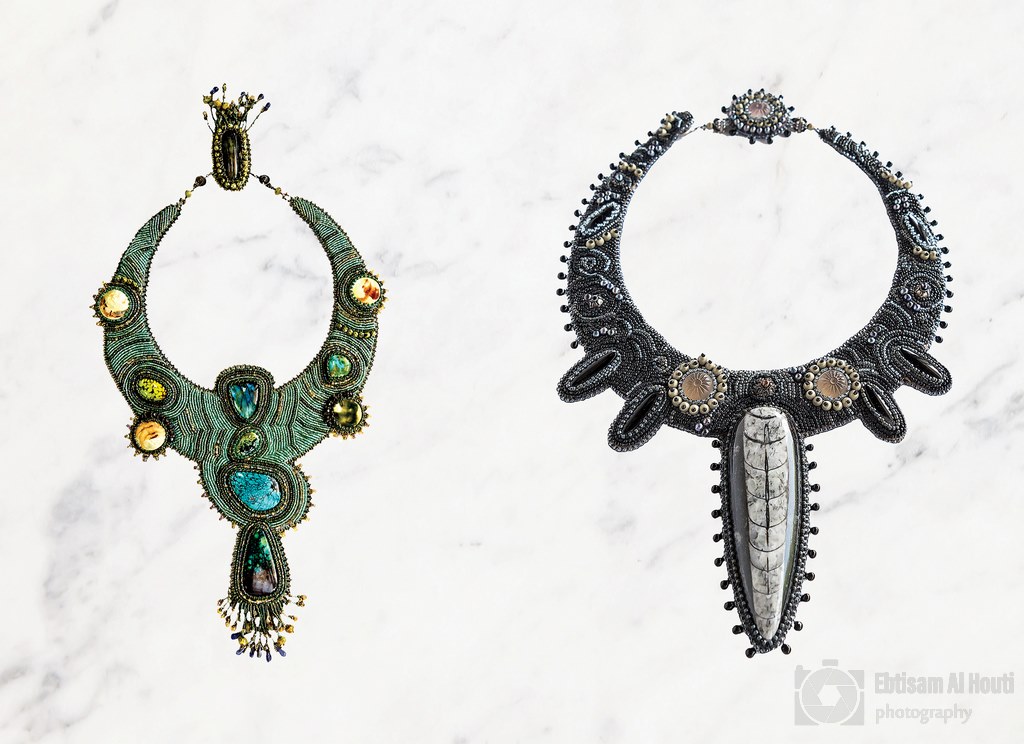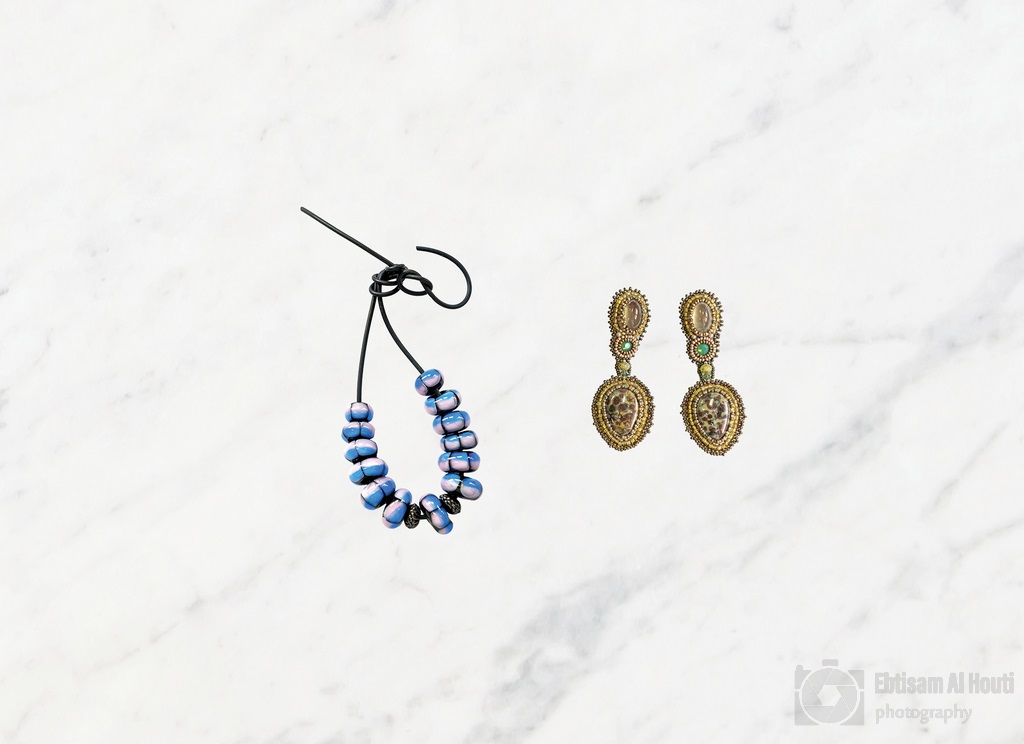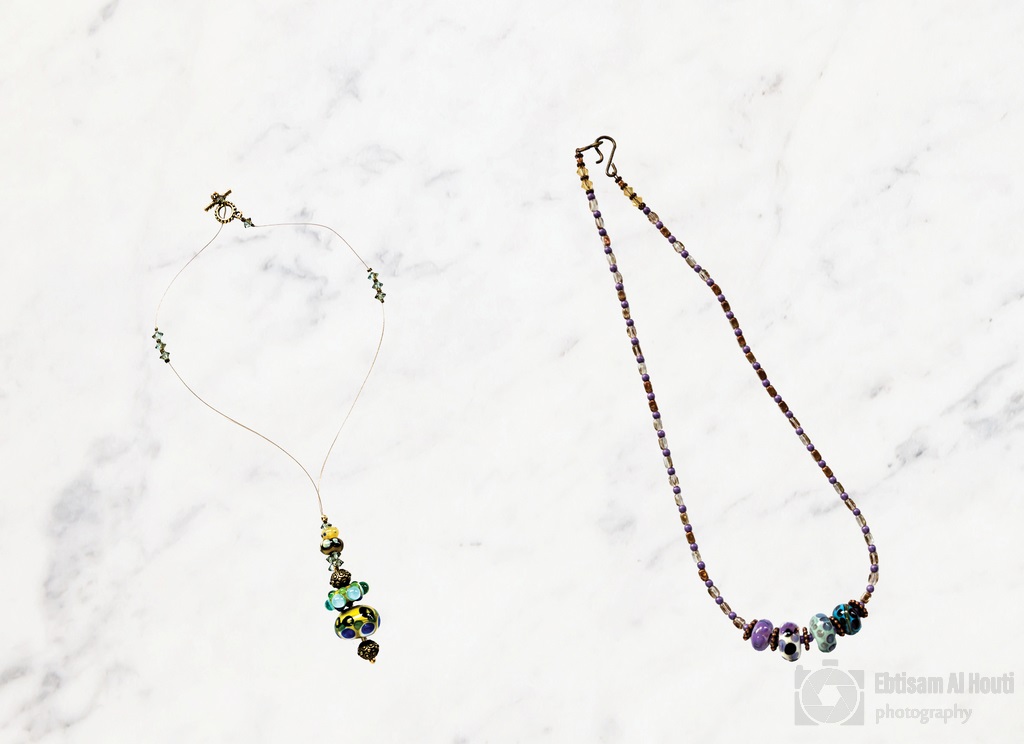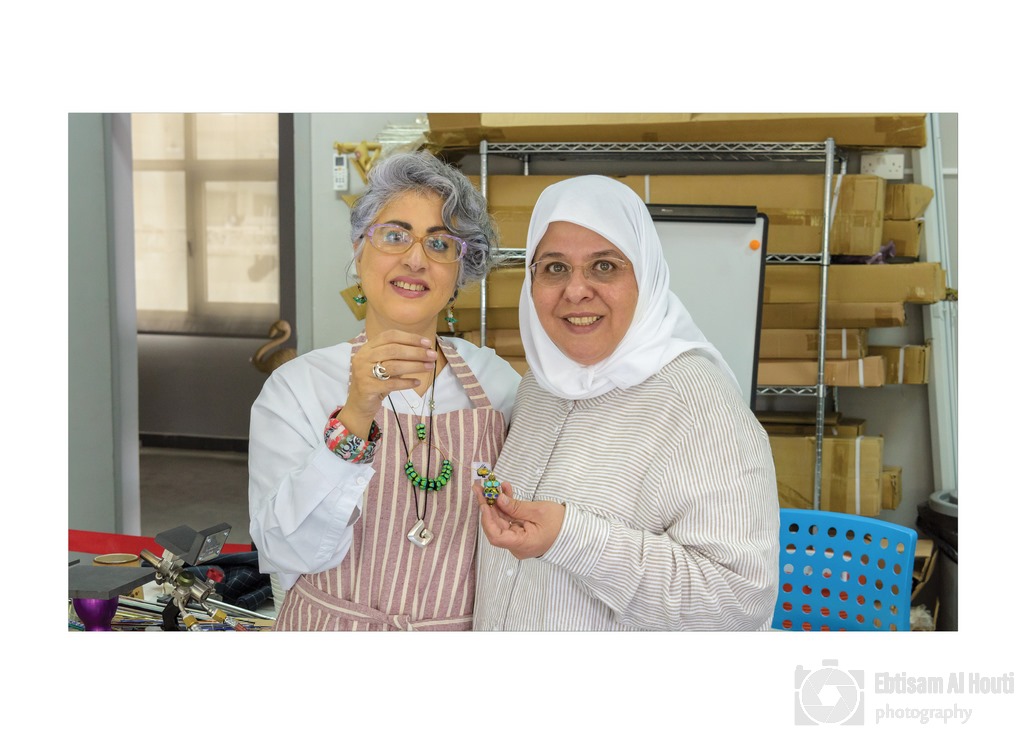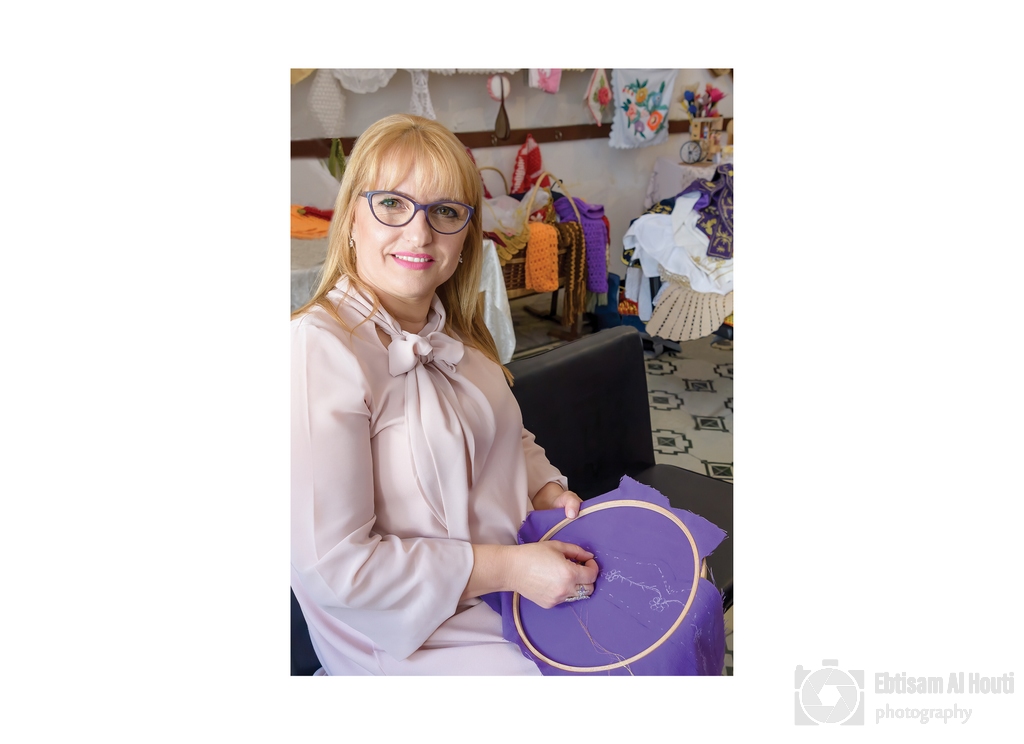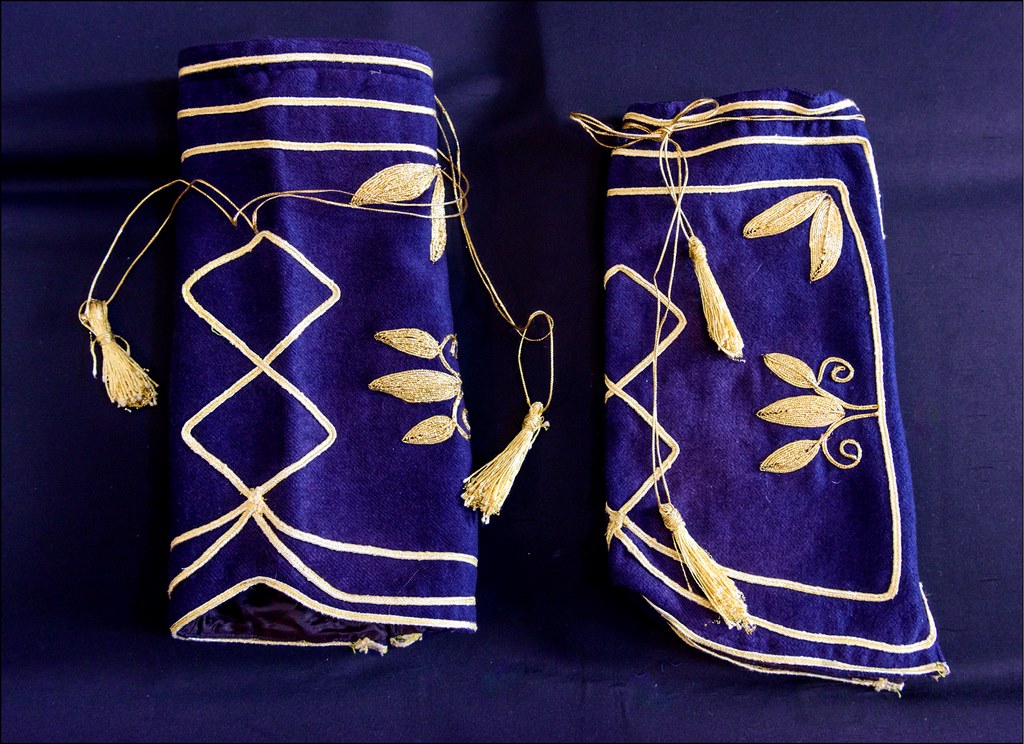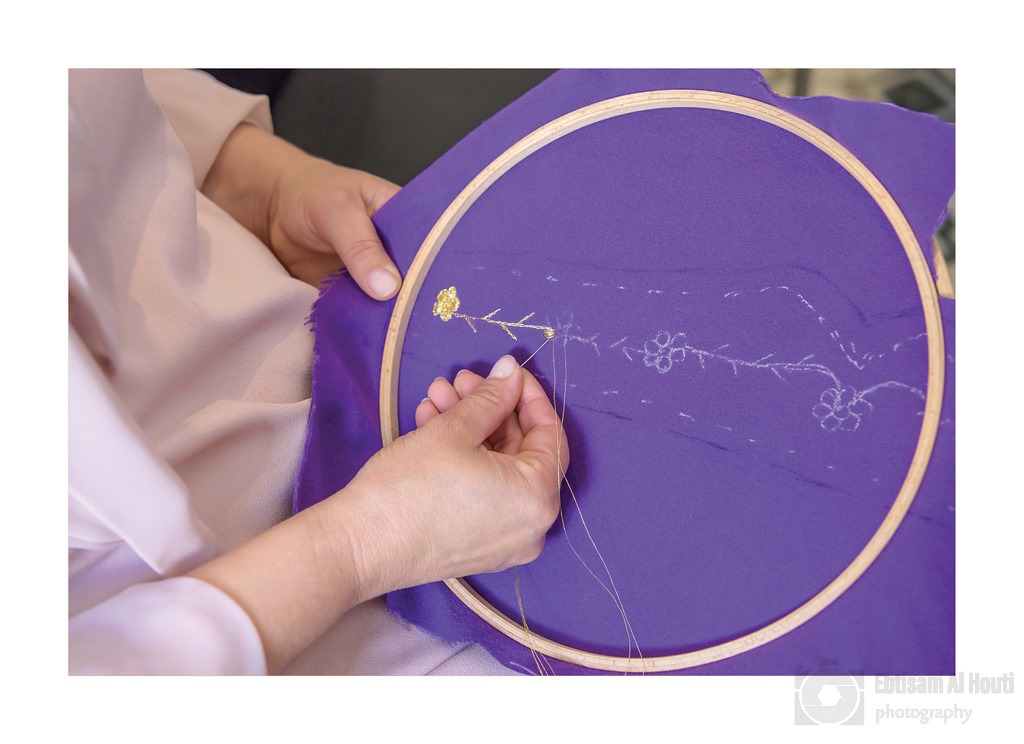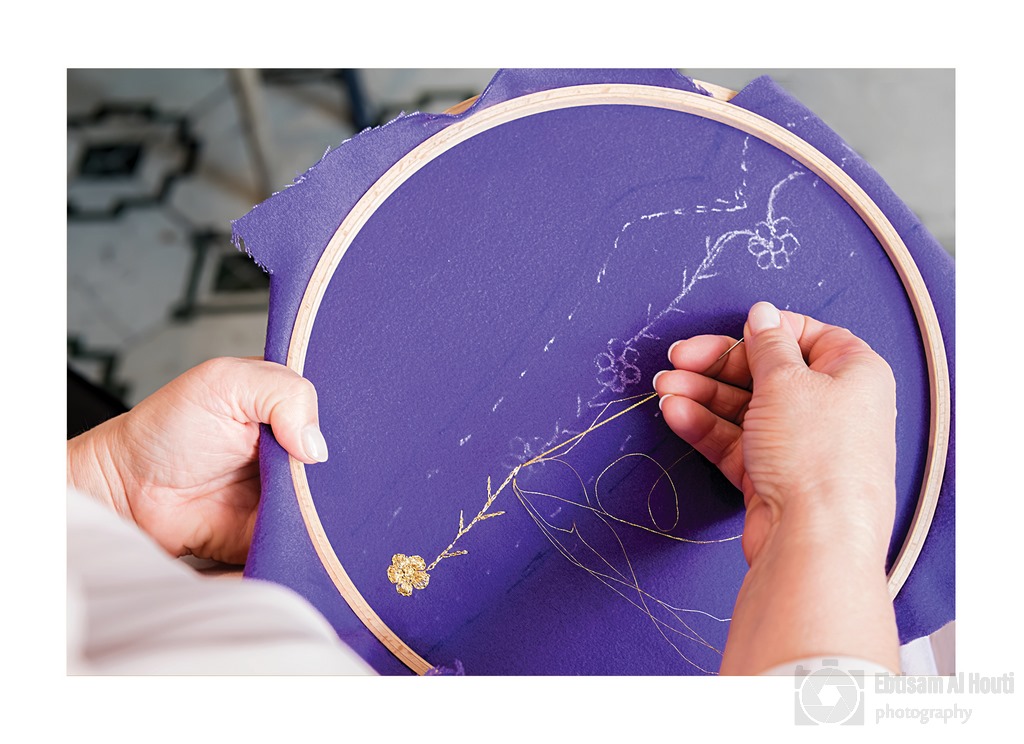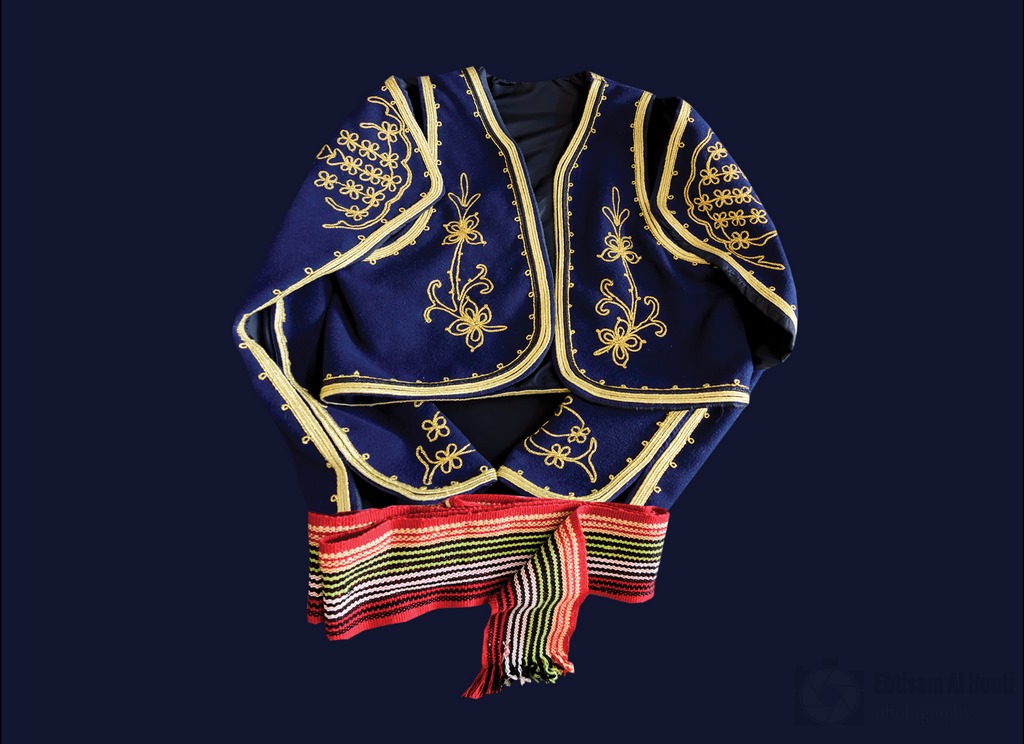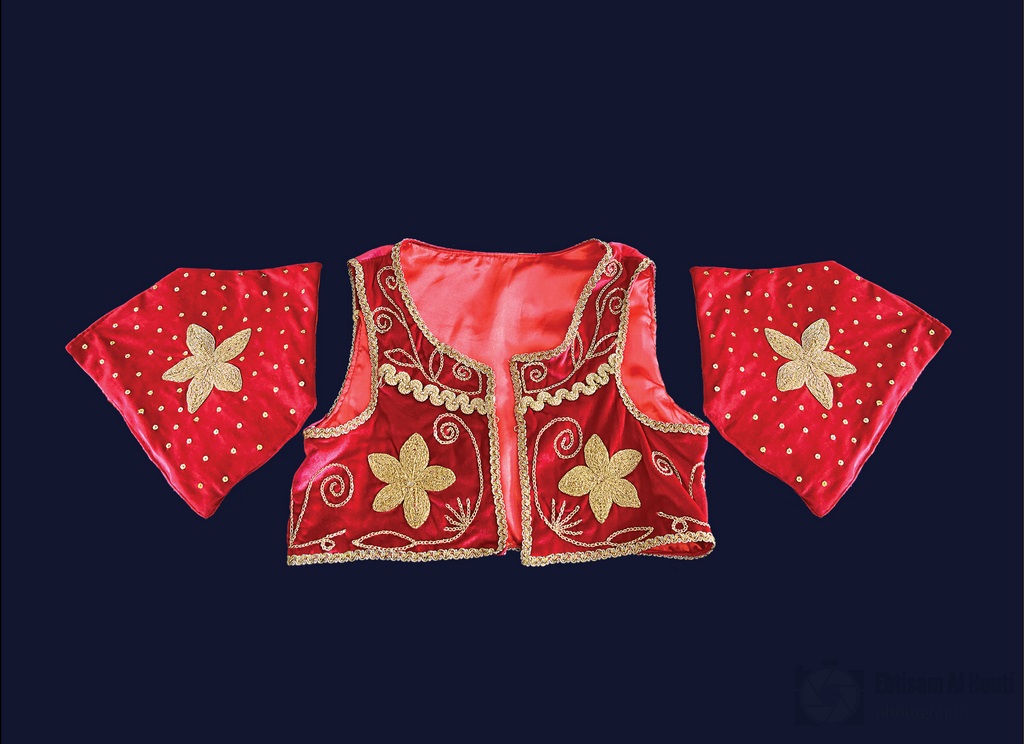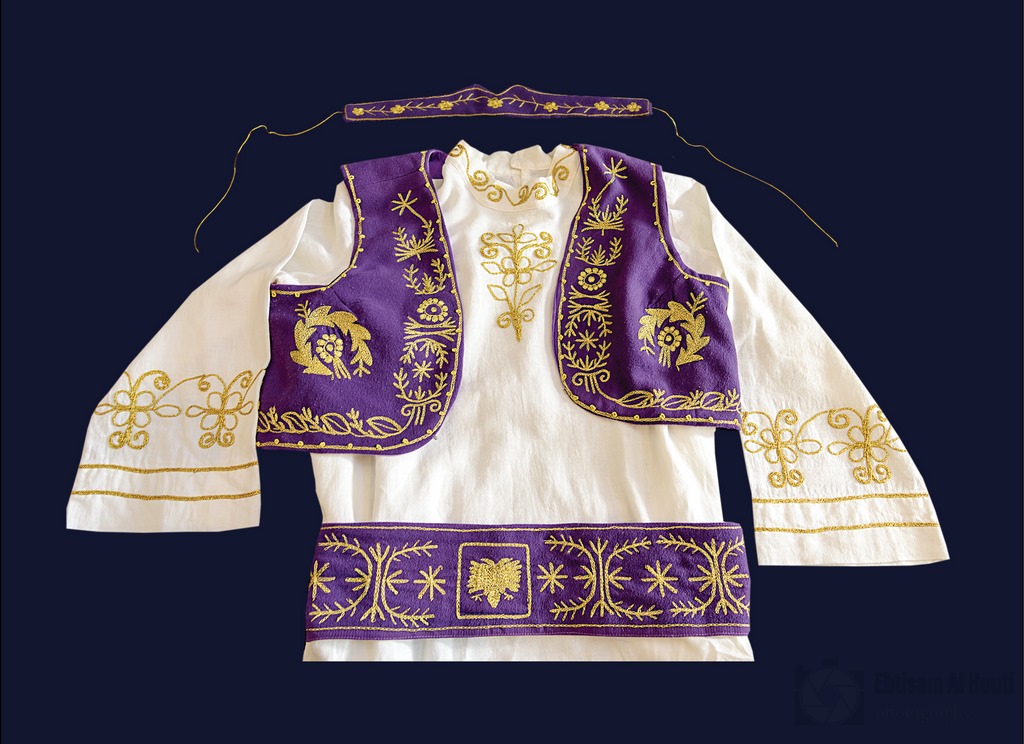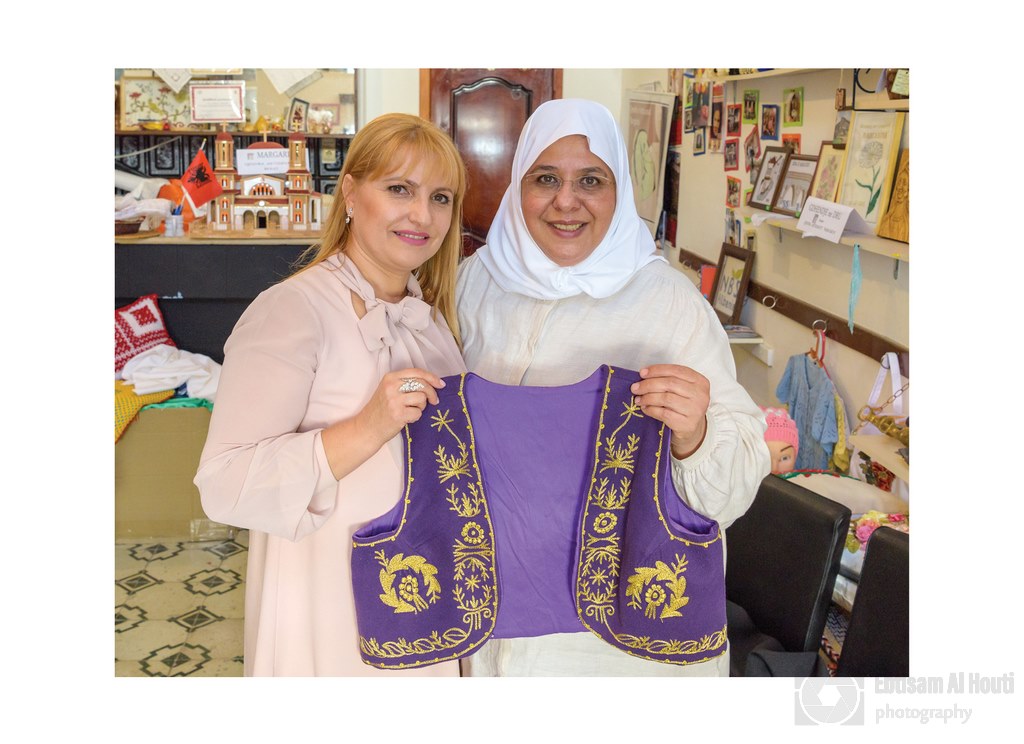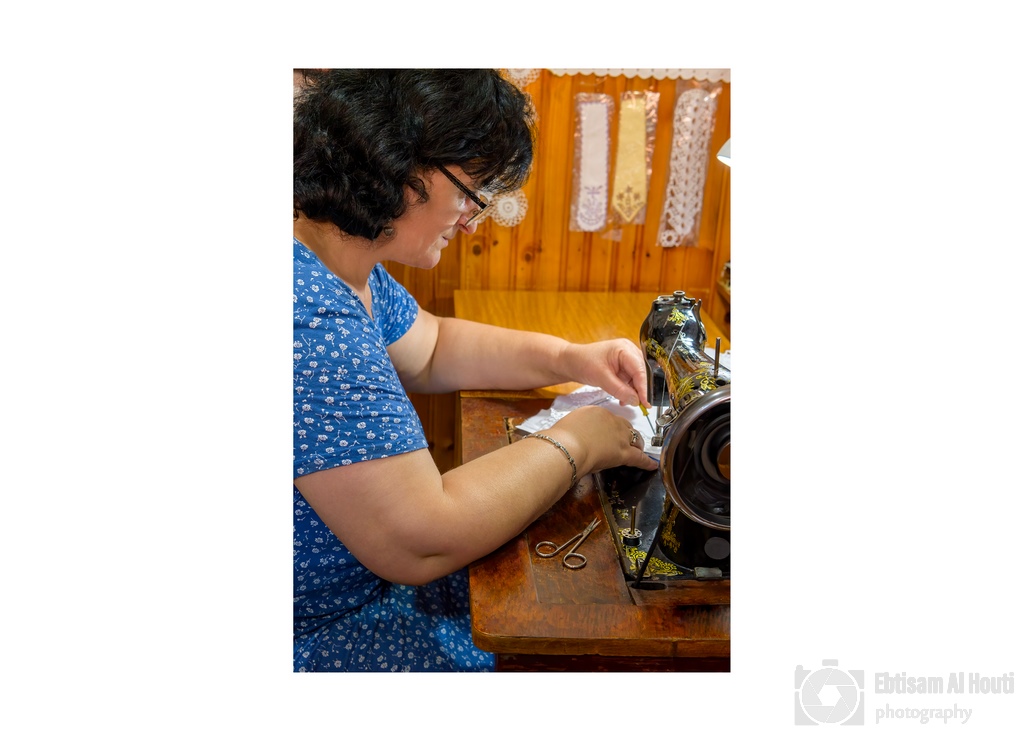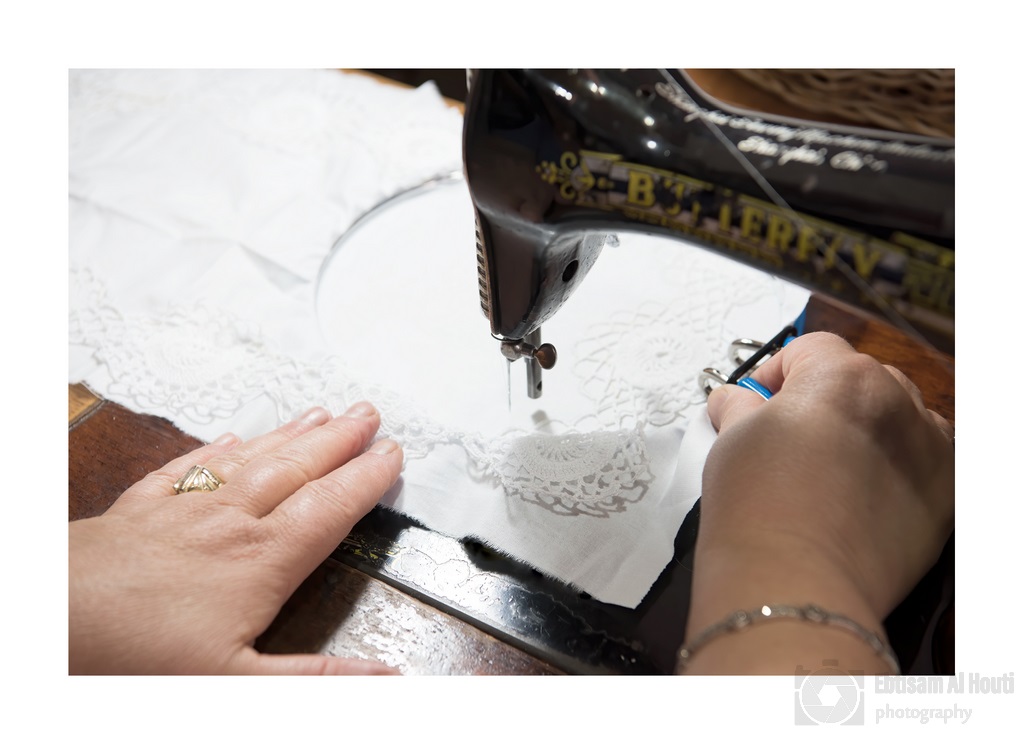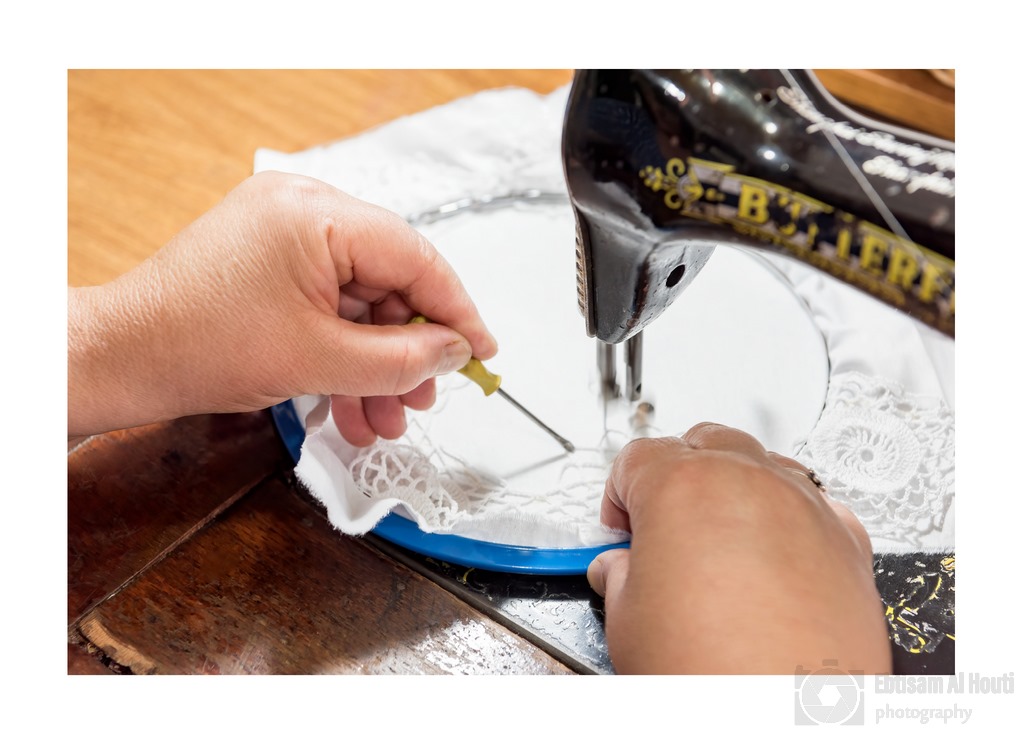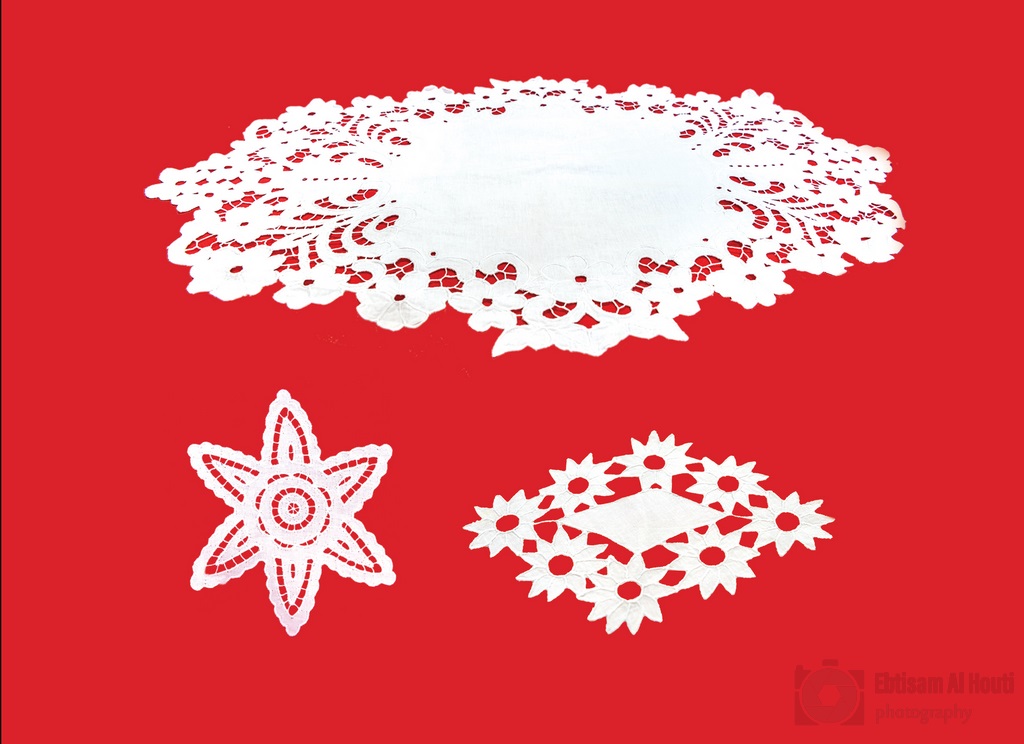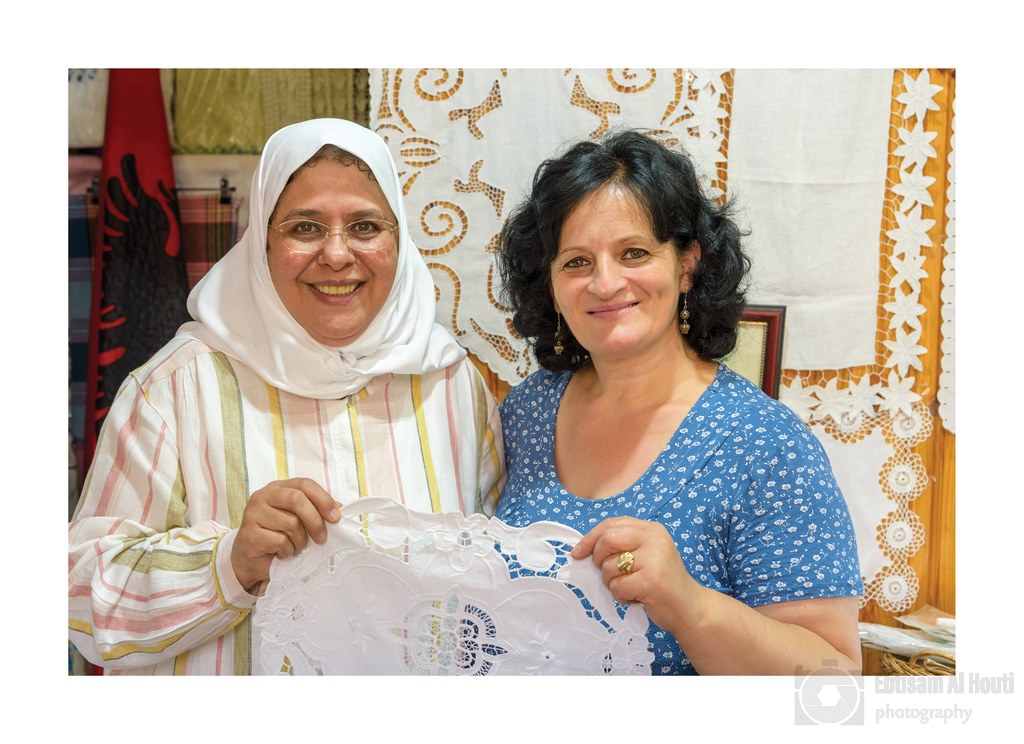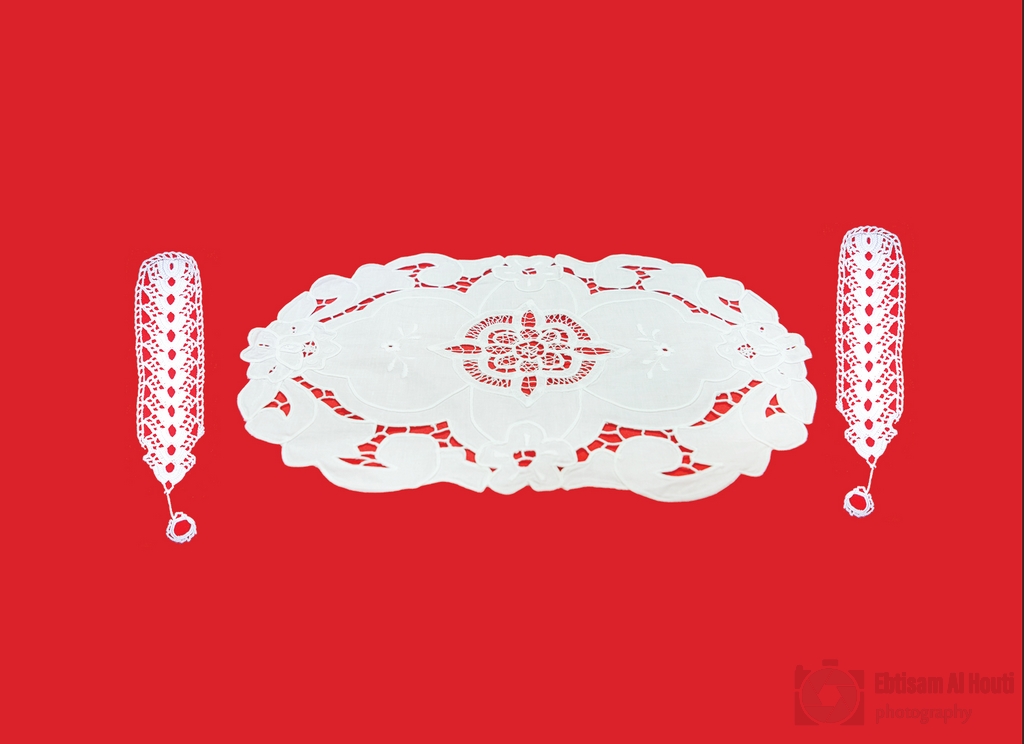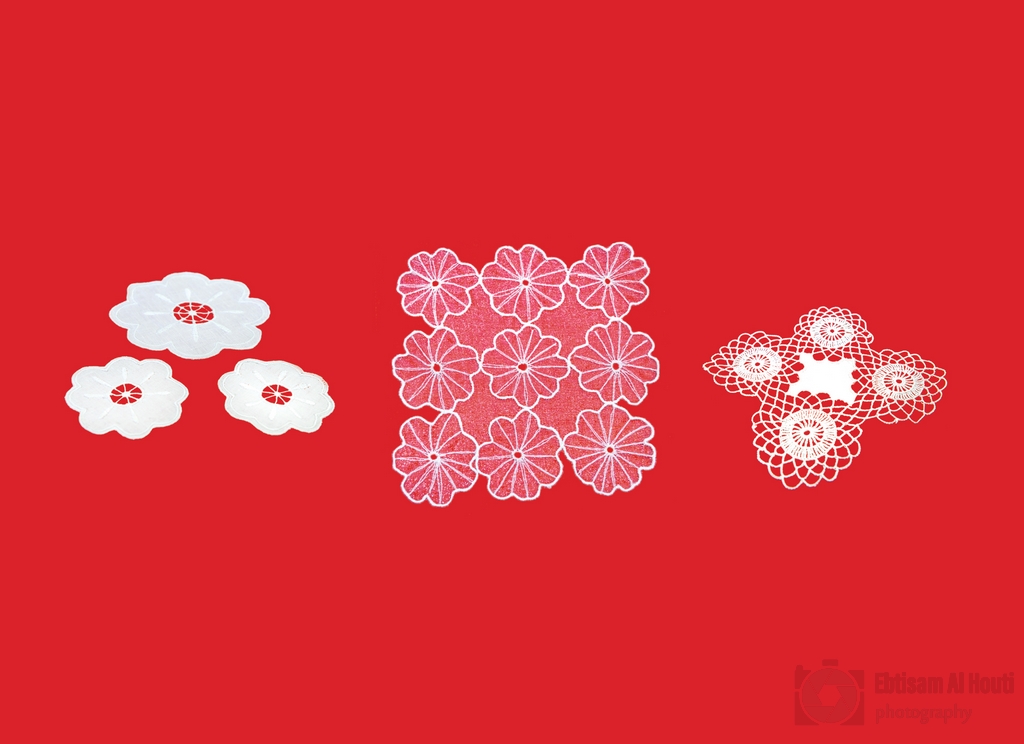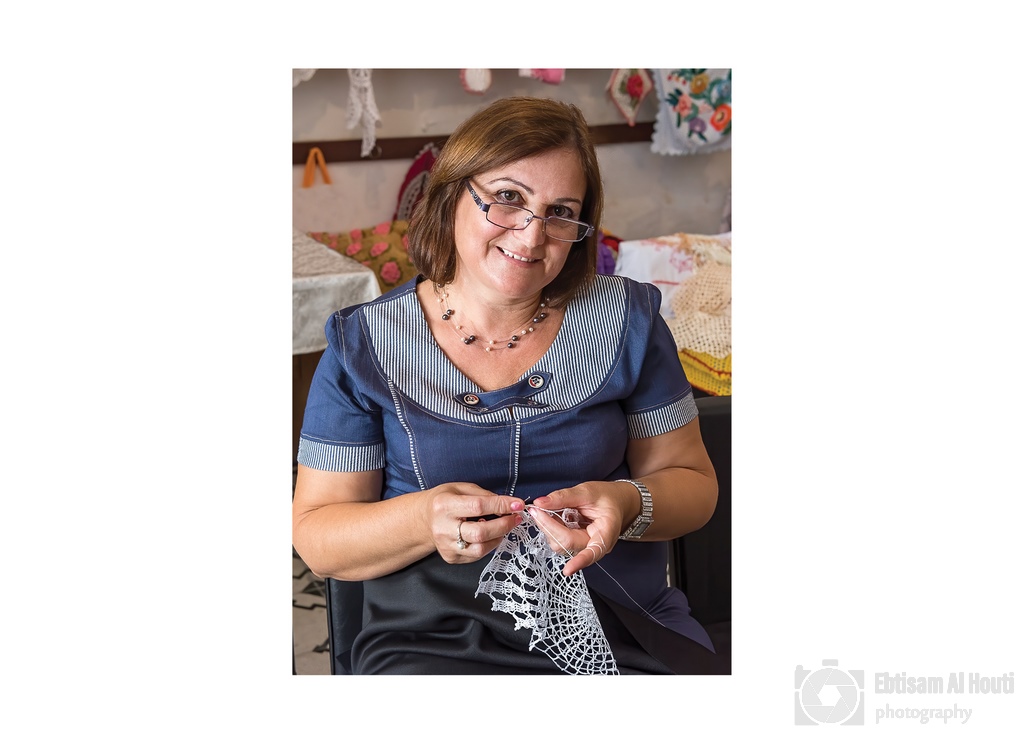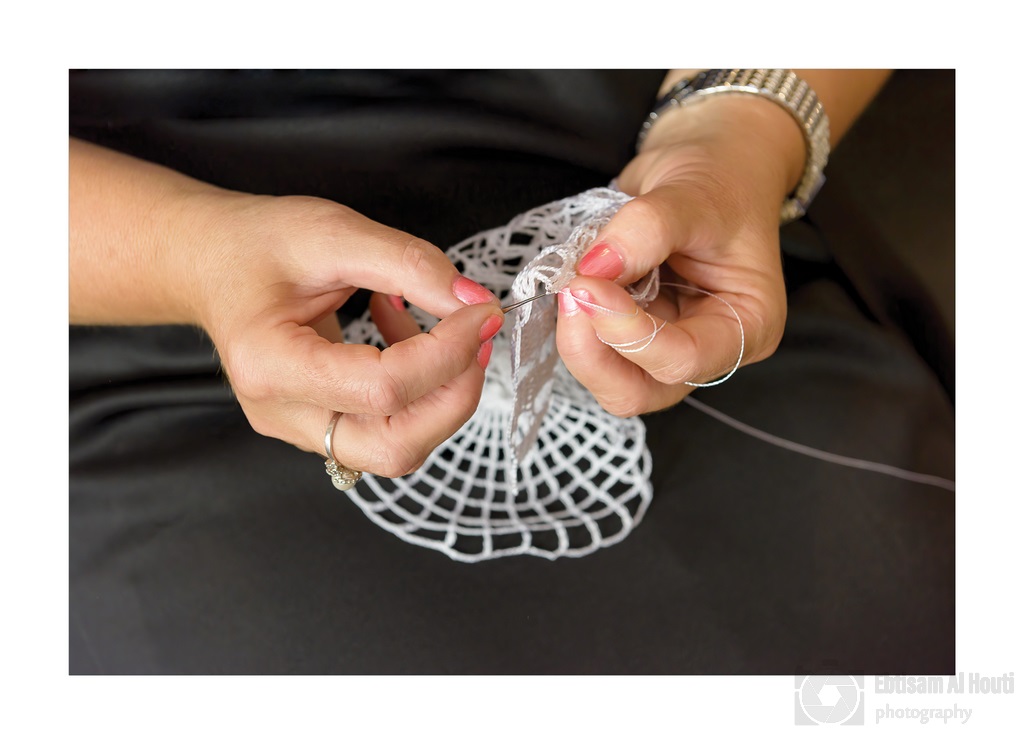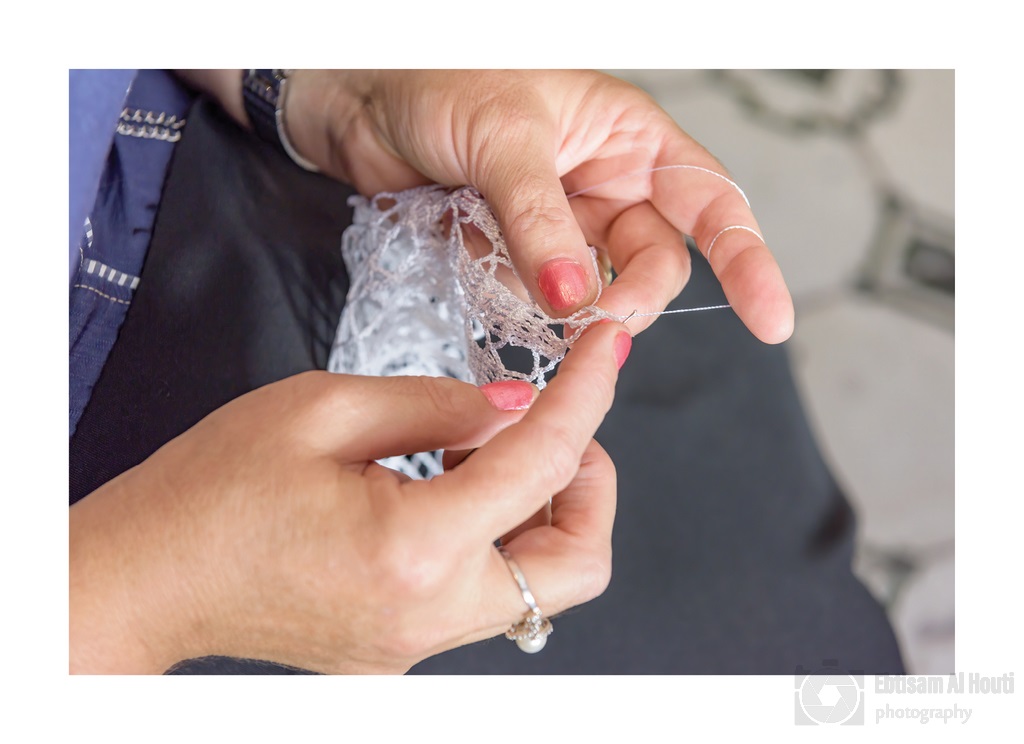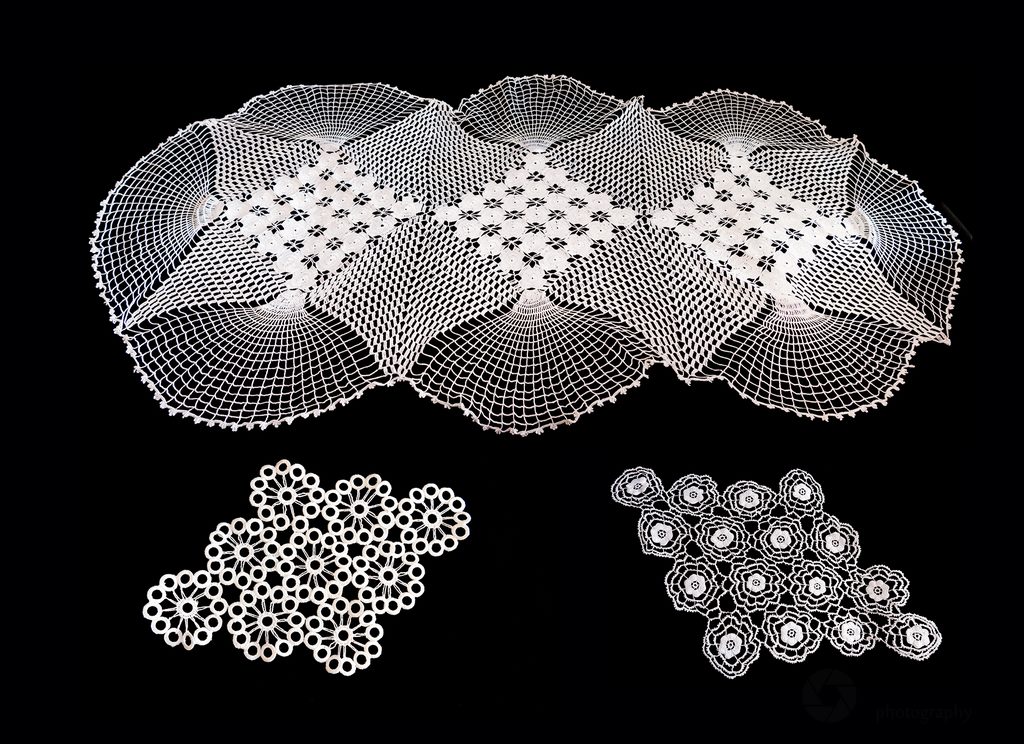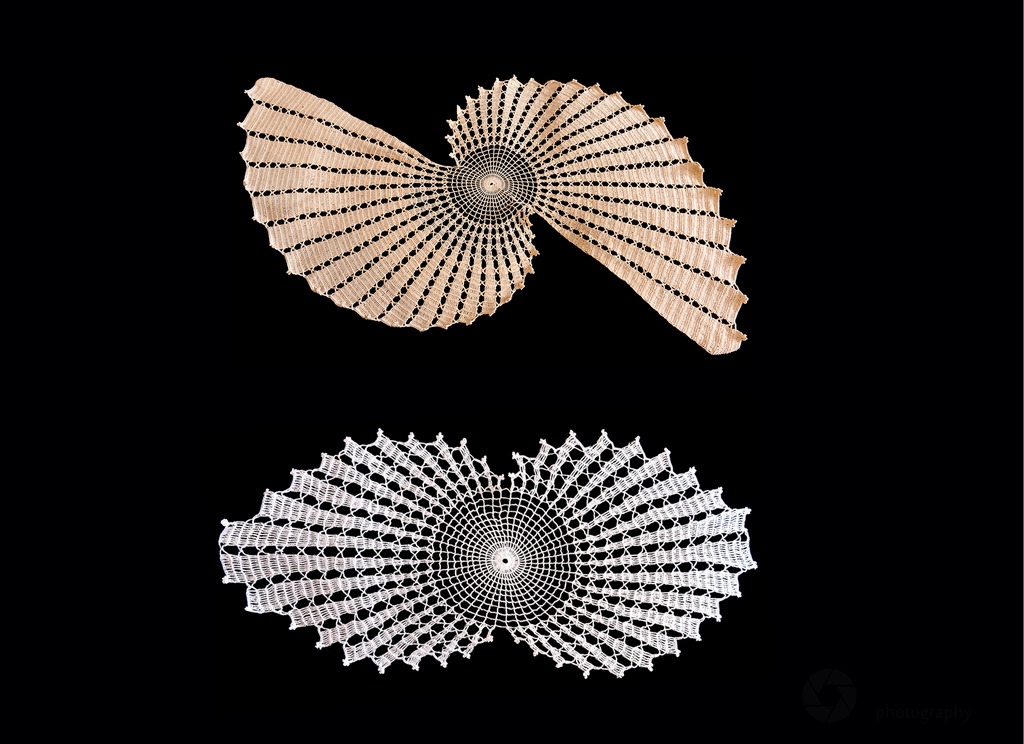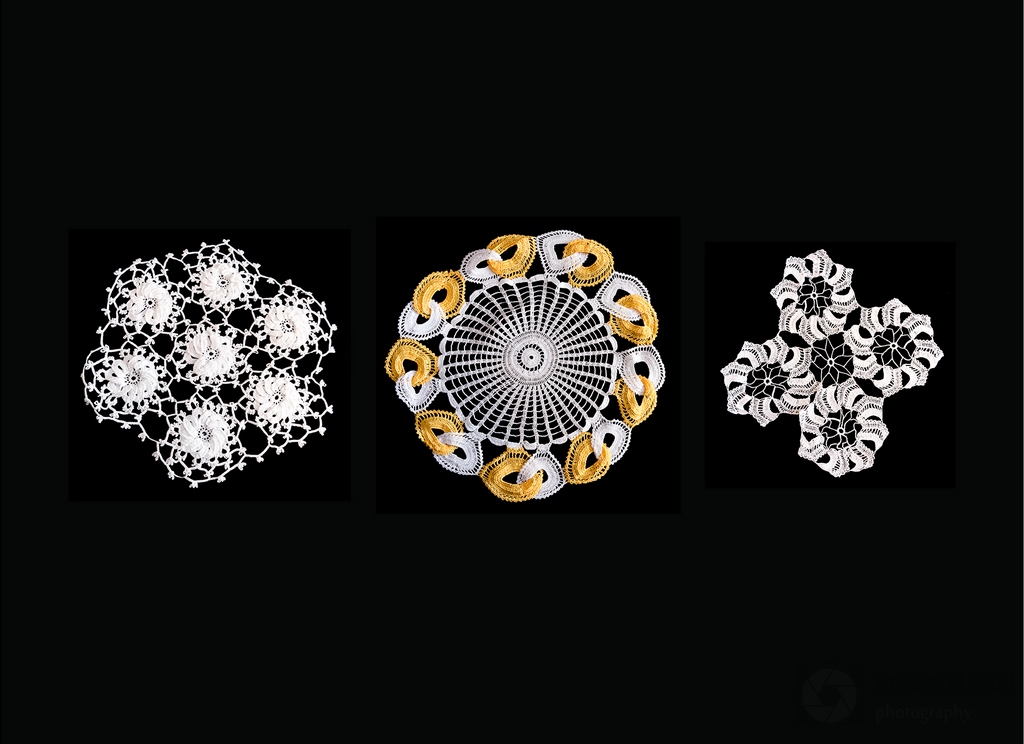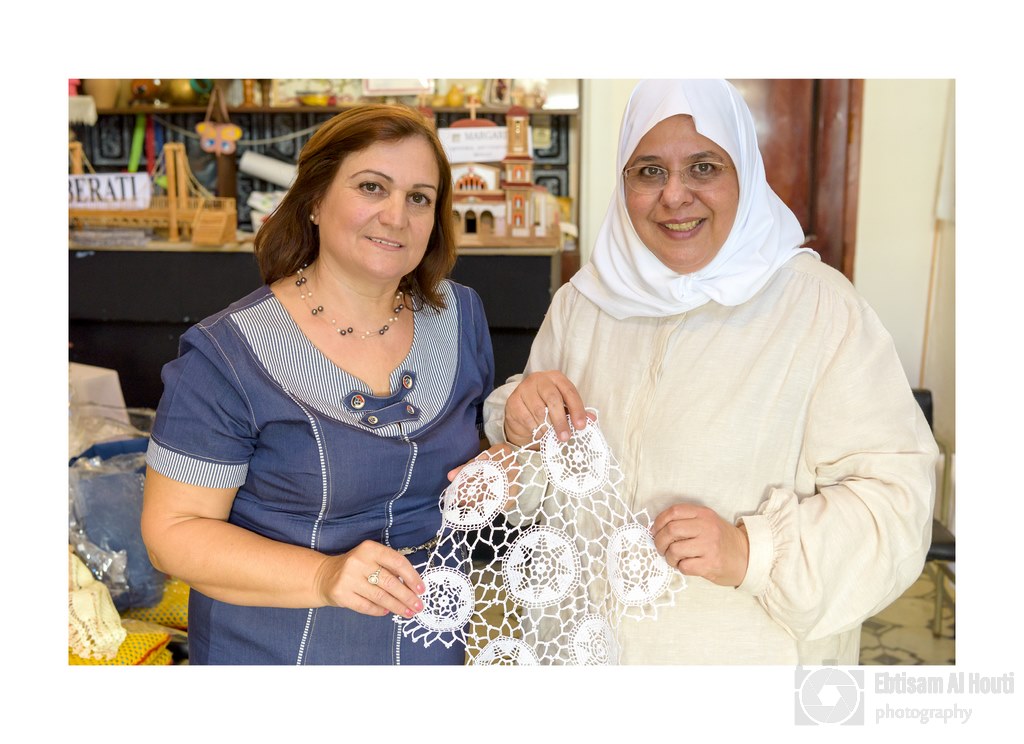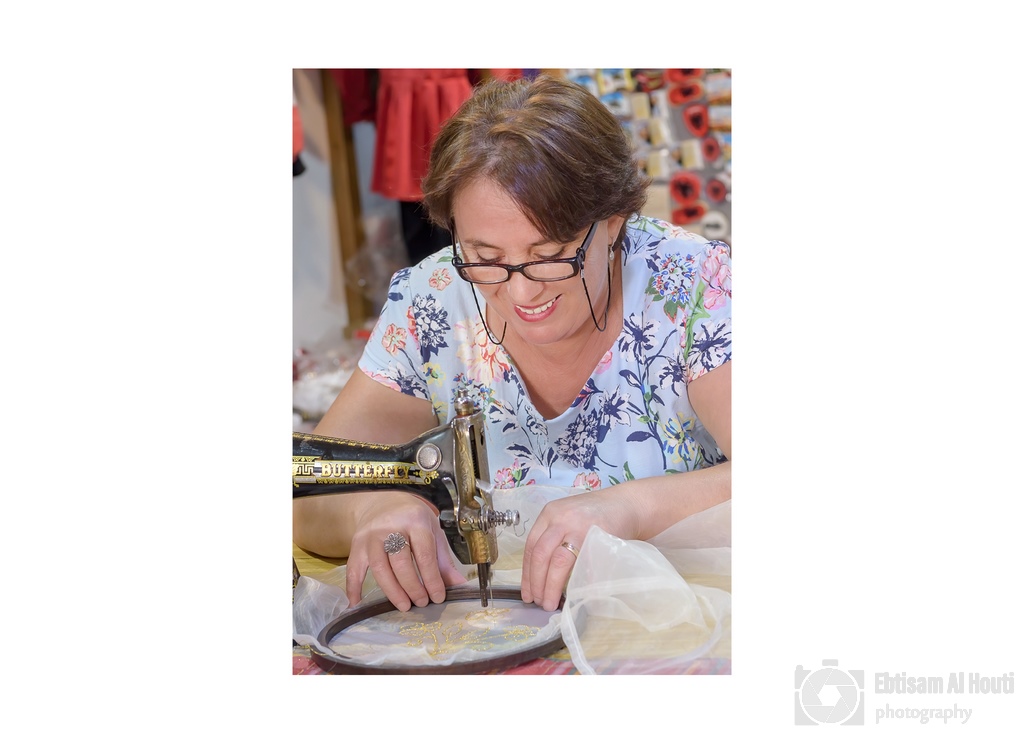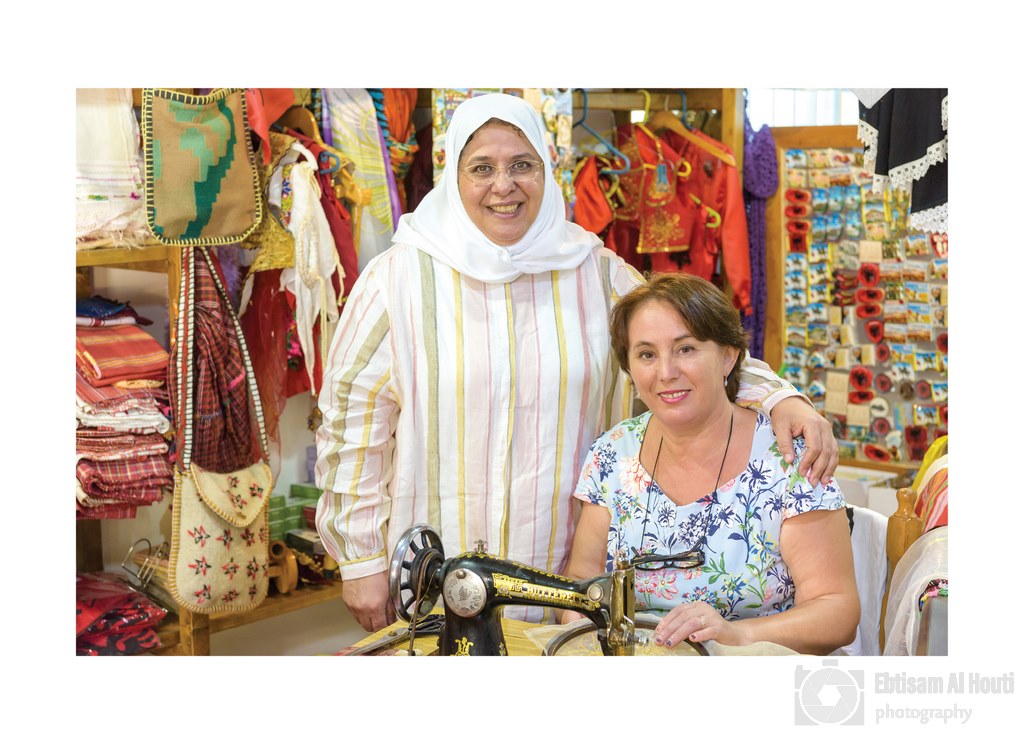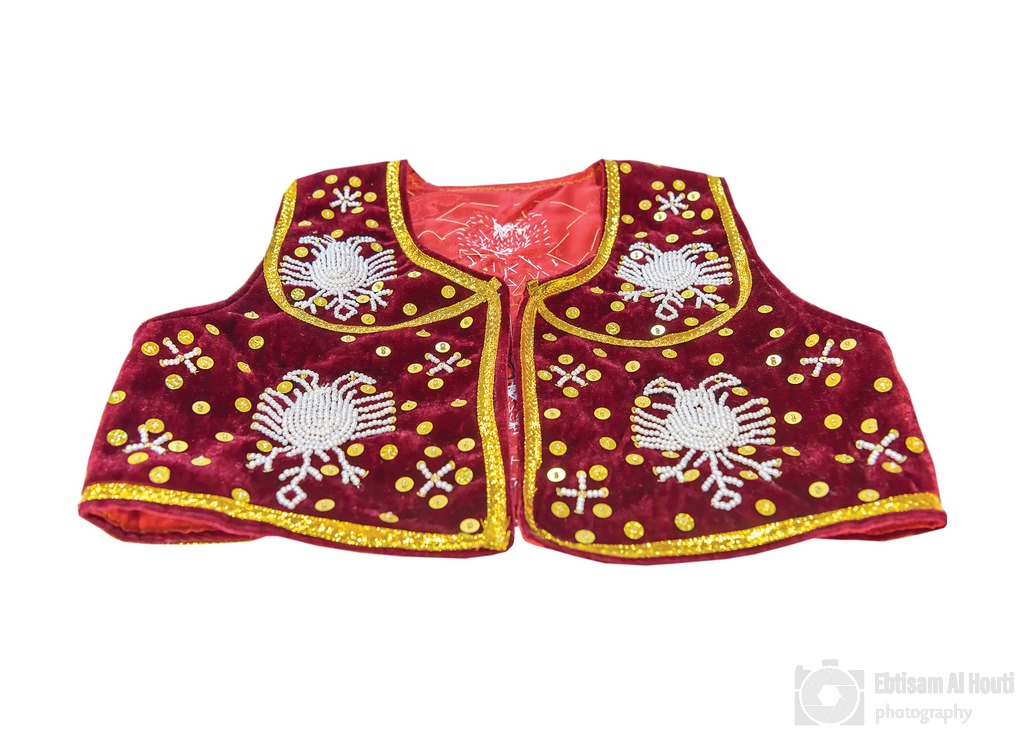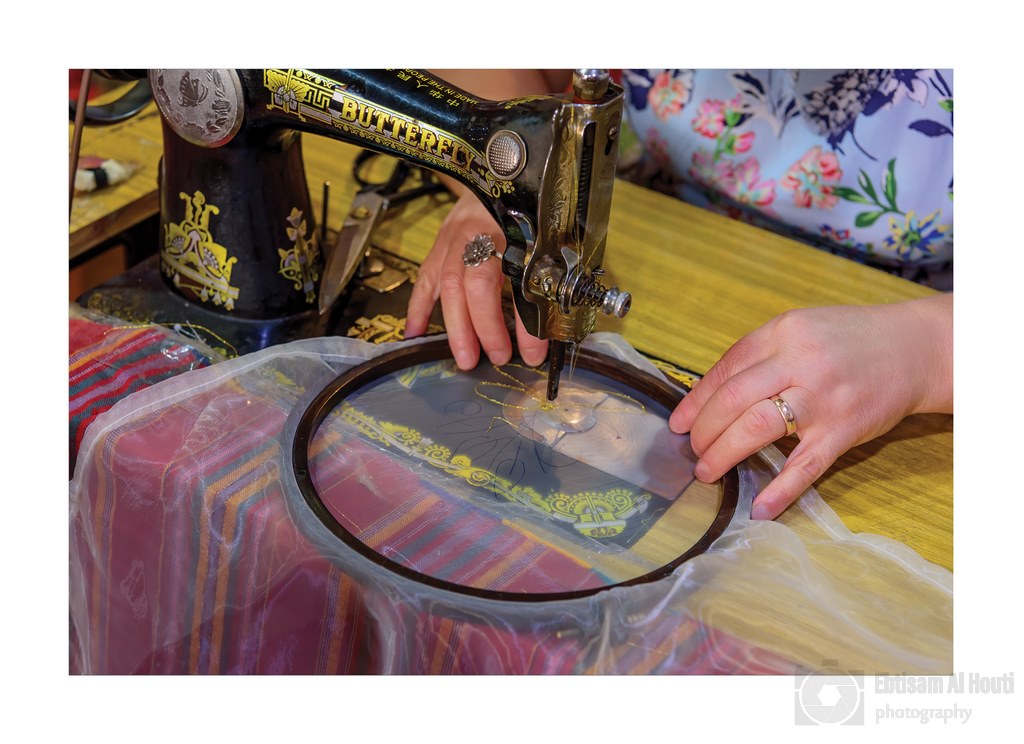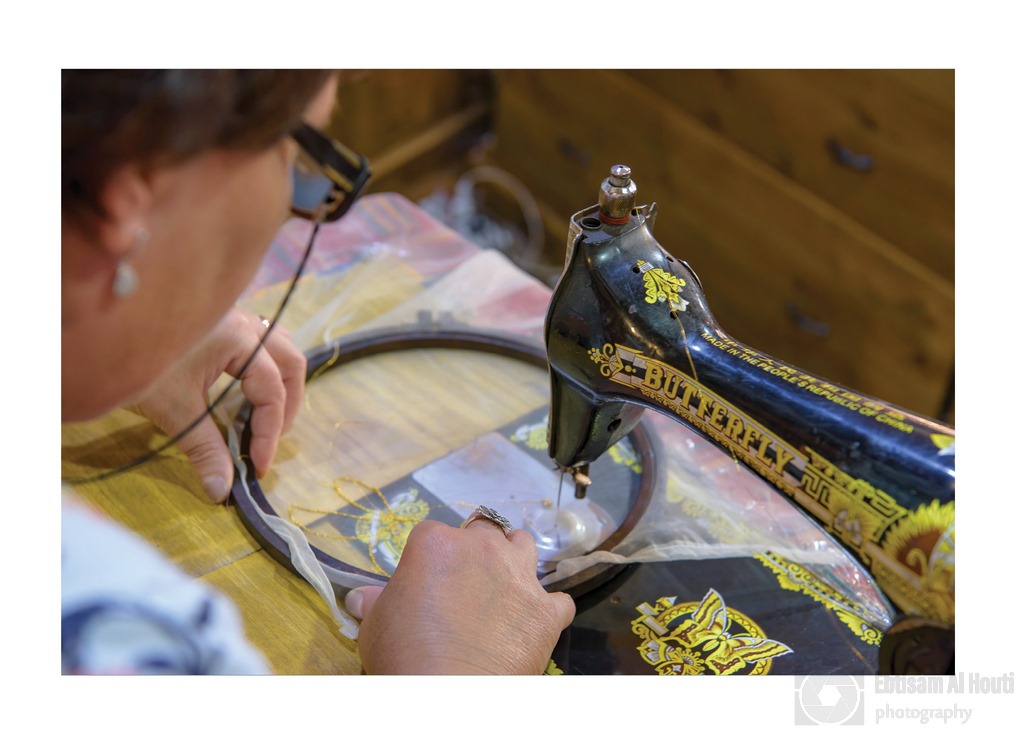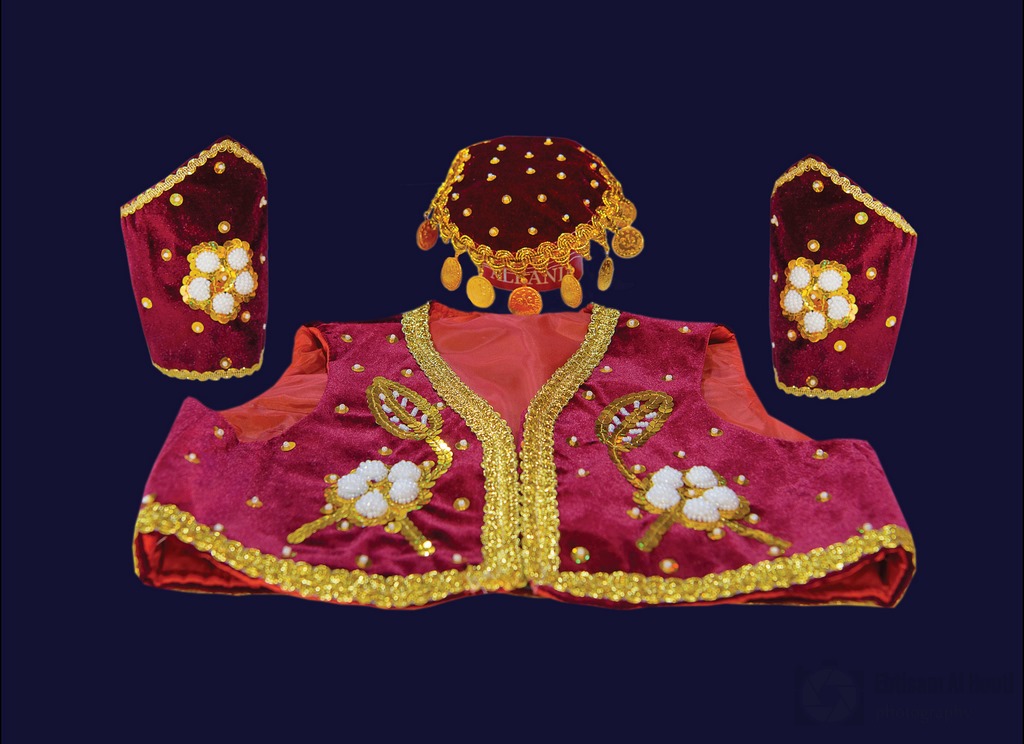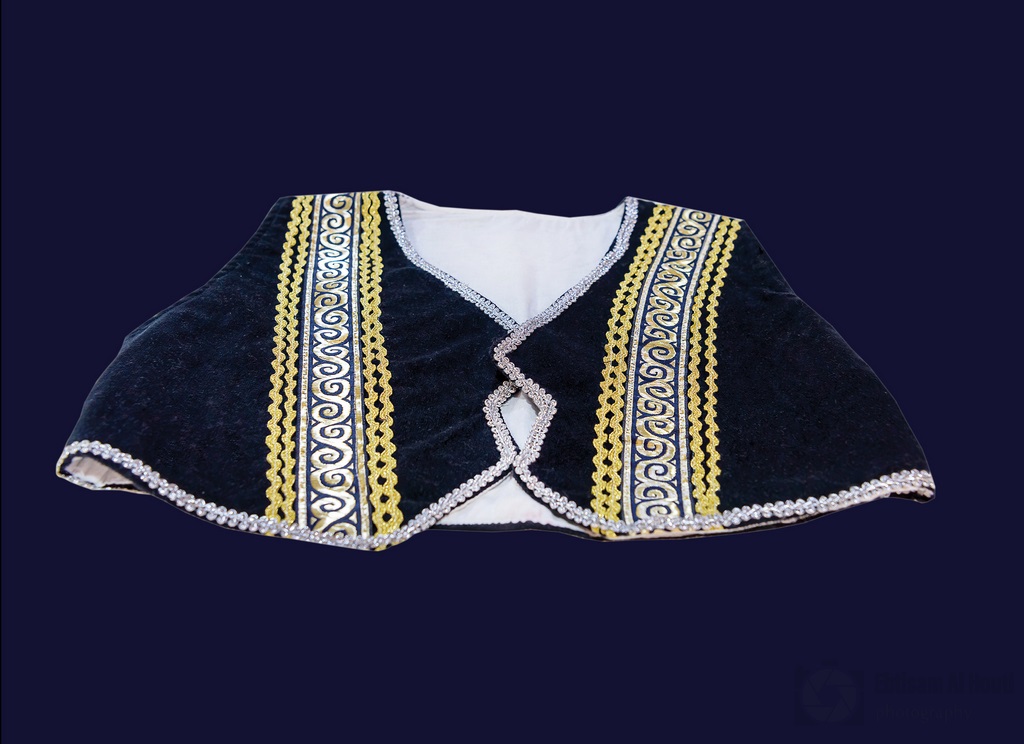“Golden Hands
In the state of Kuwait and the Republic of Albania
“God is Beautiful and He loves beauty”.
Prophet Mohammad (a.s)
Objective of this work
In February, the State of Kuwait celebrates its National Day and the anniversary of its liberation. Accordingly, the photographer Ebtisam AlHouti wished to share the joyous Kuwait celebrations with the Albanian people through this work that highlights the depth of fraternal relations and human, social and cultural values between the people of Kuwait and the Republic of Albania. The focal point of this project is to shed light on the cultural aspect of craftswomen in both countries and their creative works, which reflect their distinctive and delicate artistic touches.
Females symbolize the beauty with which Allah created them. A female plays a critical role in the lives of all those surrounding her: mother, sister, wife, and companion. Everything that emanates from this beautiful creature is as beautiful and attractive as she is. She is a creature full of love, tenderness, and creativity, and is a source of happiness, pleasure, and intellectual and spiritual elegance. She sees things in a broad and holistic view, and produces unique and unmatched creative works that stem from her femininity.
The past was a traditional time, almost devoid of the manifestations of creativity because of the confinement of women to the role of housewife and caretaker. However, she contributed greatly from within her home, as she took care of all the family members and sought to provide them with the complete comforts of their daily lives.
She endured the difficulties of pregnancy, the pains of giving birth and raising children, monitoring their studies and following them up in their early stages so that they could rely on themselves.
However, all such obstacles did not stand in the way of expressing her artistic tendencies and fine taste to create fascinating handcrafts that reflect her creativity and sense of beauty.
Therefore, the artist Ebtisam wished to exploit the inner creativity and talent of women and showcase it to the world.
Introduction
The artist Ebtisam AlHouti has a personality that naturally inclines to beauty and searches for it. She was always intrigued by the similarities between the different nations she has visited during her travels.
Specifically, she was intrigued by how creative women from different cultures can fully understand one another despite their varying cultural backgrounds. Consequently, the artist began to document the work of a unique selection of creative female artists from two countries that differ in geography, environment, history, language, and culture and are physically thousands of miles apart, namely, the State of Kuwait and the Republic of Albania. The participating artists belong to different generations; and therefore come from distinctly different paths of life. The artists in this project range in their education level to include both the uneducated and the highly educated
The artists include the student, the employed, the retired, and the housewife; as well as single women, married women, mothers, grandmothers, and widows. In an attempt to enrich this project, a diverse range of handicrafts was selected to ensure true representation of the golden hands featured herein and the language and culture of each country, respectively. It was the artist’s desire to highlight the splendor and value of the fine art created by these unique women with golden hands and to educate the youth to the importance of these types of handicrafts.
This work is a humble attempt by the artist Ebtisam to thank and appreciate the women with golden hands for their creative works that not only link the authenticity of the past with the values of the present, but even extend to build bridges through which the present melts into the past, transcending the boundaries of time
and space.
Ebtisam hopes to direct attention to the creative stories of the artists interviewed herein, and to be able to illustrate the greatness she witnessed in their personalities. They are each a unique blend between the qualities of a peaceful and friendly personality, a pure and humble soul, and a strong and determined character. It is worth noting that these artists with golden hands have an admirable relationship of love with their beautiful works of art; may Allah bless those golden hands for what they create of
distinctive art.
A total of eighteen female artists were interviewed, nine from the State of Kuwait, and nine others from the Republic of Albania. All the interviewed artists are specialized in diverse handicraft arts. The main purpose of this work is to get to know the featured artists up close and to learn about their craftsmanship and to display their handiwork.
ARTISTS WITH GOLDEN HANDS AND THEIR BEAUTIFUL ART
Visual art
Plastic Art is one of the most important visual arts that has become a reflection of the infrastructure, culture, customs and traditions of a society. It is a sort of applied/industrial art, yet these concepts have changed and multiplied in the modern age according to the environmental conditions that are the first factor of effect in the arts through the ages. Social and political perceptions have emerged to include the social role of women and their influence in the various plastic arts, such as ceramics, glass, mosaics, curtains, printed fabrics, woven furniture, and all other similar arts.
Bazza Albateni
Eda Seferi Budurushi
Reem Albader
The art of carpentry
The art of carpentry is a form of art that may be categorized within the genre of ancient architecture. The term ‘architecture’ may be described as a construction of solid objects and materials arranged to occupy a certain space for utilitarian purposes and designed in a beautiful artistic manner that emanates the sense of
comfort. The art of carpentry in specific is concerned with all matters related to wood, whether natural or synthetic, and used in the manufacture of objects that benefit human beings, such as furniture, frames and wooden decoration. These objects may also representative of the history and traditions of some cultures.
Reem Alnouri
Florinda Manushi
Art of formulation of jewelry, trinkets, copper and metal works
Precious materials have been incorporated into weapons, crowns, earrings and other objects since ancient times. The formulation of gold, trinkets and jewelry is one of the crafts that has demonstrated human genius and creativity, these also include artistic works made from copper, silver, gold and other metallic materials in which metal is carved or formed with different designs. Much jewelry was found in tombs where they were buried with their owners, bearing cultural, social and aesthetic value.
Muneera Alsharhan
Alma Spahai
Farah Bastaki
Ceramic Art
An ancient art known from the earliest times of human history, ceramic art transformed to sculpture through burnt clay – from prominent inscriptions, small sculptures, toys, and simulations of fruit, grapes and fish — until it eventually reached life-size sculptures. Many of these have been found in the ruins of Bombay, India. The frames were decorated with inscriptions representing palm fronds, tubes and sheds in the form of animal heads and prominent inscriptions and they remain important to the present day. This art has evolved within the stages of the daily life of man, and has become one of the vital and important branches of fine arts.
Mona Aldowaisan
Fatmira Kuçuku
The art of hand-spinning and weaving carpets
The textile industry and its decoration are of great importance, as they are closely related to everyone’s life in the form of carpets, curtains, embroidery, upholstery fabrics, and clothes. The textile makers are characterized by the materials and the many colors they employ, as well as the strong impact of the multitude of commercial and artistic possibilities. Such an art requires a level of accuracy and creativity in the means of weaving the fabric, and belongs to an environmental industry that uses natural pure wool that differs based on the local materials available in any given country. Textile makers translate the creations of their imagination into physical drawings and inscriptions. Following, these images are used to create the final tapestry product.
Dëshira Maja
Abstract art
Abstract painting was a well-known art in the past, and was used to decorate the walls of places of worship such as churches, monasteries and mosques with frescoes, most of which are now obscured, or with religious images and icons rich in pictorial creativity rather than artistic skill. In 1600, iconography was no longer an art, but an industry that produced similar large-scale pieces of worship, devotion and piety in homes. It is an art that is based on the creation of abstract forms and models from similar photographic and visual objects in their natural and realistic form. It is characterized by the artist’s ability to draw the form they imagine, whether reality or fiction, in an entirely new form that may or may not resemble the original form of the final drawing while refraining from geometric shapes.
May Alnouri
The art of arabic calligraphy
Arabic Calligraphy is an integral part of the art of retouching, and there is no better example of such an art in which writing and imagery are equally combined, than that found in distant China. The Kufic letters were originally aesthetically unappealing letters with sharp angles and corners. However, the calligraphers beautify these sharp structures with movements, tilts, decorative vowel letters, and small drawings of plant leaves. As the art of calligraphy is associated with Arabic decoration, it is used to decorate palaces and mosques. It is also used in the decoration of books and manuscripts, specifically in artistic pieces that include verses of The Holy Quran.
Fatma Alyahya
The art of making glass beads
Beading is a type of fine art. The beads themselves are small punctured objects that vary in shape and size; beads can be made of different materials such as glass, plastic, or wood. The art of beading involves the passing of a thick thread or a flexible wire through the puncture of the beads and the consequent systematic organization of the beads into the desired design. The beads may also be glued to clothing and/or clay. The beads made of glass are mainly metal because when heated, they form certain shapes. Because of its characteristics, it can be used in many areas by adding certain materials to it, such as metal mixtures or by cutting it in different sizes and using it for decorative purposes, including beads.
Lubna Abbas
The art of embroider
Embroidery is almost like sculpture, in which the cloth is decorated with stitches or similar materials using a sewing needle and thread. Stitches can be paired with limitless embroidered drawings. These include animals, plants, humans and abstract formations. Different fabrics and various yarns and needles of diverse types and sizes are used in embroidery. Basic stitches are limited in the art of embroidery. It is one of the basic techniques for making chain stitch, lug, blanket stitch and satin stitch. Embroidery remains a basic manual technique to this day. Nevertheless, it needs ingenuity because what it produces contains much precision, mastery and creativity.
Alketa Qato
Mimoza Berushi
The art of crochet or tricot
Crochet is a French word that means a grapple or a hook. It is also known as tricot and is one of the most beautiful handicrafts, it involves the use of a small needle for sewing or winding thread that has a curved shape known as hooks. The crochet is included in the manufacture of clothes, sheets, household supplements, covers, and uses wool, yarn, silk, or cotton.
Mimoza Xhaja
Eda Seferi Budurushi
Conclusion
Prophet Mohammad, Peace Be upon Him (PBUH), said, “Allah loves someone who when he works, he completes his work in a precise and accurate manner.”
In light of the interviews, it can be said that handicrafts occupied a great position in the past, and they are still of great importance in the life of contemporary societies. Handicraft is a broad field that includes many different genres of art, each of which requires experience, skill, and effort to achieve a high level of mastery.
As such, handicrafts are a part of the culture of any society and reflect upon it. The topic discussed herein is lengthy, and requires a great deal of further research; however, this work aimed to highlight the accomplishments of the Golden Hands of the interviewed artists, their characters and their great potential. Each artist carries a message that disseminates to the whole world “This is the product of my work, in which I put all my experience, work, effort, skills, feeling, scientific and professional history.”
Finally, the artist Ebtisam hopes this project commemorates the featured artists with Golden Hands and documents their achievements.
Gratitude and appreciation
In conclusion, it must be said that this work in its entirety and all the effort put into it would not have come out in this radiant image without the grace of Allah the Almighty, followed by the cooperation of all those who participated in it without exception, and contributed with their efforts and time in producing this idea in the best way possible.
I can only extend great thanks and gratitude to all members of my small family, my dear husband, Ambassador Fayez Mishari Al-Jassim, who has never let me down when seeking professional advice and practical assistance in overcoming the difficulties
I encountered in carrying out this work; my beloved children (Fatima, Mishari, Nasser and Bader), my daughter-in-law Dr. Fatima AlHasawi and my grand-children Mohammad and Shaikha, may Allah protect them all; my siblings and their children who were with me during this work step by step with continuous, direct and indirect encouragement, with assistance and advice until this work was completed.
I also would like to express my great thanks and gratitude to my extended family, my uncles, aunts, cousins, uncles, friends, my children’s friends, and neighbors, for their continued encouragement, and for sharing my joy for the success of my first project and their pride in what I have accomplished and their great trust in me.
I extend my thanks and gratitude for this precious trust, which has held me responsible for producing a remarkable achievement. I ask that Allah may not deprive me of you, my dearest, because you are the most precious thing I possess in this life.
I love you all.
I also thank with my deep love, respect and appreciation all the participating creative artists from both Kuwait and the Republic of Albania.
I can only thank them for their beautiful souls with their simplicity and their strong personality, and for their great belief in their craftsmanship and the professional and excellent work they produce
Despite the difficulties they face, they all passionately aim to preserve and spread the culture and history of their country locally and internationally through their artistic works. I would like to thank them for their beautiful and warm feelings that were sweetened by their esteemed morals of hospitality. I thank them for giving me much of their precious time, during which I spent a wonderful time and created beautiful memories. I thank them for their help and the valuable information they shared about their artistic disciplines. May Allah grant them continuous successes, blessing, and a bright future full of achievements that appeal to the public and concerned audiences.
I also thank Dr. Fatima AlHasawi, Mr. Erzen Pashaj, Mr. Ibrahim El-Meki, Mr. Tonin Prenga, Mr. Altin Kaçi, Mrs. Ermira Pashaj and Mr. Usama Zuhair Albitar for their assistance in overcoming all the obstacles that I have encountered. May Allah bless them all.
Finally yet most importantly, this work carries many beautiful memories that I have experienced and enjoyed. I was fortunate to meet such a distinguished group of wonderful artists in their great humility and high morals. This experience has extended the bridge of communication and love in the formation of beautiful friendships, accompanied by rich information about many handicraft works. I gained first-hand access to their beautiful worlds and their fascinating skills.
I have touched the splendor of this rich world and the extent to which these artists love their profession and the sensations of pleasure, relaxation and spiritual advancement they achieve by practicing these different professions.
These experiences have had a profound impact on me and encouraged me to join this world full of creativity and achievement. I have now developed a desire to learn some of these professions and I look forward to advancing my career to reach my goal in human advancement and in spreading beauty in all its forms.
And the Hadith of prophet Mohammad is the best conclusion: “God is Beautiful and He loves beauty”.

